Last Chance To SAVE Up To €100pp*
- Destinations
- Holiday Types
- Get Inspired
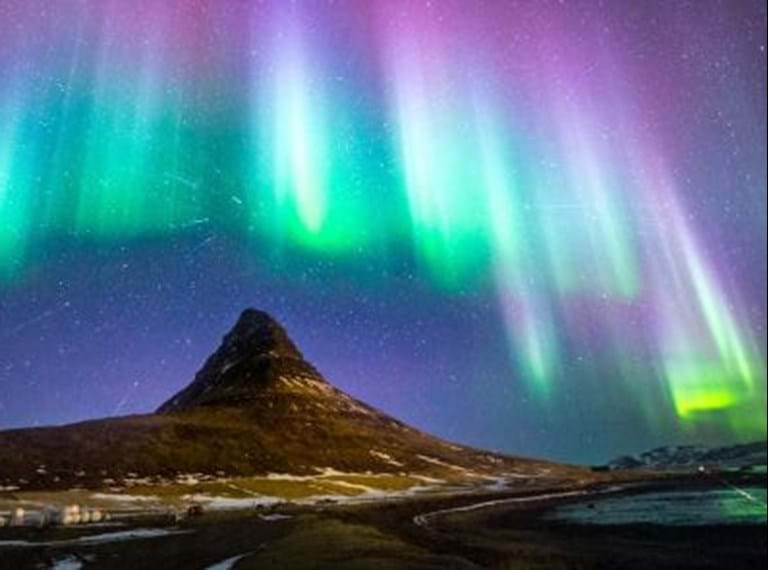

Discover Iconic Iceland

Discover the Blue Lagoon

Your chance to see the Northern Lights

Explore more on the Golden circle route
Iceland holidays.
Explore unbelievable landscapes on one of our 3 or 4-night Iceland Holidays. Truly unforgettable, the Land of Fire and Ice is home to some of the most enchanting natural wonders. Join us on a guided group holiday to make the most of your time here.
Holidays to Iceland
On our holidays to Iceland, we will explore the array of landscapes characterised by waterfalls, geysers, volcanoes, black sand beaches and steaming lava fields. With almost 80% of the country uninhabited, much of Iceland's terrain consists of plateaux, mountain peaks, fertile lowlands, and long, deep fjords and glaciers. It’s a great adventure!
From the Blue Lagoon to the city of Reykjavík, trips to Iceland include everything you want for every kind of holiday. The mesmerising natural geothermic spa is extraordinary and the capital presents architecture everyone can enjoy. We’ll also take the Golden Circle tour, visiting Gullfoss waterfall, Thingvellir National Park, active geysers and more.
An Iceland holiday wouldn’t be complete without the opportunity to see the Northern Lights. The incredible Aurora Borealis is an utterly unique experience, creating memories that will last a lifetime. Visit Iceland with us to explore this one-of-a-kind country, it’s amazing scenery and natural phenomenon.
Our Iceland holidays from Ireland include guided tours and transfers to the island's top sights, return flights and 3 or 4 star accommodation, all with a knowledgeable, local guide by our side to show us the way.

Guided Holidays To Iceland 2024
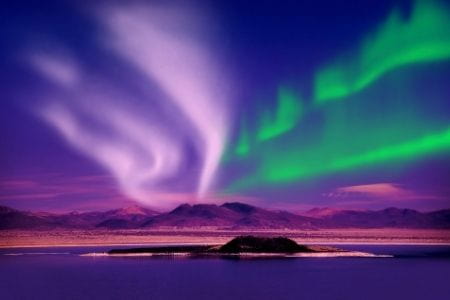
Iceland & the Northern Lights - 3 Nights
Fully Guided
Flights & Transfers
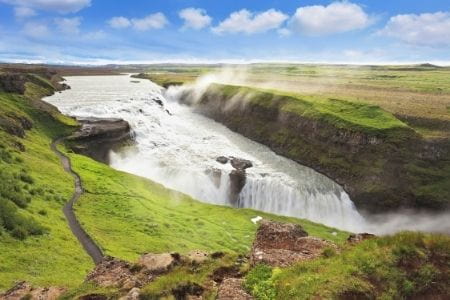
Iceland & the Northern Lights - 4 Nights
Top places to visit & tourist attractions in iceland.
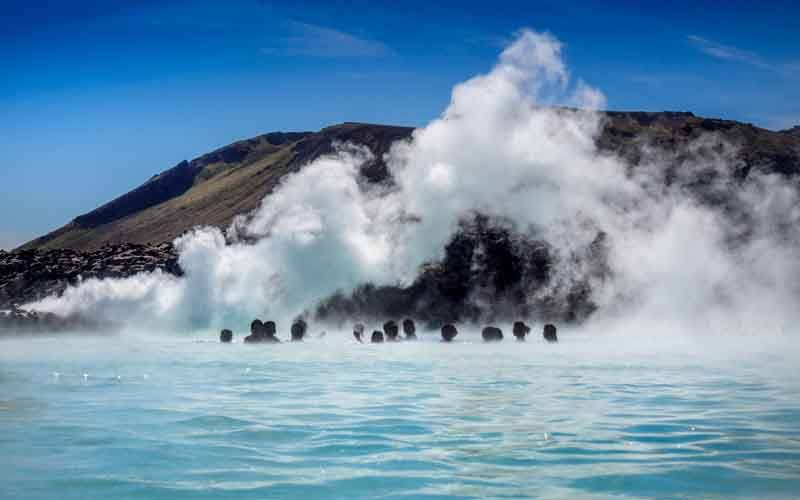
Blue Lagoon
The Blue Lagoon, a man-made geothermal spa, is located in a lava field on the Reykjanes Peninsula. The geothermal water originates 2,000 metres below the surface, where freshwater and seawater combine at extreme temperatures. It is then harnessed via drilling holes at a nearby geothermal power plant, to create electricity and hot water. On its way to the surface, the water picks up silica and minerals, before emerging at a soothing 38°C, perfect for a relaxing bathe. Our holidays to Iceland include day trips to the Blue Lagoon, with plenty of time for us to soak in the revitalising waters.
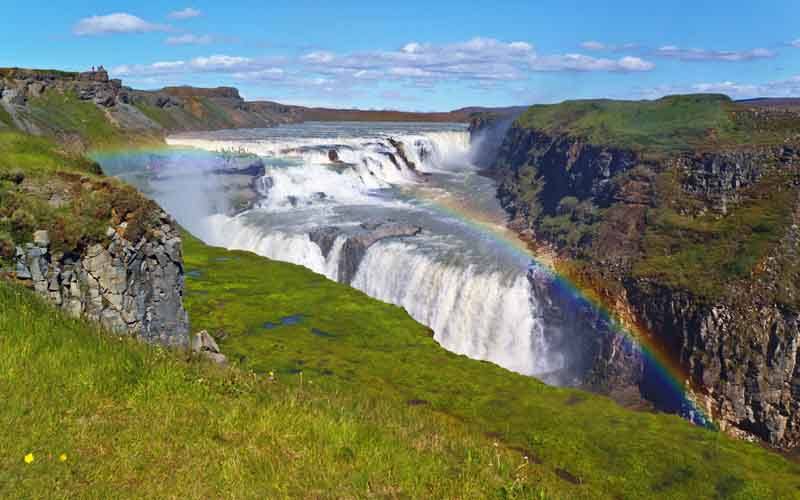
The Golden Circle
The Golden Circle is a driving route that offers some of the most stunning views of Iceland’s unique landscape. On this full day excursion, we’ll visit the UNESCO listed Thingvellir National Park, the site of a magnificent rift valley that marks the crest of the Mid Atlantic Ridge, and the home of the largest natural lake in Iceland. Next, we’ll see the spectacular Gullfoss or ‘Golden’ waterfall, named for the golden-brown colour of the water on a sunny day. Our last stop will be the active geothermal valley of Haukadalur to witness incredible spouting geysers.
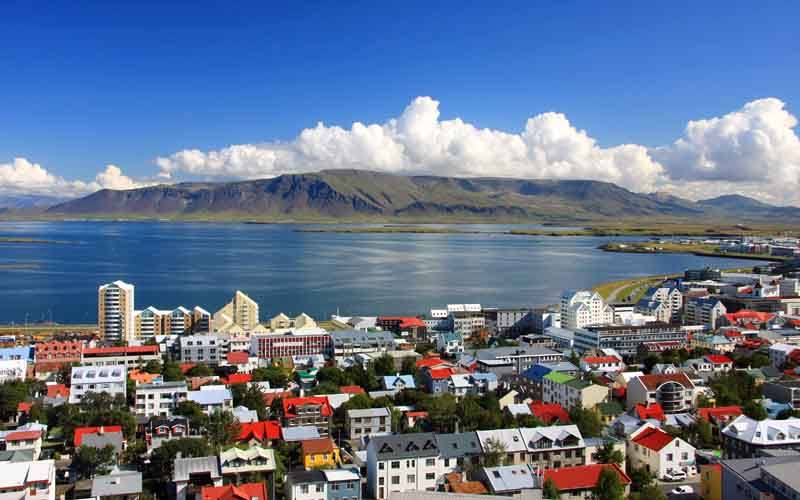
Reykjavík, the world’s northernmost capital, has a population of just 120,000. Known as the ‘Little city with the big heart’, this quaint city can be easily explored on foot. But don’t let its small size fool you, Reykjavík is a buzzing city with a lively café-culture and thriving art and music scenes. On our trips to Iceland, we’ll explore the highlights of Reykjavík including The Pearl visitor centre with its Saga Museum, Hallgrímskirkja Church, Reykjavík Harbour, Reykjavík 101 Centre and Solfar Viking Ship Sculpture. We’ll also learn about Iceland’s culture and history with the help of an expert, local guide
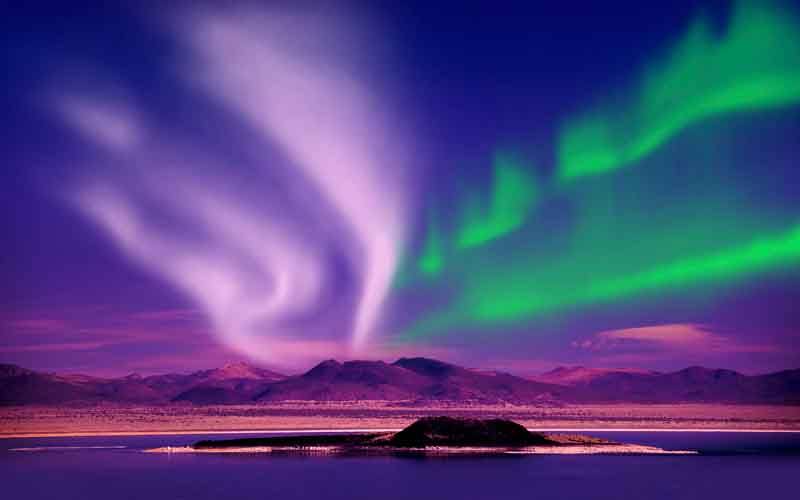
The Northern Lights
The main event on any trip to Iceland is the once-in-a-lifetime opportunity of seeing the Northern Lights. On our holidays to Iceland, we’ll enjoy an evening excursion to hunt for the incredible Aurora Borealis, a stunning colourful natural display that lights up the night sky. This elusive and unpredictable occurrence is never guaranteed but our experienced guides are the best in the business when it comes to analysing the weather patterns and atmospheric conditions to determine the best time and place to see the lights.
Iceland Holiday FAQs
Do i require a holiday visa to travel to iceland.
All visitors to Iceland must carry a valid passport. EU citizens do not need a visa. Non-EU citizens should check their requirements. UK citizens can find further information by visiting www.gov.co.uk
Will I be met at the airport when I arrive in Iceland?
Yes, you will be met at Keflavik airport. The approximate journey time to your hotel in Reykjavík from Keflavik is approximately 40 minutes.
What should I pack for my holiday in Iceland?
For travel outside the (cool-ish) summer period (June to September) it’s wise to wear plenty of warm layers. Winter temperatures vary between -10C and +10C and the wind chill factor cannot be underestimated. We recommend packing the following items for our trips to Iceland:
- Wind and rain-proof coat
- Wool socks and sturdy walking shoes / boots
- Warm hat, scarf & gloves
- Thick woollen jumpers and fleece lined clothing
- Bathing suit for the Blue Lagoon or other outdoor bathing venues
- Your reusable water bottle : the tap water in Iceland is excellent, and it’s free!
Is it safe to tour Iceland?
Iceland is regarded as a safe place. However, at any destination popular with tourists there can be opportunists and pickpockets. It is wise to be vigilant and always take good care of your personal belongings. Make use of the safe at your hotel, and carry a photocopy of your passport when out and about.
What kind of plugs / sockets are used in Iceland?
In Iceland the power sockets are of type C and F. These are the two prong outputs. The standard voltage is 230 V and the standard frequency is 50 Hz. To avoid any issues upon arrival we always recommend travelling with a universal adapter.
What advice do you have for tipping in restaurants while in Iceland?
Tipping is not customary in Iceland. More often than not there will be a service charge on your restaurant bill. However, if you are happy with the service and would like to tip, the recommended amount is 10%.
Is Iceland expensive?
Iceland can be expensive. For everyday purchases, look out for Bónus, a basic supermarket chain where essentials can be bought at more realistic prices than in convenience stores. Quirky mementos of your visit and good prices can be found at the Kolaportið weekend flea market in Reykjavik’s Old Harbour area. Also worth checking out is the Red Cross thrift shop on Laugavegur Street. Look out for afternoon/evening ‘Happy Hour’ in bars and restaurants, for discounted beer and wines.
When is the best time to see the Northern Lights in Iceland?
Whilst s ightings of the Northern Lights are subject to weather and atmospheric conditions and cannot be guaranteed, usually the best time to see the Northern Lights is between October and April.
Reviews, Travel Tips & Advice To Inspire Your Next Iceland Holiday
Inspiration by country, visit iceland: top activities to see and do.
- 28 July 2023

Inspiration by Country Special Interests
Top 20 lifetime travel experiences.
We’ve selected just some of the top places and travel experiences for you to tick off your travel list for 2024.
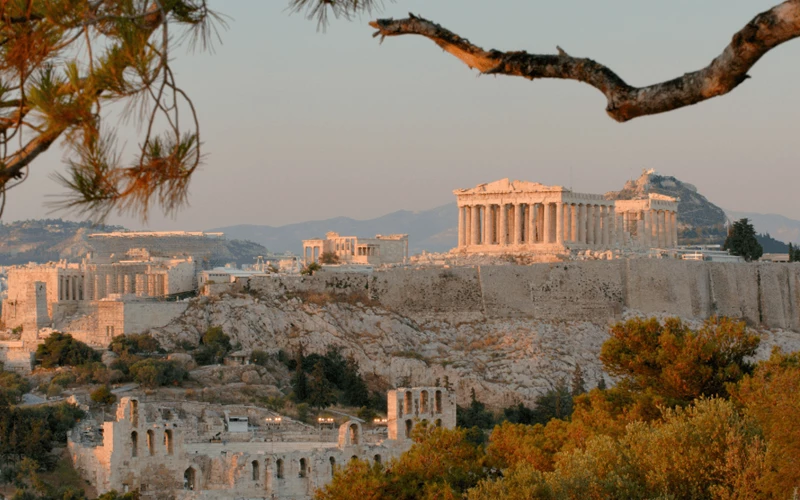
Top 10 European Countries You Must Visit in 2024
Europe has undoubtedly the greatest choice of holiday destinations in the world and most can be reached within a couple of hours. ...

Be the first to know about our holiday updates, travel tips and special offers.
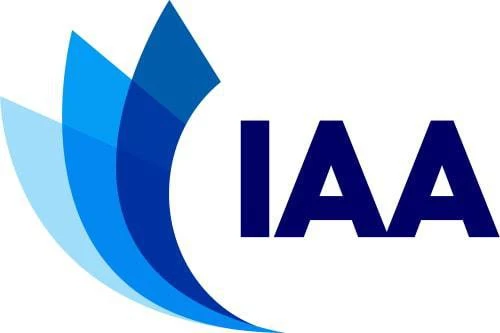
Sign up to our newsletter and don't miss out on our latest holiday updates, travel tips and special offers.
Terms & Conditions Apply
You will now be redirected to our sister website TD active. Click on the link below to proceed or close this window to cancel.
Proceed to TD active
Update April 12, 2024
Information for u.s. citizens in the middle east.
- Travel Advisories |
- Contact Us |
- MyTravelGov |
Find U.S. Embassies & Consulates
Travel.state.gov, congressional liaison, special issuance agency, u.s. passports, international travel, intercountry adoption, international parental child abduction, records and authentications, popular links, travel advisories, mytravelgov, stay connected, legal resources, legal information, info for u.s. law enforcement, replace or certify documents.
Share this page:
Iceland Travel Advisory
Travel advisory july 26, 2023, iceland - level 1: exercise normal precautions.
Last Update: Reissued with updates to health information.
Exercise normal precautions in Iceland.
Read the country information page for additional information on travel to Iceland.
If you decide to travel to Iceland:
- Enroll in the Smart Traveler Enrollment Program ( STEP ) to receive Alerts and make it easier to locate you in an emergency.
- Follow the Department of State on Facebook and Twitter .
- Review the Country Security Report for Iceland.
- Visit the CDC page for the latest Travel Health Information related to your travel.
- Prepare a contingency plan for emergency situations. Review the Traveler’s Checklist .
Travel Advisory Levels
Assistance for u.s. citizens, iceland map, search for travel advisories, external link.
You are about to leave travel.state.gov for an external website that is not maintained by the U.S. Department of State.
Links to external websites are provided as a convenience and should not be construed as an endorsement by the U.S. Department of State of the views or products contained therein. If you wish to remain on travel.state.gov, click the "cancel" message.
You are about to visit:
About Iceland
Visa information, geography of iceland, general information, the northern lights, volcanic eruptions, sustainable travel, iceland academy, plan your trip, how to get there, accommodation, things to do, map your journey, getting around, visitor numbers, carbon footprint, destinations, the regions, scenic routes, national parks, trip suggestions, towns & villages, inspiration, food and beverages, lbgt+ travel.
- Skip to right header navigation
- Skip to main content
- Skip to secondary navigation
- Skip to primary sidebar
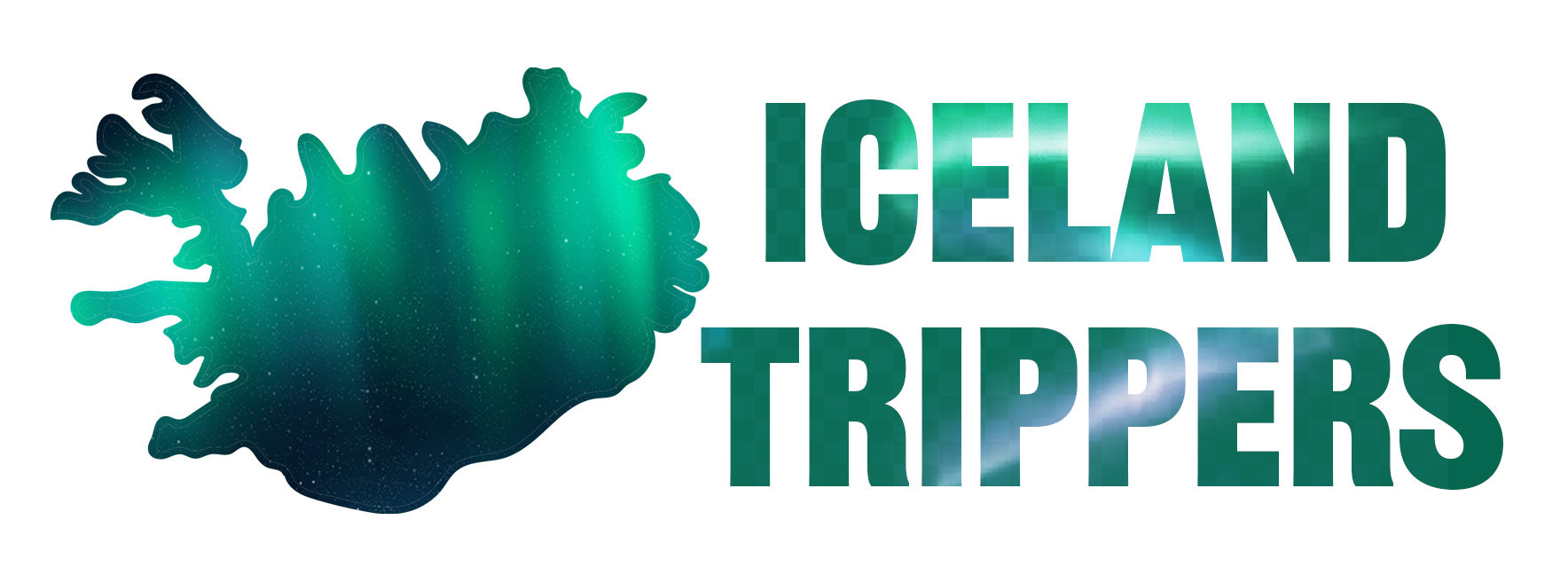
Learn how to easily plan your dream trip to Iceland with helpful guides and tips!
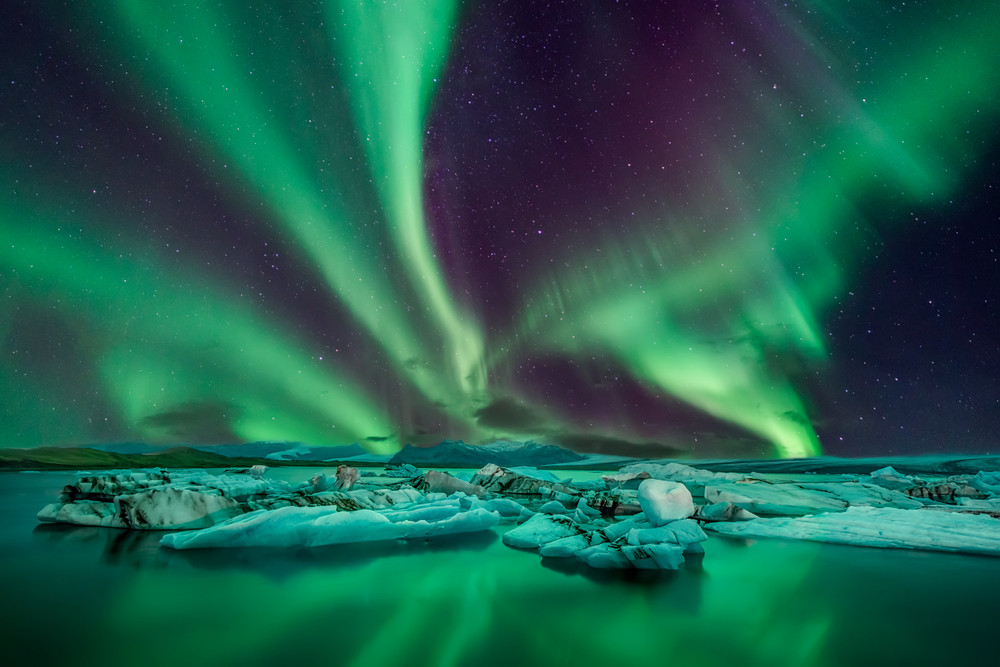
25 Important Iceland Travel Tips To Know Before You Go
August 19, 2021 // by Iceland Trippers // Leave a Comment
Booking your ticket to Iceland is just the first step. We’re here to help you continue your trip planning by providing you with the most important Iceland travel tips you’ll need to know before setting foot in the land of fire and ice.
Our tips for visiting Iceland range from safely navigating the roads to planning ahead whether it’s booking tickets at the famous Blue Lagoon or figuring out where to get gas on a road trip. These Iceland tips are not meant to be overwhelming but rather ensure you maximize your time in the country and do it all safely.
Iceland has so much natural beauty to offer, and with these 25 Iceland travel tips in mind, you’re in for the trip of a lifetime!
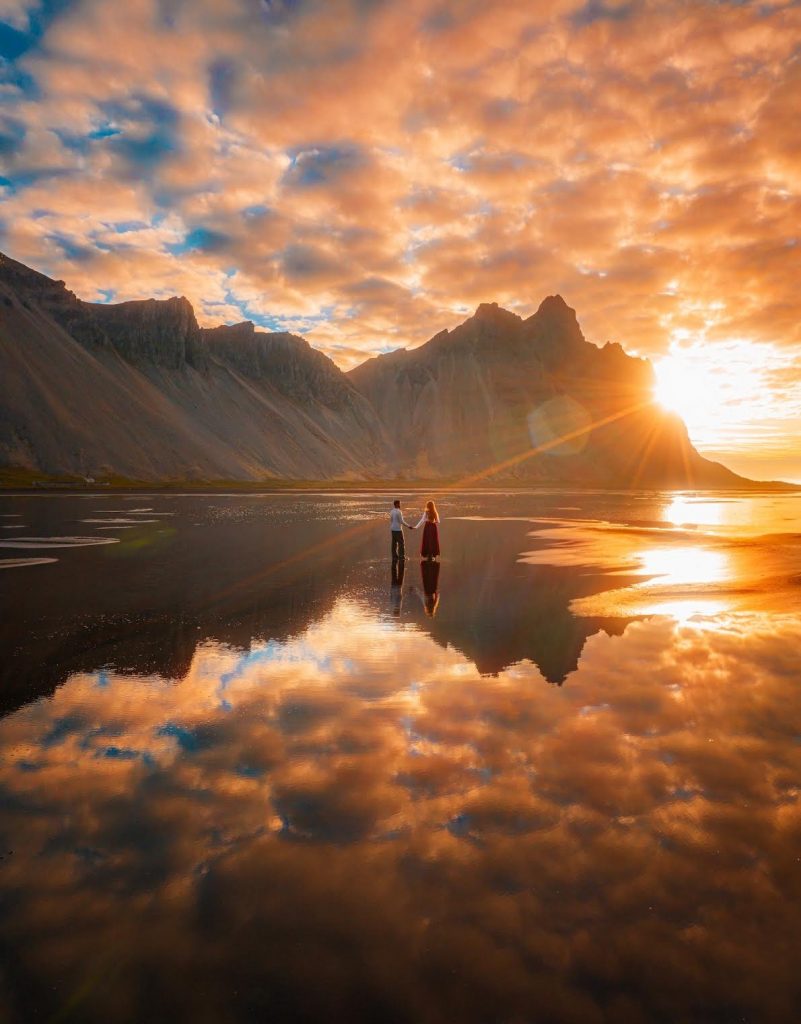
25 Important Iceland Travel Tips
Don’t walk on the moss.
As mighty and majestic as much of Iceland’s natural wonders are, the moss you’ll see carpeting the lava fields is particularly fragile. Under the absolute best circumstances, the moss grows a mere 1cm per year, which means even minimal damage is particularly severe.
Unfortunately Justin Bieber’s trip to Iceland to shoot his “I’ll Show You” music video was particularly damaging to the natural environment. Having gone off the path frolicking among the moss fields, his actions in turn led subsequent tourists to do the same.
In fact, after tourists came flocking to Fjaðrárgljúfur Canyon (one of the music video locations), trampling the moss on the edge of the canyon walls, the Environmental Agency of Iceland was forced to temporarily close down the canyon to help restore the natural landscape.
This is one of our most important tips for visiting Iceland because not many people understand the extent of the damage being done. We understand the appeal of venturing off the beaten path particularly in a natural wonderland as spectacular as Iceland, but the country will only continue to be the strikingly beautiful place it is if those who visit treat it with the respect and care it deserves.
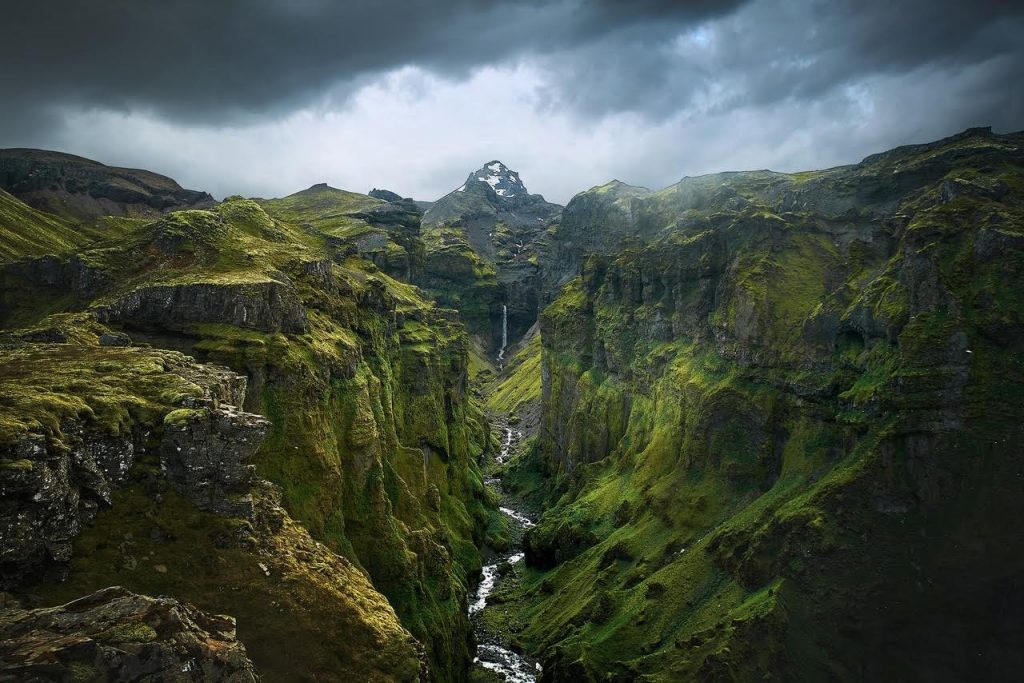
Bring A Reusable Waterbottle And Drink The Tap Water
One of the best Iceland travel tips we can give you is to bring your own reusable water bottle. Why? Because, there’s no use buying bottled water when you have access to the most pristine, delicious water right out of the tap.
The bottled water you buy at the stores is the exact same water that comes out of the tap. So why buy expensive water when there’s an easy, more environmentally friendly, FREE solution.
Iceland’s water is closely monitored to ensure you’re drinking only the best. Free of nitrate, calcium, and chlorine, this pure water from Iceland’s natural springs is some of the best, most fresh-tasting water you’ll ever have the pleasure of drinking.
You might notice that the hot water out of the tap has a rotten-egg like smell from the sulfur as a result of it being geothermally heated. While you may not appreciate that smell, you’ll find the problem is easily remedied by turning the tap all the way to the coldest setting to get all the drinking water you could ask for to fuel you for your Iceland adventures.

Visit In The Offseason
Summer in Iceland is magical with the arctic lupines blooming and the glow of the midnight sun, however it’s not the only spectacular time of year in the land of fire and ice. Not only will planning a trip to Iceland in the offseason likely save you money, but it allows you to experience something new about the country.
For example, you might consider visiting Iceland in December to have a shot at seeing the Northern Lights, bask in the light of the New Years Eve fireworks displays, and laugh at the mischievous actions of the Icelandic Yule Lads around Christmas. You might also catch some of Iceland’s most famous waterfalls in their frozen wintry glory as a layer of white drapes the landscape around it.
Or maybe you’d prefer Iceland in October when you can head to Húsavík to catch the end of the whale watching season or stay in Reykjavik and enjoy the International Film Festival.
You might think that you’re trading cheaper flights and smaller crowds for an inferior trip experience, but we can guarantee you that’s not the case. No matter what time of year you visit this remarkably unique country, you’re in for an experience you won’t soon forget.
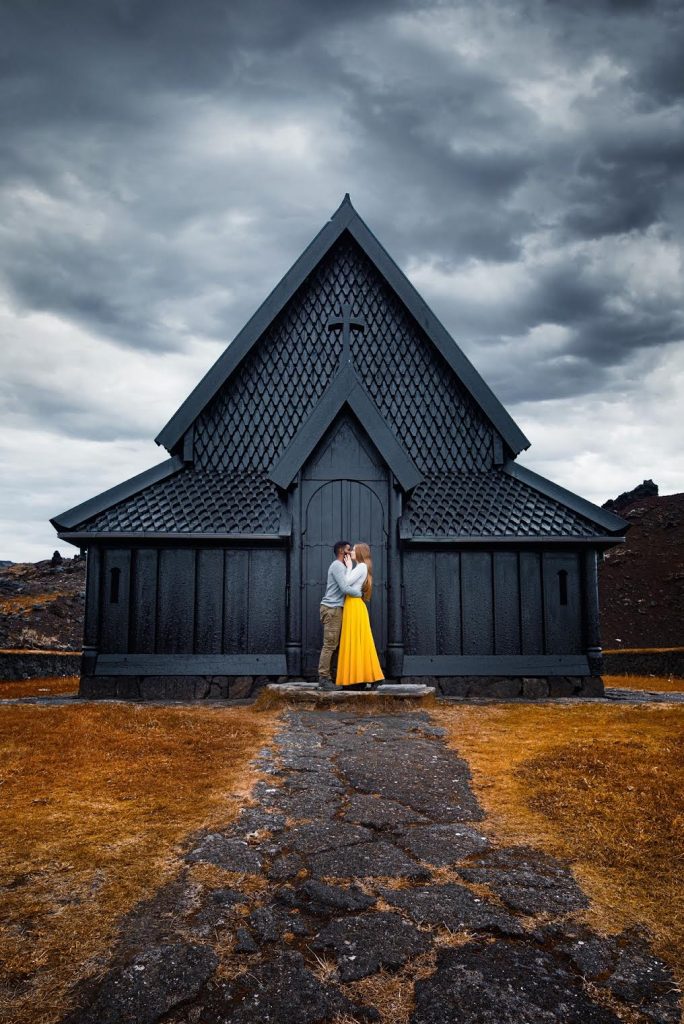
Pack For Every Kind Of Weather
Iceland’s weather is notorious for being all over the place which means it’s crucial that you come prepared for anything. If you’re thinking of planning a trip to Iceland, cold weather gear is a must, even in the summer.
Icelanders have a term called Gluggaveður (window weather) which refers to the moments where you look out the window and you see the sun shining and clear skies and assume it’s a lovely day when in fact you step outside and it’s freezing. Though with an average of 213 rainy days a year, sunshiny days make limited appearances.
That being said, whatever weather might be thrown your way, it shouldn’t prevent you from partaking in your various adventures. After all, Iceland’s appeal lies in its natural beauty.
So lace up your waterproof hiking boots, zip up your parka, and head out to explore Iceland’s spectacular natural landscape. As long as you come prepared and pack for every kind of weather , you’re in for a once in a lifetime experience.
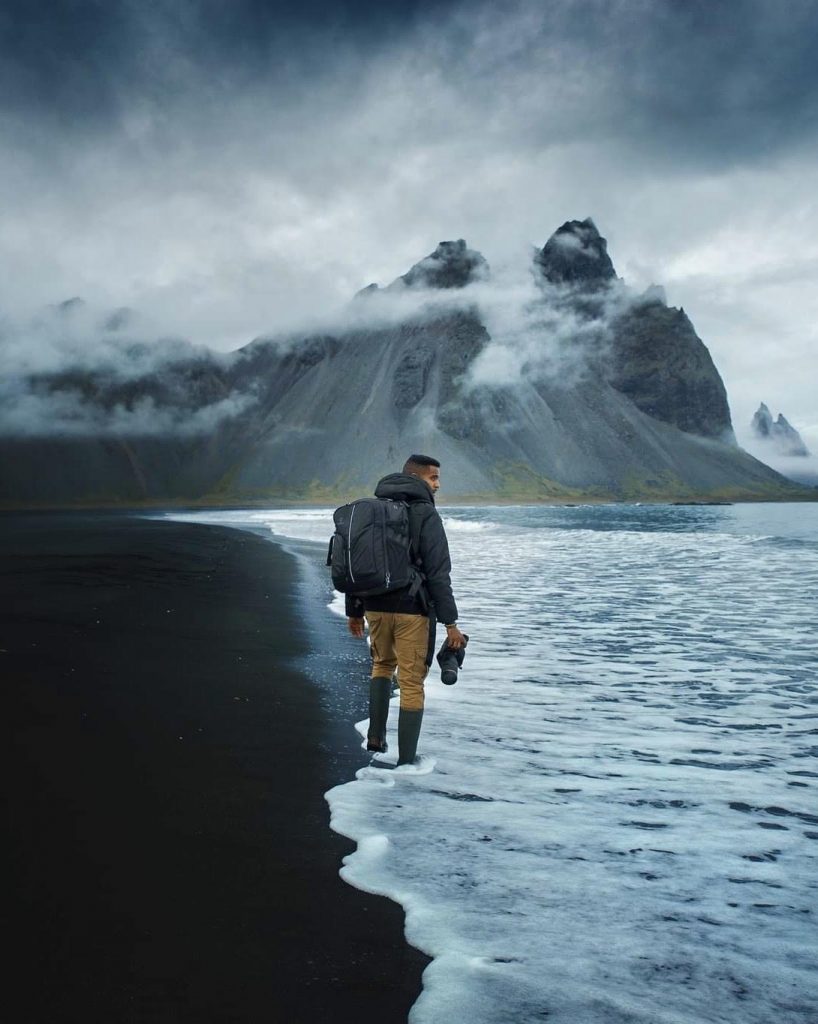
Buy Alcohol At The Duty-Free Shop
If you think you’re going to want to have a beer or two…or more during your vacation, one of the best Iceland travel tips we can offer is to buy tax-free alcohol from the Duty-Free shop at the Keflavik International Airport when you arrive. You’re allowed to purchase 6 units of alcohol from the Duty-Free shop. To determine exactly how much of each type of alcohol that is, use the Duty-Free allowance calculator .
If you forget to buy your alcohol at the airport or opt for drinking at the bars or enjoying a glass of wine with dinner instead, just be prepared to dish out significant amounts of money. If you’re committed to enjoying your drinks in this manner, consider venturing out earlier in the evening to take advantage of a Happy Hour. The Reykjavik Appy Hour app is the best way to scout out the cheapest happy hours around the city.
There is a third option, and that is to buy your alcohol like the locals do at the Vínbúðin liquor stores. Unfortunately on top of being expensive, these stores often close at 6pm and are closed altogether on Sundays which means planning ahead is crucial. Beer in Iceland is very expensive!
Unlike in the United States, it’s not possible to buy alcohol at grocery stores. The closest thing you’ll find is a Pilsner which resembles beer but is only 2.23% alcohol and is used for cooking rather than drinking. So as you begin planning a trip to Iceland, think about what you’re willing to spend on alcohol and hit up the Duty-Free shop if you’re looking to save some money.

Only Camp At Designated Campsites
Camping in Iceland has the potential to be nothing short of magical as you immerse yourself in the unique natural landscape of the country. There are however some things to know before going to Iceland and marching out into the wilderness with your tent or camper van .
First of all, if you intend to camp while visiting Iceland, make sure your trip is planned between May and September when the campgrounds are open. Yes, there are a small handful of campgrounds open all year round, but as you might expect the weather gets particularly harsh in the winter, the skies go dark, and camping becomes far less appealing even in a camper van.
Perhaps one of the most important camping tips for visiting Iceland is that you must always camp at designated campsites. This rule is largely enforced in an attempt to preserve Iceland’s natural landscape.
There is a little bit of wiggle room in the rules for tent campers. For example, you could pitch a tent in the highlands or on cultivated land, near residential buildings, or fenced off farmland if you’ve gotten permission from the landowner to do so.
In short, to ensure all camping rules are being followed it’s best to stick to the designated campsites. Trust us, when you see the dramatic mountains or cascading waterfalls that surround the designated campsites as well as the amenities they offer you won’t have any complaints.
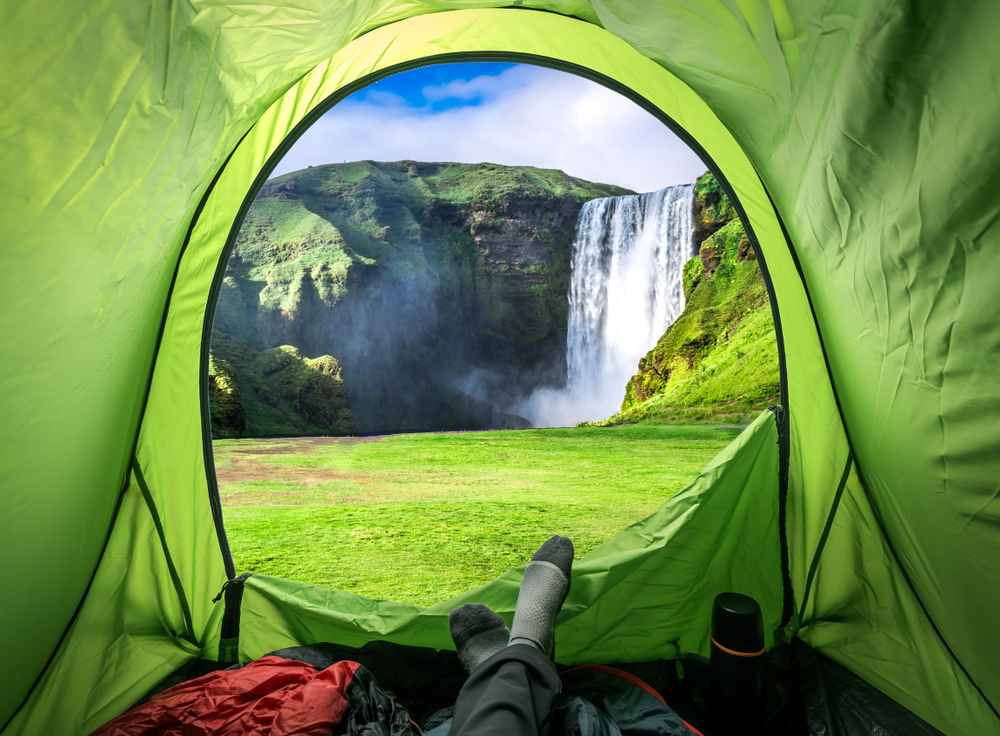
Follow The Rules At Public Swimming Pools/Lagoons
There’s nothing better than relaxing in the warm waters of a hot tub, hot pot, or lagoon on a cold Icelandic day, but before you settle in, there are some Iceland tips you should know about when visiting the pools. The public pools and lagoons have signs in the locker rooms explaining the rules, so take a moment to read through them when you arrive.
Perhaps the most important rule (and most unusual rule for many Americans) is that you are required to shower naked before entering the pool. When you’ve thoroughly washed up with soap and water you’ll put on your bathing suit, leave your towel in the locker room cubbies, and head out to the pool or lagoon area.
While you may be hesitant or nervous about showering naked if it’s not something you are accustomed to, we can assure you that none of the locals around you care that you’re naked as it’s part of the culture and routine they’ve grown up with all their lives.
Some pools have a handful of individual showers with doors or curtains that close if you’re feeling particularly uncomfortable. But whatever you do, do not try sneaking out to the pool without showering because you will be stopped by the pool staff.
When you’re done at the pool, you’ll shower again, take off your bathing suit and wring it out, and dry off thoroughly by the showers before heading back to your locker to get changed.
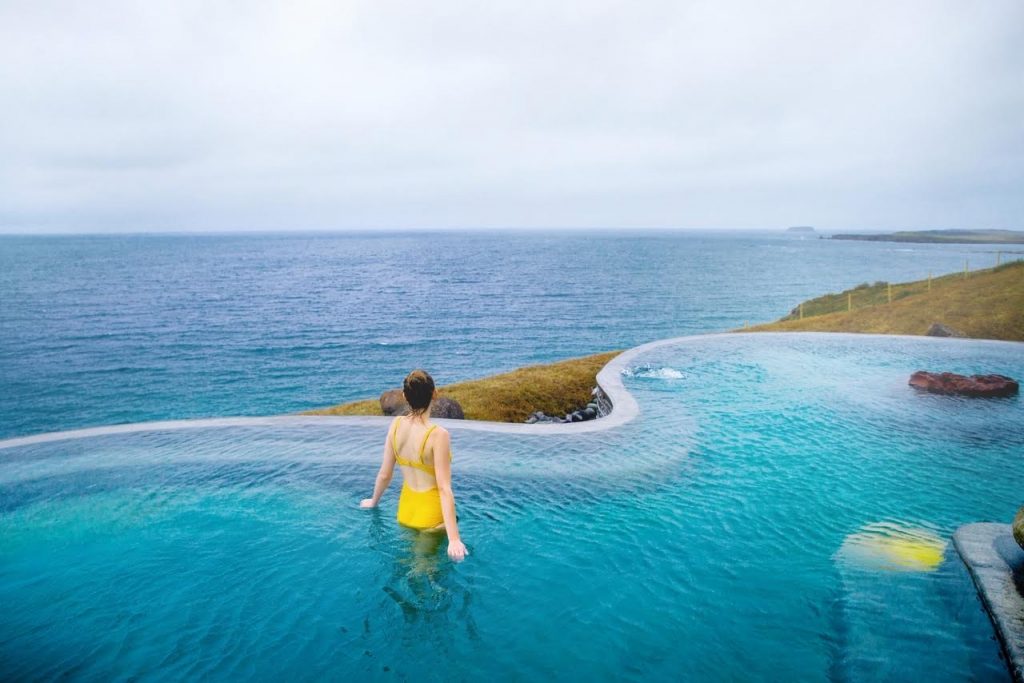
Book The Blue Lagoon Well In Advance
For many tourists, a visit to the famous Blue Lagoon is one of the first stops if not the first stop they make when arriving in the country. Due to its proximity to the Keflavik International Airport, many people will go straight from the airport to the lagoon for their first taste of this enchanting land.
From its relaxing, healing waters to the mud masks and drinks at the swim-up bar, it’s no wonder the Blue Lagoon is a tourist hot spot.
One of the best Iceland travel tips we can offer for those trying to make the Blue Lagoon a part of their trip itinerary is to book ahead ! In order to regulate the number of people in the lagoon at one time, the tickets are divided into time slots and unsurprisingly they fill up quickly, sometimes weeks and months in advance.
If your plans don’t come together until the last minute you can still check the Blue Lagoon website to see if there’s been a cancellation and a spot has opened up, but if you have the opportunity to book ahead of time, we highly suggest you do.
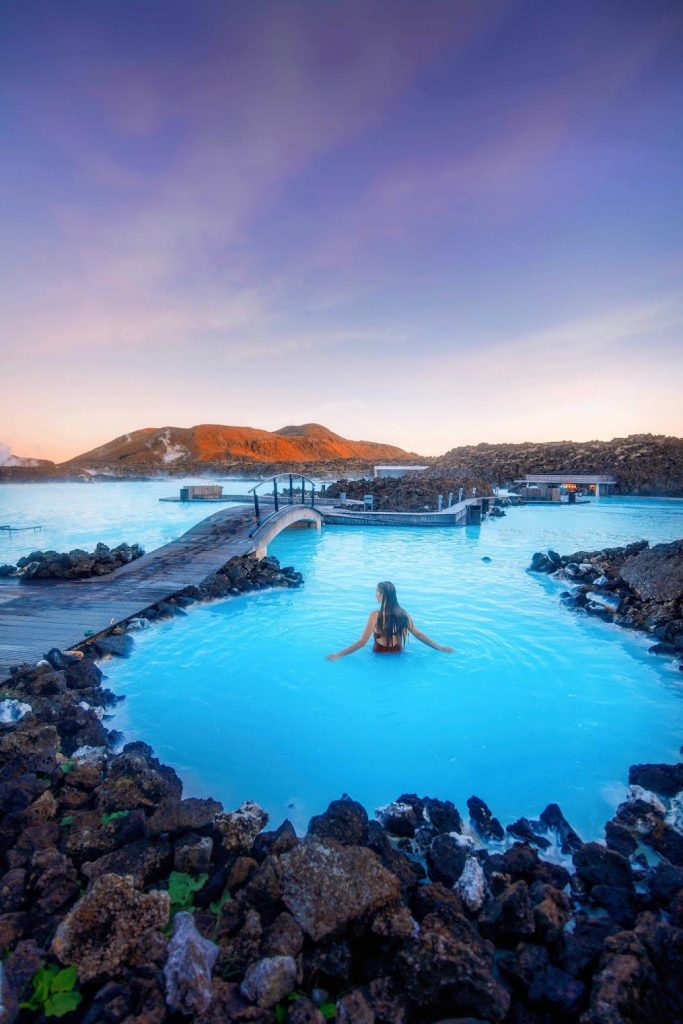
Bring A Credit Or Debit Card With A PIN
Carrying around cash during your trip is largely unnecessary unless you’re planning on tipping your tour guides. While it certainly doesn’t hurt to take out a small amount of Icelandic krona, your credit or debit card will be your best friend.
You likely already carry your credit or debit card around with you, but the real kicker that makes this one of the most important Iceland travel tips to keep in mind is that your card must have a PIN. You can use your card nearly everywhere including grocery stores and restaurants, but in order to fill up at the gas station, you have to be able to input a PIN.
There are alternative options such as buying a prepaid gas card or paying with cash at select stations, but if you own a card with a PIN we highly suggest using your credit or debit card to keep things simple.
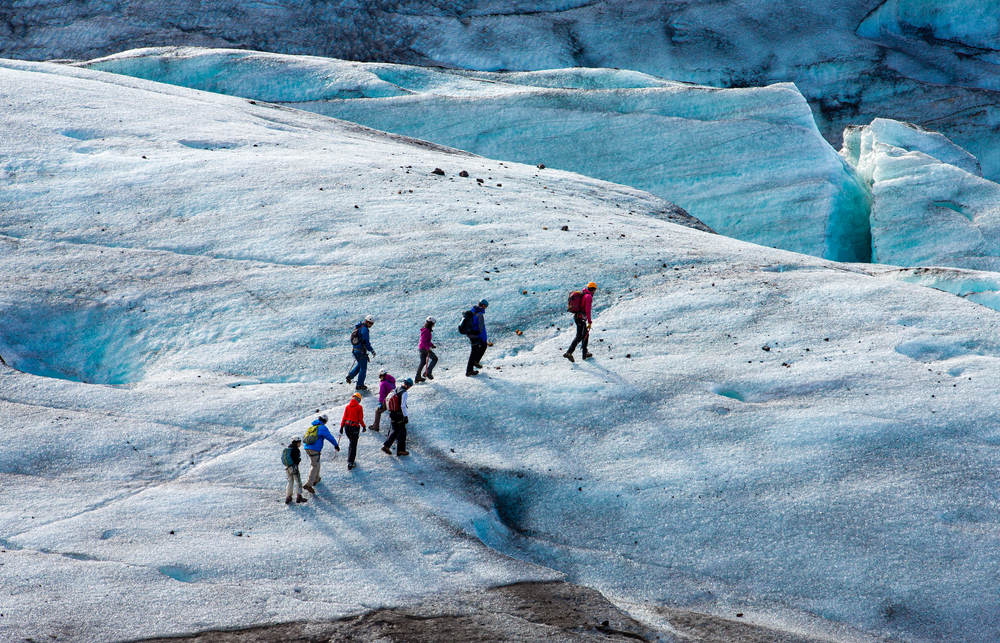
Don’t Take Risks When Driving
While Iceland’s paved roads are fairly easy to navigate in the summer, they become particularly tricky and sometimes dangerous in the winter months when the roads turn icy. It’s at that time of year that many of the more remote roads around the island are closed down because they become impassable or too dangerous to drive.
It’s critical that you check the road conditions before heading out on your next adventure. While search and rescue teams are available to come to your aid should you absolutely need them, you never want to put yourself in a situation where you might have to rely on them.
One of the most common situations that need rescuing is when tourists are overconfident and reckless with their driving. Whether that means crossing the river in a dangerous place, trying to drive too fast on a pot-hole-filled, rocky highland road, or being too stubborn to stop and wait out a snowstorm, these kinds of incidents are all too common.
Iceland’s weather changes sometimes by the minute so one of the best Iceland tips we can offer is to constantly monitor the weather. If you’re patient, the weather is sure to clear enough for you to continue exploring safely.
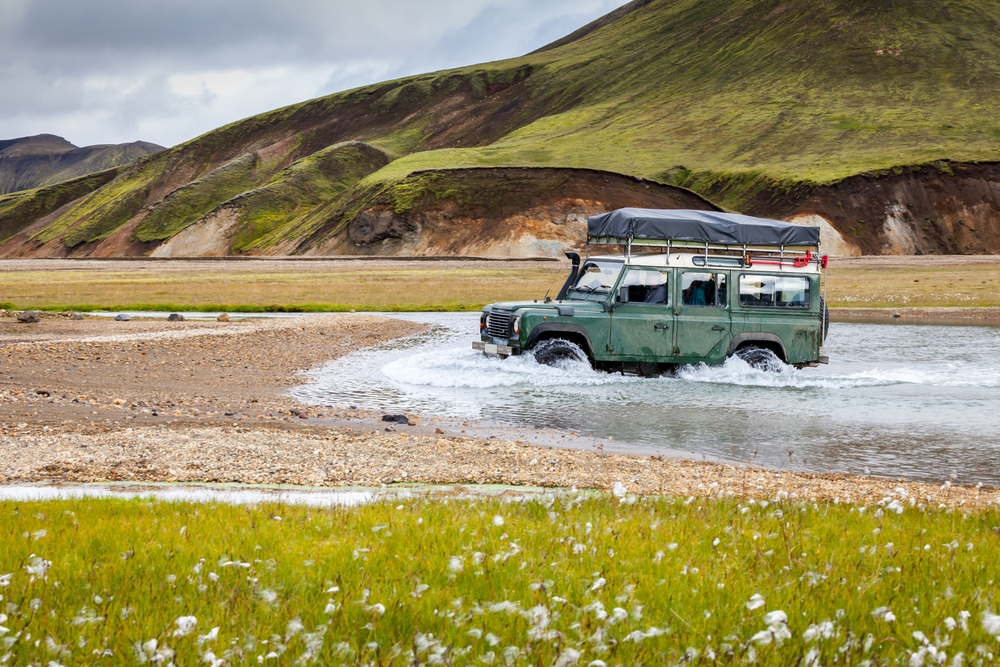
Explore Beyond The Tourist Hot Spots
When planning a trip to Iceland, don’t limit yourself to the tourist hot spots. The Golden Circle , which includes the Gullfoss Waterfall, Strokkur Geyser, and Thingvellir National Park is Iceland’s most popular tourist route, but it’s not the only route worth taking while visiting the country.
Iceland’s beauty extends well beyond the capital and some of its most jaw-dropping stunners are hidden gems. The tourist stops along the Golden Circle are great introductions to Iceland’s natural landscape, particularly if you’re short on time, but if you have the opportunity, we highly suggest exploring beyond the most famous locations.
Think of gazing at the reflection of the dramatic jagged Vestrahorn mountain, or watching the puffins from the Látrabjarg cliffs in the Westfjords . Perhaps you can end the day soaking in the Drangsnes hot pots while gazing out at the oceans. You’ll miss so much if you don’t expand your horizons and explore all that the country has to offer.
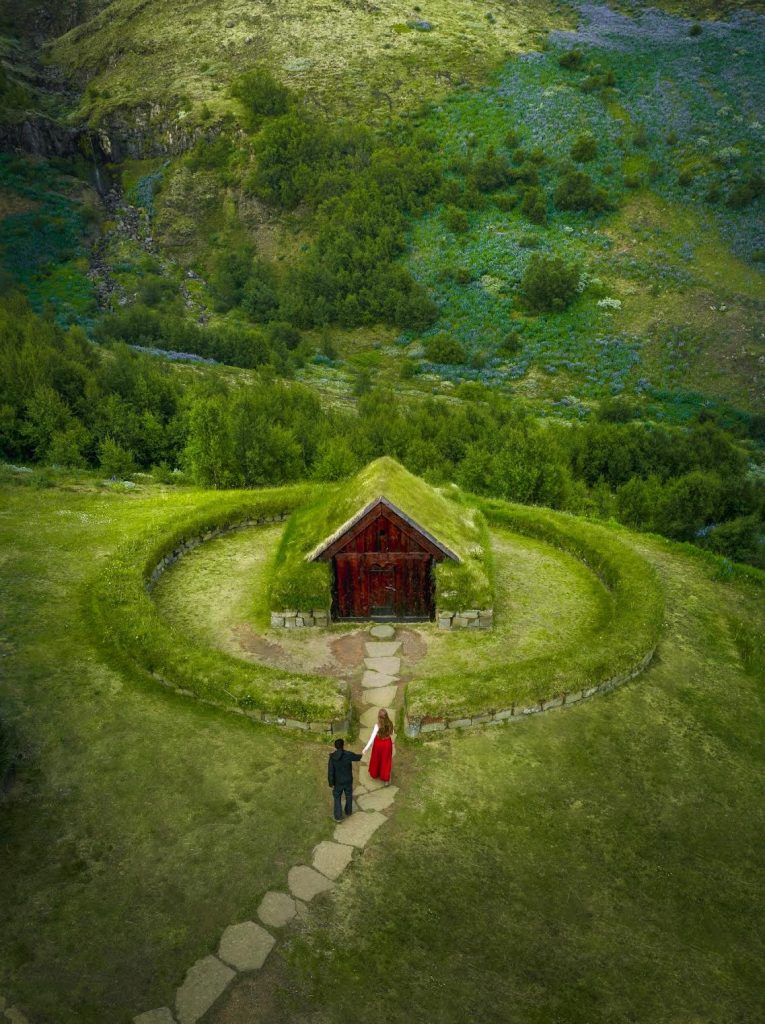
Set Realistic Expectations For Northern Lights Hunting
So you’ve planned a winter vacation to the land of fire and ice and are anxious to see the spectacular Northern Lights show during your trip. You might have the great fortune of experiencing a once in a lifetime evening of watching the green and purple lights dance in the sky above you, but the reality is it’s equally likely you’ll leave having never seen the Northern Lights at all.
One of the best Iceland travel tips for winter that we can give you is that the Northern Lights are fickle. Like anything in nature, they march to the beat of their own drum and require the perfect conditions to be visible. It’s also possible that you might see a faint hint of the lights that are far less spectacular than the vibrant streaks of light you’ve seen in photographs online.
Many tourists come to the country assuming that as long as they arrive between September and April they’re guaranteed to see the Northern Lights. This unfortunately is just not the case. Even venturing out with a tour guide who hunts the Northern Lights for a living won’t guarantee that you’ll see them. The main thing you have to keep in mind is it’s absolutely not the fault of the guide. That’s just nature for you.
We sincerely hope you’ll have the luck and pure joy of seeing the Northern Lights during your visit. We suggest tracking the aurora activity and venturing out to a dark sky area to give yourself the best chance of seeing them. The Northern Lights are notoriously elusive however, so please set your expectations accordingly.

Don’t Eat Out For Every Meal
Food at restaurants, like most things in Iceland, tends to be incredibly expensive. You might find it’s worth it to go out to eat whether you’re enjoying wonderfully prepared, authentic Icelandic dishes or are feasting on the best Indian food or sushi the country has to offer. Or maybe you’re just really in the mood for a solid burger or delicious thin crust pizza and aren’t in the mood to cook.
How much money you’re willing to spend is entirely your own decision. If however you’re hoping for some travel tips for Iceland that will save you save a few bucks or you just enjoy cooking your own food, then heading to the grocery store to find what you need to prepare your own meals is potentially a great option.
Picking up food from the grocery store can also be a great option for road trips. You can prepare snacks or lunches to bring along with you to maximize your time out in nature and avoid having to search for restaurants in small towns. Bonús, Kronan, and Nettó will be your best, least expensive grocery store options, while the more expensive Hagkaup offers longer hours and a larger selection of goods.

Visit Iceland On An Icelandair Stopover
Perhaps you have a trip planned to a European country but have always dreamed of visiting Iceland. You’re in luck because as long as you fly Icelandair across the Atlantic, you can stop in Iceland for no additional cost for 1-7 days. And just like that, you can have the best of both worlds.
Who doesn’t enjoy trips for traveling to Iceland that save you money? This way you don’t have to go out of your way to make a special trip to the land of fire and ice. Icelandair started the stopover as a way to promote tourism and as a result, it’s been drawing people in from around the world ever since.
Whether you’re just stopping in for a day to see why everyone’s raving about the Blue Lagoon and to find out what the Golden Circle is, or you’re gallivanting around the island for a week experiencing as much of the dramatic, awe-inspiring natural landscape as you have time for, you’re in for a real treat.

Take Advantage of the Midnight Sun
There are many things about summer in Iceland that attract tourists, and the midnight sun has to be on that list. Have you ever been on a vacation where you’re having a blast and wish there was more time in the day? You’ll never have this problem during the summer in Iceland.
One of the best Iceland travel tips we can offer is to take advantage of the midnight sun. The midnight sun refers to the fact that during the summer months the sun almost never sets and hovers low in the sky before rising again. This means endless hours for adventures.
Consider heading out for a late-night hike, or maybe go for a drive to a remote hot pot and soak in the warm water as the beautiful landscape around you glows with a soft light. It’s thrilling and magical to be out at midnight enjoying this unique country.
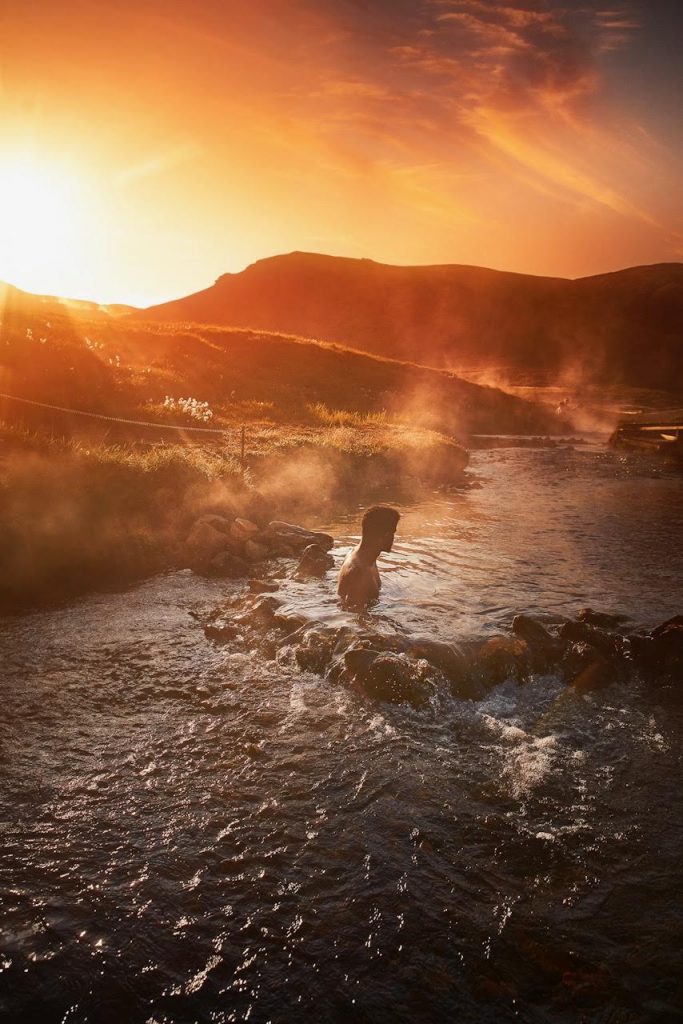
Properly Navigate The Roundabouts
You would think that basic traffic rules such as navigating roundabouts (which we have here in the US) would be pretty self-explanatory, but it happens to be a common cause of accidents among tourists, and therefore is on our list of things to know before going to Iceland.
Iceland’s roundabouts have an inner lane and an outer lane and the inner lane always has the right of way. Accidents tend to occur when locals try to exit the roundabout from the inner circle knowing they have the right of way, and tourists continue driving on the outer circle assuming the cars on the inner circle have to yield to them.
The only reason you should be in the outer lane is if you are taking the first exit in the roundabout. Otherwise, you should always be in the inner lane to help traffic flow smoother and make the exit more seamless.
Always use your indicator when exiting a roundabout to make it obvious to the vehicles around you that you’re making your move, and never switch lanes once you’re in the roundabout. Roundabouts are incredibly efficient when everyone knows the rules, but can be dangerous when there’s confusion, so make sure you understand the rules ahead of time to keep things simple and safe.
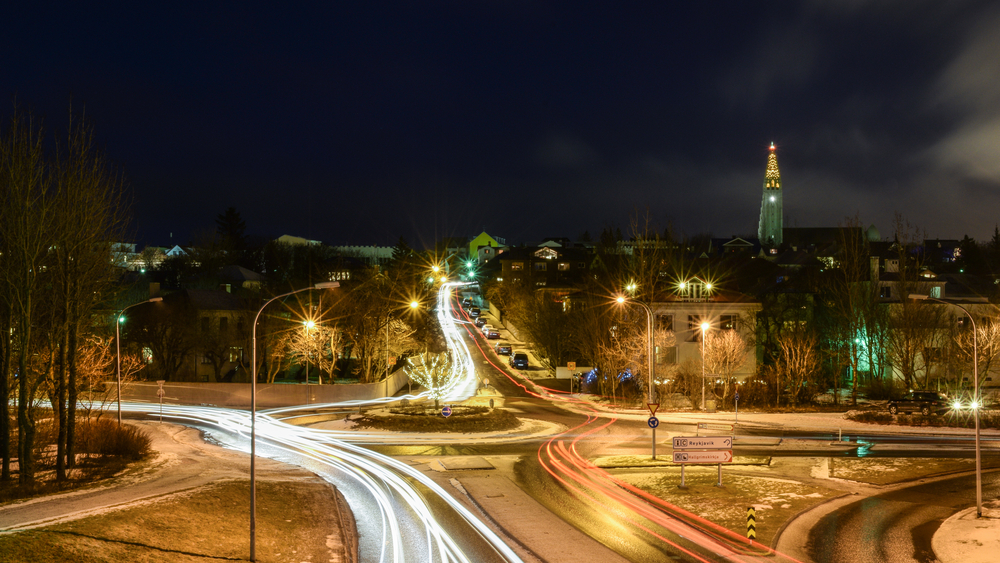
Bring Your Bathing Suit
As you step out of the airport into the chilly Icelandic air you might be wondering why we’ve suggested you bring a bathing suit. Believe it or not, this is one of the Iceland tips you’ll be thankful you knew about ahead of time.
You may not be sunbathing on the beaches, but you’ll certainly have plenty of opportunities to spend time in the warm waters of the pools and hot springs. Nearly every town in Iceland has a public swimming pool complex complete with one or more hot tubs of differing temperatures.
In addition to the public pools, the country is full of natural, geothermally heated hot pots , many of which are surrounded by some of the most picturesque landscapes you can possibly imagine. Think of yourself thawing out and relaxing in the warm water with a backdrop of the ocean and a striking mountain range while lacy snow falls around you. Sounds pretty perfect, doesn’t it?
If you’ve begun planning a trip to Iceland you’ve likely heard of the famous Blue Lagoon or perhaps the Secret Lagoon or the Myvatn Nature Baths (which are considered the Blue Lagoon of the north). All of these and more are perfect excuses to whip out your bathing suit. Rain or shine, any time of year, bringing a bathing suit to Iceland is always a good idea.
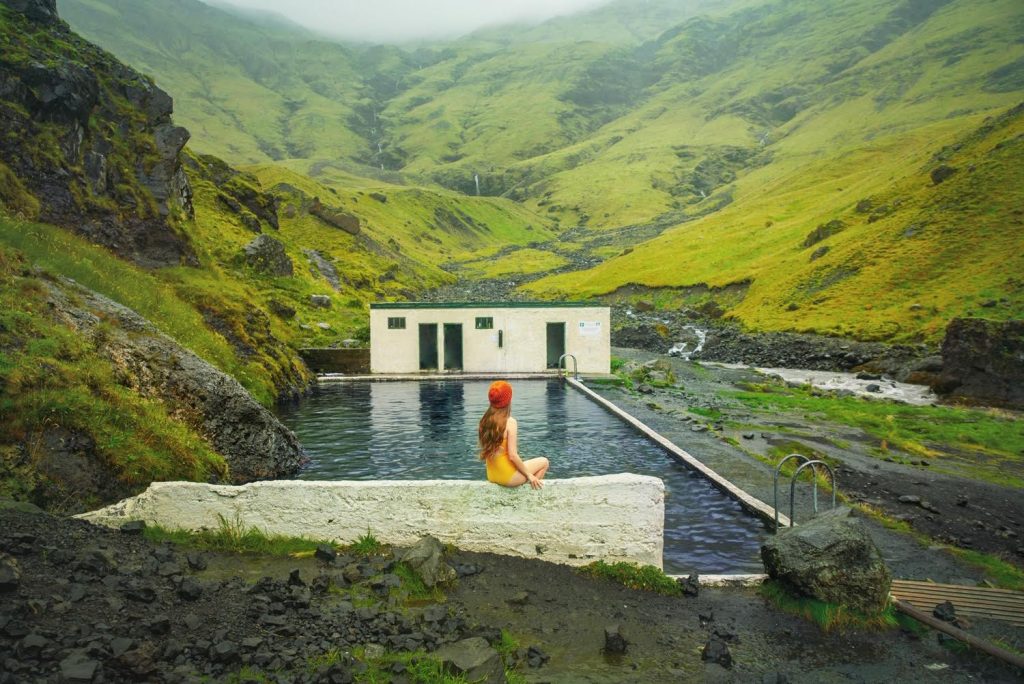
Watch Out For Sneaker Waves At The Beach
All of our tips for travel to Iceland will make your vacation better, but this one might actually save your life. Reynisfjara Beach with its dramatic walls of basalt columns and black sand is a tourist hot spot along the south coast, but its waves can be particularly dangerous.
This beach is known for its sneaker waves, tall, powerful waves that often “sneak” up without warning stretching far onto the beach. These waves have swept up many tourists injuring some and even taking the lives of others. Best case scenario you get out and walk away freezing cold having to buy a new phone and camera.
Because the Reynisfjara black sand beach is so picturesque, it inspires many tourists to take out their cameras to capture the magnificent landscape. But by turning around to photograph your friend on the basalt columns you’re at risk of being caught off guard by a sneaker wave.
Signs at the beach warn tourists of the dangerous waves. They’re there for a reason. Enjoy the beach but be vigilant and stay safe.

Don’t Refer To The Icelandic Horses As Ponies
This is one of those travel tips for Iceland that may seem like a joke but when you find yourself insulting a local, it won’t seem so funny anymore. Though small in stature, these wonderfully unique Icelandic horses are definitely not ponies (no offense meant to ponies).
Though the stature of the Icelandic horse technically lands it under the umbrella of a pony, its strength, fortitude, and spirit forged from the harsh Icelandic landscape it lives in is what sets it apart.
The Icelandic horse is not only unique because of the landscape it’s had to thrive in but because it also boasts an additional gait that other horses don’t have called tölt. This particular gait, where only one hoof touches the ground at a time, is extremely conducive to smoother riding.
Though Icelandic horses can leave the country, they can never return, and no horses of any kind can be imported into the country which means every Icelandic horse you see during your visit is as pure Icelandic as they get. So while the horse itself may not know to take insult at your attempt to liken it to a pony, its owner certainly might because there’s nothing like the mighty Icelandic horse.
Don’t forget to check out our list of the best horse riding tours in Iceland!
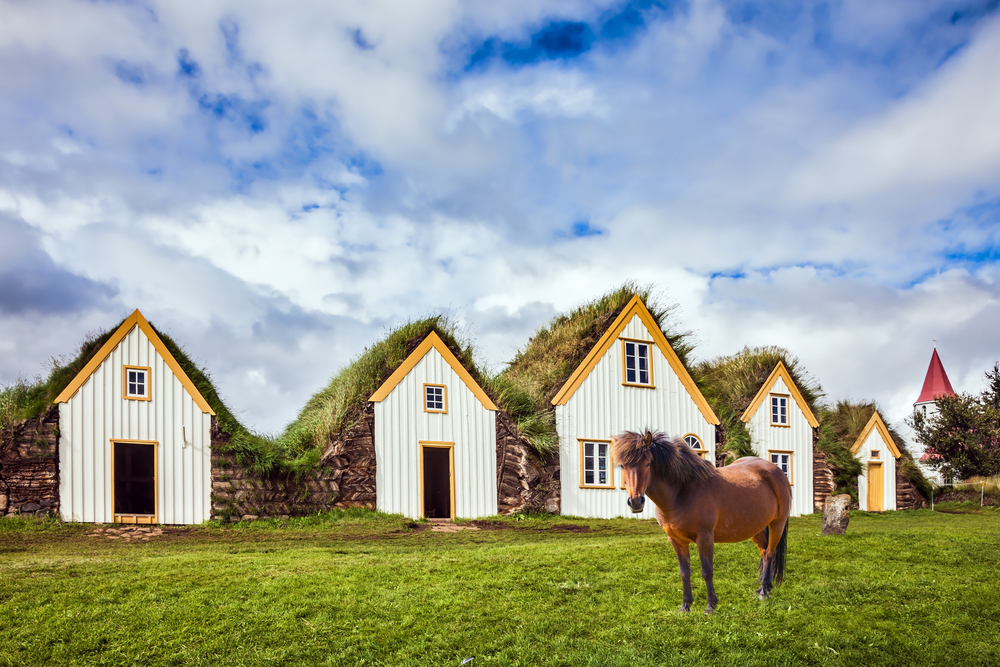
Plan Where You’ll Stop For Gas On Long Drives
One of the best driving tips for visiting Iceland that we can give you is to plan out where you’ll stop for gas ahead of time. The further you get from Reykjavik the towns are smaller and sparse which means fewer options for gas.
If you’re starting your adventures or road trip in or around Reykjavik and are a Costco member (US memberships are valid in Iceland) we suggest visiting Iceland’s one Costco in Hafnarfjörður to fill up your tank to full for the least expensive price.
After that, it gets a bit tricky. We suggest searching for gas stations around Iceland in Google Maps and deciding where it makes the most sense to fill up. Don’t pass up gas stations along the way thinking you might be able to just narrowly make it to the next one. This is a scenario where “better safe than sorry” definitely applies.
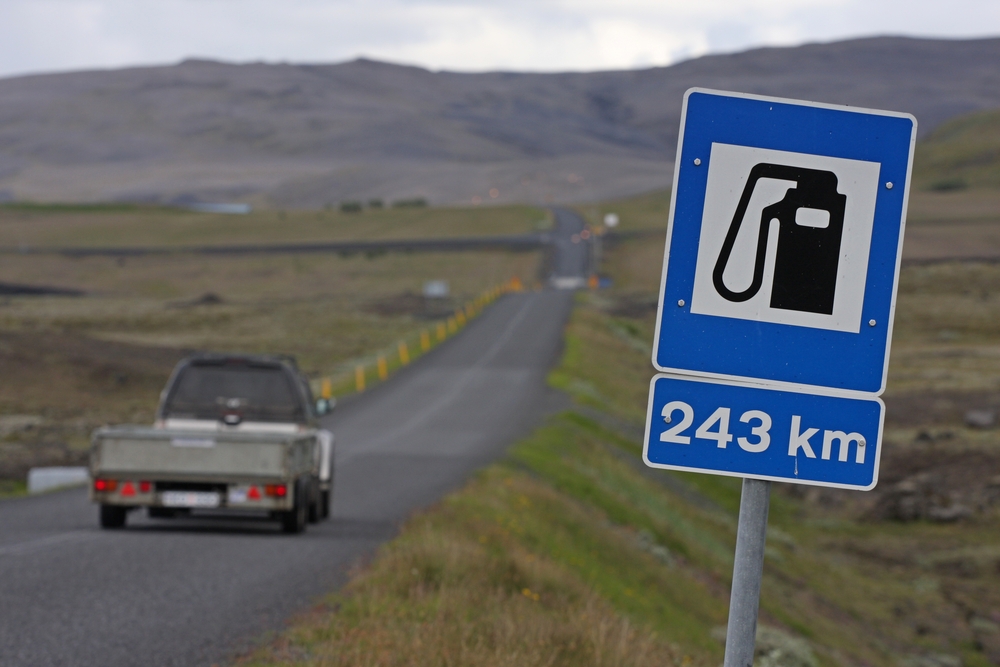
Know How To Make The Most Out Of Any Trip Length
Iceland’s jaw-dropping landscape is vast and all worthy of exploration but you don’t have to cover every inch of it to have a fantastic, memorable trip. One of the best Iceland travel tips we can offer is to book your ticket to the land of fire and ice no matter how much time you have to spend there.
If you have weeks to roam the country and circle the entire Ring Road , then great! But you can also accomplish so much and see many of Iceland’s highlights in just a few days.
You’ll start of course with the iconic Golden Circle that includes Gullfoss waterfall, Strokkur geyser, and Thingvellir National Park as well as other optional stops along the way such as Kerið crater and the Secret Lagoon. From here you can tackle the south coast and feel the spray from the dramatic Seljalandsfoss and Skogafoss waterfalls before continuing on to the Reynisfjara Black Sand Beach, Fjaðrárgljúfur Canyon, and Jökulsárlón Glacier Lagoon.
All of these stops can be reached on day trips from R eykjavik making them perfect routes for shorter vacations. You don’t have to venture far to get a taste of Iceland’s unique beauty. So don’t forgo a trip to Iceland because you’re short on time. Any amount of time is the perfect amount of time.
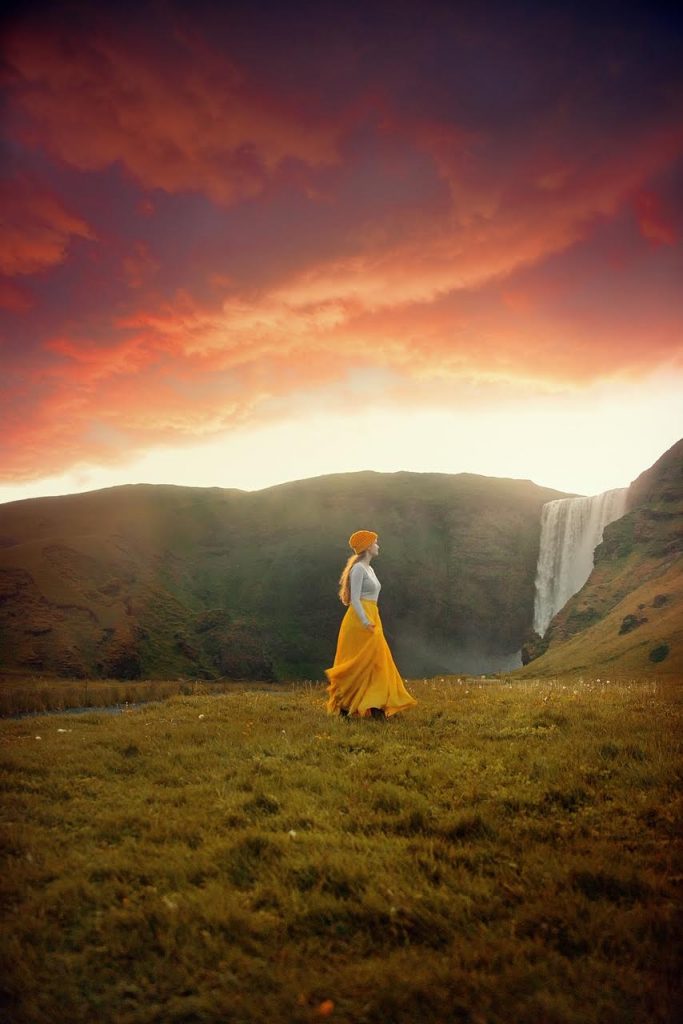
Shop At The Cheaper Grocery Stores
So you’ve taken our Iceland travel tips into account and decided to go grocery shopping as an alternative to eating out every night. What now?
Bónus is the cheapest and most popular grocery store chain in Iceland. The bright yellow signs with a pink piggy bank over the name make the stores hard to miss. The one downside is they tend not to open until 11am and many close sometime around 6:30pm.
Kronan and Nettó are the next most reasonable options with longer store hours and only minimally higher prices. Nettó even has some store locations that are open 24 hours.
If you’re less concerned about the price of the groceries and are looking for a huge selection of goods and long (sometimes 24 hour) store hours then there’s no better place than Hagkaup.
Really, it’s hard to go wrong with any of these four chain stores, but if you’re wondering what to avoid, we suggest steering clear of the 10/11 stores unless it’s your only option. They’re expensive and mediocre.
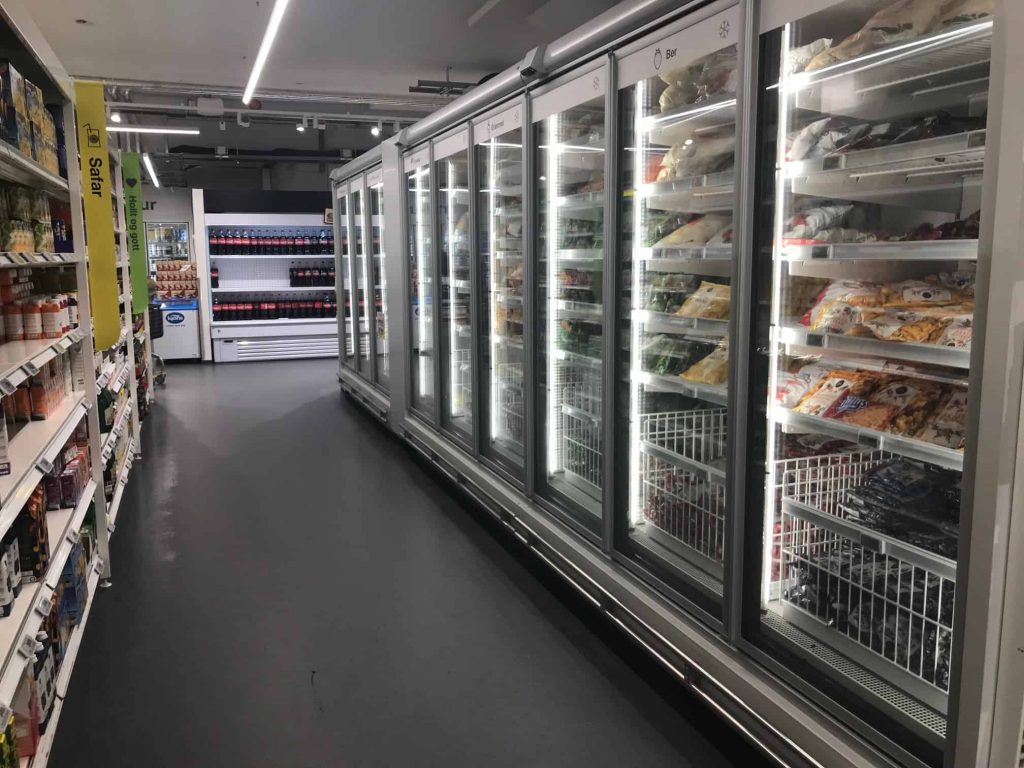
Don’t Stop Along The Side Of The Road
More than one of our Iceland travel tips revolve around driving because knowing how to navigate Iceland’s roads is critical to your safety and the safety of others. Stopping along the side of the road in the middle of a road trip is one of the biggest mistakes tourists make when driving.
We understand the urge to pull off on the side of the road. After all, everywhere you turn there seems to be another natural wonder just begging to be photographed. But this is one of those moments where you’ll have to just soak it in with your eyes as you drive by.
Iceland’s roads tend to be narrow with no shoulder room on the side. This makes pulling off on the side of the road particularly dangerous as there’s really nowhere to pull off. Instead, you’re creating an obstacle for other drivers to navigate around and are putting yourself in danger by being so exposed in the road.
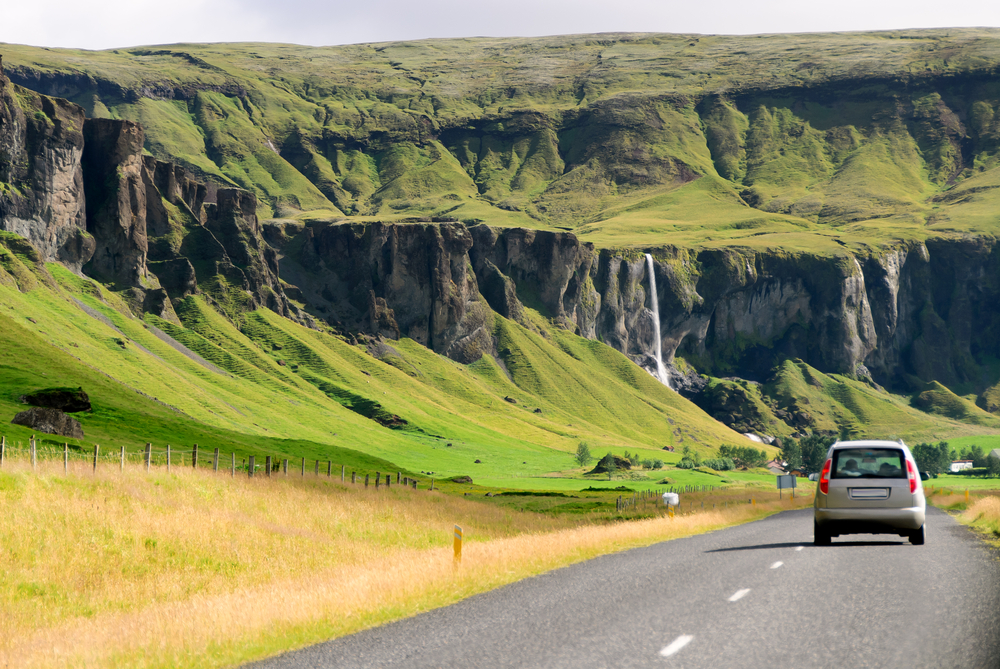
Tipping Is Not Necessary
Many of us have grown up in countries and cultures where tipping at a restaurant or a bar is expected. In fact, it would be particularly insulting to not tip or tip under a certain amount.
This is not the case in Iceland. One of the most important things to know before going to Iceland is that tipping is both not necessary and not expected. The prices are already marked up to include what you might have otherwise left as a tip. This is one of the many reasons why you don’t need to take out loads of cash when you arrive in the country.
That being said, workers will not be offended if you tip them, and in some cases such as after an exceptional tour led by a particularly knowledgable and friendly tour guide, you might decide you’d like to leave a tip to show your appreciation.
Just know that at no point during your vacation are you obligated to tip. You’ll already be dishing out a lot of money during your trip so there’s no need to empty your wallet further unless you’re feeling particularly generous.
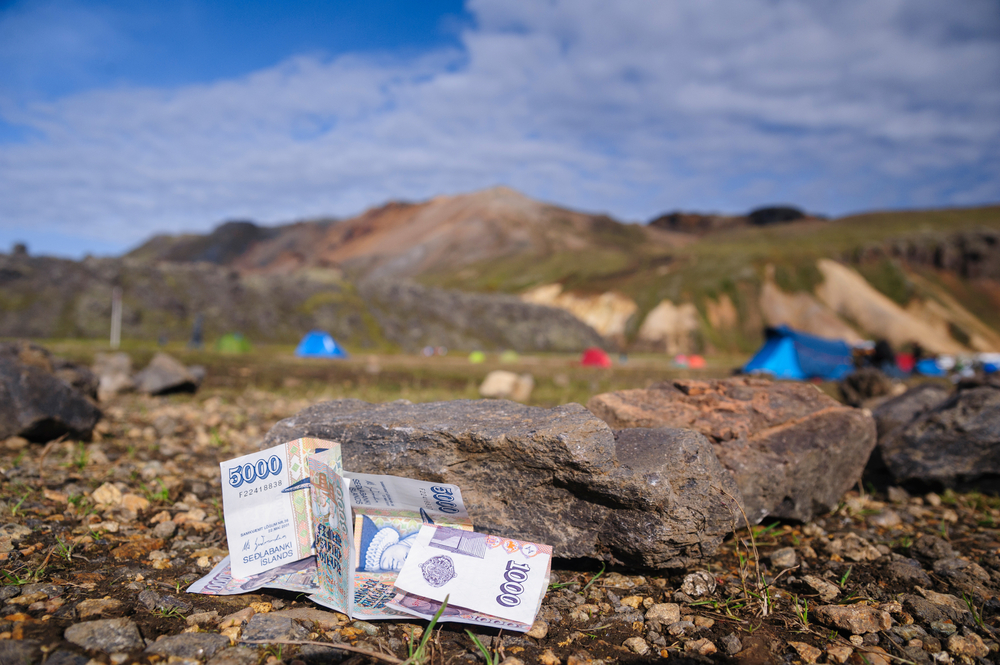
Rent A 4WD If Traveling On F Roads
When you’re planning a trip to Iceland and deciding on a rental car , think about where you’ll be driving during your trip. Many of the roads to Iceland’s major tourist attractions are paved making them relatively easy to navigate in the summer months.
If you’re sticking to Reykjavik, the Golden Circle, or much of the south coast and the main Ring Road, you can get away with renting a 2WD vehicle and save some money in the process. If however, you plan on venturing into the highlands on the F roads you’ll need to rent a 4WD.
F roads are rocky, uneven, sometimes involve river crossings, and are tricky to navigate even under the best circumstances. Some of Iceland’s most spectacular wonders are reached through F-roads. It’s entirely worth the bumpy journey to explore what the highlands have to offer, just make sure you’re properly prepared heading into your adventure.
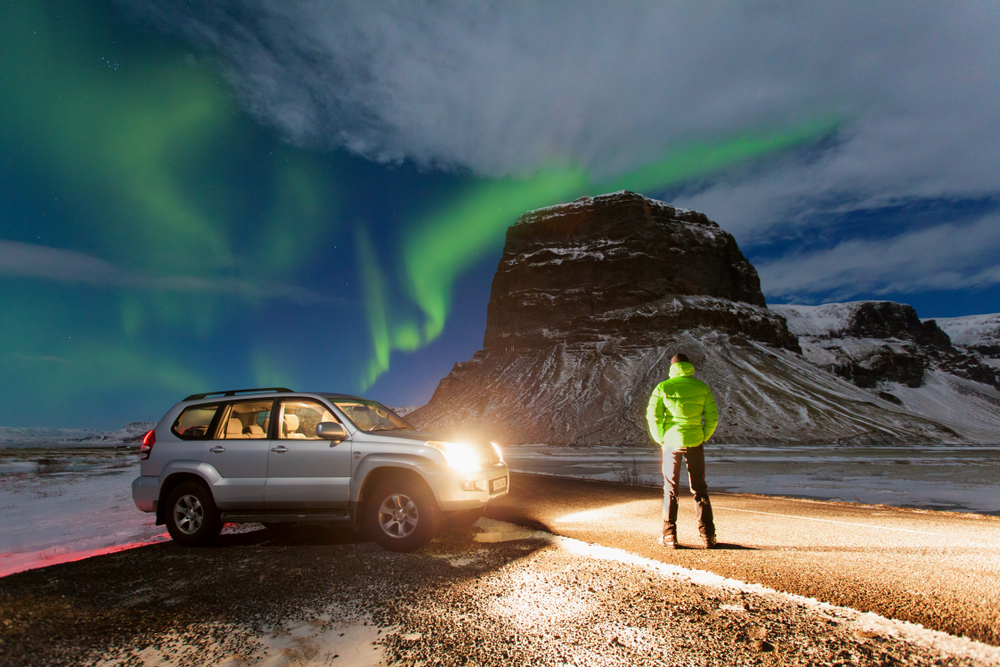
We’re thrilled you’ve chosen to explore the stunning natural landscape of Iceland. You’re in for a memorable experience that will only be made better by keeping these Iceland travel tips in mind as you tackle your next great adventure.
If you have any questions or comments as you plan your trip, feel free to let us know in the comments section below.

Reader Interactions
Leave a reply cancel reply.
Your email address will not be published. Required fields are marked *
Save my name, email, and website in this browser for the next time I comment.
The Ísland.is App
Welcome to Iceland
There are currently no travel restrictions due to COVID-19 in Iceland, neither domestically nor at the border.

Finally the time has come that all travel restrictions have been lifted in Iceland, both domestically and at the border. Thereby all rules regarding limitations on social gatherings and school operations as well as the quarantine requirement for those infected by COVID-19 are removed.
Additionally, no disease prevention measures will be in place at the border, regardless of whether individuals are vaccinated or unvaccinated.
For further information please read the full Government‘s press release . Information about testing due to symptoms .
Please note that visa requirements may apply.
Inspiration
Should you need any help planning your trip to Iceland, here is some inspiration:
Inspired by Iceland
Visit Iceland
Safe Travel
Iceland Tour & Vacation Packages

Greenland’s the icy one; Iceland’s the green one. But remember this: they don’t call part of it the Golden Circle for nothing.
Calling all nature lovers, adventure seekers and fearless travelers. Iceland may be cold, but that’s the point—you’ll get to see all the glaciers, geysers and geothermal wonders you can handle. Discover a land of natural color: hues of azure at the Blue Lagoon and the icy Jokulsarlon, shades of green on the rolling hills framing Skogafoss and the striking black sand beaches that hug the coast. Not to mention the magical aurora borealis that dance across the sky! From uncovering Viking tales and bathing in steamy springs to cruising past icebergs and exploring quirky farm towns, Iceland is island life like no other.
Our Iceland trips
Let's create an exclusive trip for your group.
Iceland tour reviews
Filter by rating
Northern Lights Escape
Why 2024 is the best year to see the northern lights
How the Icelandic hot dog became an international icon
Iceland’s Folklore: 4 mythical creatures that make the scenery come alive
Top 12 things to do in Iceland
6 of the best hikes in Iceland
10 ways to get closer to nature with Intrepid
In sickness and in health: How I ended up getting married on an Intrepid Iceland trip
Iceland or Greenland? Which country should be next on your travel list?
We also travel to
Iceland at a glance, capital city.
Reykjavik (population approximately 123,000)
Approximately 372,520
(GMT) Monrovia, Reykjavik
CALLING CODE
Electricity.
Type C (European 2-pin) Type F (German 2-pin, side clip earth)
Learn more about Iceland
Culture and customs.
Similar to many other parts of Europe , Iceland has rules in place to help preserve its culture and geographic isolation is also a factor in developing and preserving the country’s cultural qualities. Independence, self-sufficiency and a strong work ethic – traits that allowed this northern island to flourish in challenging conditions – continue to be highly valued today.
Icelandic culture and customs are full of myths and legends, many with a connection to Christian and pagan values. Folk tales of elves, gnomes, fairies and trolls still circulate, and whether or not the locals continue telling these to unlock the secrets of the past, or simply in jest, they’re definitely worth listening to. But when news outlets report on road plans being changed to avoid disrupting an elfin church, it’s easy to believe that this unusual country and its magical landscapes are a product of what lies ‘hidden’ in its mysterious depths.
Today, Iceland is a highly modern and progressive society. It is consistently rated as having the smallest gender pay gap and strong LGBTQIA+ rights representation in the parliament and media. It’s also one of the greenest countries in the world, with almost all energy coming from renewable resources such as hydropower and geothermal.
Read more about Iceland's History and Folklore
History and government
Pre-modern history.
This island nation was settled by Vikings in the ninth century, with much of the early literature recognizing Norse sailor Ingolfur Arnason as the first settler of Iceland, founding Reykjavik in AD874 along with his wife and brother. Icelanders remain proud to this day of their Viking heritage. The Icelandic language, for example, is so similar to the Old Norse spoken during Viking times that Icelanders can still read and understand the original Icelandic sagas.
A book of settlements titled Landnamabok, compiled in the 12th century, documents the names and other details of nearly 400 original settlers of Iceland who arrived in the ninth and tenth centuries. The document tells of a Norse Viking called Floki who sailed to Iceland for fishing and farming, however, due to his livestock not surviving in the conditions, had to return to his home in Norway. After heading up a mountain and looking over a fjord full of sea ice, he named this land Iceland.
In AD930, an Icelandic General Assembly was established and was deemed a Christian settlement less than a century later. Settlers and slaves brought to Iceland by Scandinavians were of Irish and Norse descent, and although some still debate which communities influenced the identity we now know to be Icelandic, the first distinctive text documenting ‘Icelandic-ness’ is said to be a rule book of sorts – the First Grammatical Treatise.
20th century and today
After long periods under Norwegian and Danish rule, Iceland was recognized as a sovereign state in 1918. On 17 June 1944, Iceland became an independent republic. It has a multi-party parliamentary system and a written constitution. The parliament is still called Althingi after its medieval General Assembly.
Many of Iceland’s major industries stem from its location and surrounding natural resources. Tourism aside, fishing and seafood products make up much of the country’s exports and employ a majority of the workforce along with agriculture and farming. Recent investment in greenhouses and geothermal energy has seen Iceland become increasingly self-sufficient, growing products that usually do not fare well in icy climates, such as potatoes, tomatoes and potted plants. Other food is imported along with many consumer goods.
Eating and drinking
Flanked by the ocean and inhabited by almost twice the amount of sheep as humans, Iceland understandably boasts a cuisine dominated by seafood and local lamb.
The country’s diet relies on plenty of potatoes and lamb, but seafood trumps all – sourced fresh year-round from the waters of the North Atlantic and Arctic and prepared in a variety of ways. Be sure to try Hardfiskur – a salty fish jerky, best enjoyed buttered.
Sheep and cows are free-range and fed chemical-free diets, making lamb and dairy products exceptionally good here. One of the best ways to enjoy the produce on offer is to warm yourself up from the inside out with a hearty meat soup: a mixture of lamb, root vegetables, herbs, and rice.
Skyr, a popular yogurt that is technically a cheese, is also a must-try in all its variety of flavors. Eat it like the locals do at any time of the day – for breakfast, as a snack, as a dipping sauce, in drink form (called drykkur), or as a dessert topping.
Surprisingly, hot dogs are Iceland’s most iconic fast food. Widely available, a hot dog is probably the cheapest meal you’ll have in Iceland. Order one with all the toppings – sweet mustard, ketchup, raw onions, deep-fried onions, and aioli.
Rye bread (also known as rugbraud) and butter is a common side to most meals in Iceland, but the preferred way of cooking the loaves are quite unique. Traditionally, the bread is buried near a natural hot spring, sprinkled with sugar, and left to gently steam for up to 24 hours. The end result is dense, cake-like bread that has a slightly sweet taste. Enjoy it with a traditional Icelandic soup, smoked lamb, or, of course, fish.
Name a food and chances are Icelanders have tried to add licorice to it. Black licorice is beloved by locals and found in a wide range of desserts and candy bars. During your time here, head to Valdis in Reykjavik to test out a cone filled with salted black licorice ice cream. Even if the weather’s cold, the ice cream joints will be open!
The weird and wacky
Icelanders have a reputation for serving up some of the most unusual food in the world – boiled sheep’s head, fermented shark known as harkarl, ram testicles and smoked puffin to name a few. Although the country’s isolation and harsh winters once meant these foods were eaten out of necessity, today most of these ‘delicacies’ are only prepared to shock tourists. Try if you dare, but we suggest sticking to the common foods that locals eat.
Alcohol can be expensive in Iceland and is best bought at the duty-free shop. Although forms of prohibition existed until 1989, alcohol is now widely available all over the country in state-run liquor stores. If you’re feeling brave, try the local brew, Brennivin – a potent, traditional caraway-flavored schnapps nicknamed ‘black death’.
Read more about what to eat in Iceland
Read more about what to drink in Iceland
Iceland travel highlights
1. explore reykjavik.
Iceland's capital city is totally beguiling, surrounded by volcanic peaks and boasting a vibrant art and nightlife scene. Browse the city’s galleries, explore the colorful street art, dine on fresh lox (traditionally cured salmon), or cycle to the striking cathedral of Hallgrimskirkja – trying to say that after a tipple or two of Brennivin (Iceland's signature spirit) might be tricky! Get stuck into Icelandic culture on our 6 day Northern Lights Escape .
2. Discover the Golden Circle
The Golden Circle is the holy trinity of southern Iceland. This 186-mile (300 km) route is brimming with natural wonders that showcase why so many travelers fall under Iceland's spell. Marvel at the layered cascades of Gullfoss Waterfall, explore the dramatic rift valley in Thingvellir National Park and witness the unpredictable eruptions in Geysir Geothermal Area. Marvel at breathtaking natural landscapes on our 5 day Iceland Express tour.
3. Cruise along Jokulsarlon
It's impossible not to be amazed by the sheer size and beauty of Jokulsarlon, Iceland’s famous glacial lagoon. Enjoy a boat tour along the icy waters where you'll cruise past towering glaciers and witness icebergs of all shapes, sizes and shades of blue drifting into the Atlantic Ocean. Cool down on our 8 day Iceland Discovery tour.
4. Experience life in Akureyri
Soak up the charm of this northern port city – the second-largest city in Iceland. Better described as a big town with lots of character, you'll be won over by its quaint turf homes, rich history and folklore, and the imposing Mount Súlur that looms over the town. Akureyri is also an ideal Northern Lights viewing location between September and April. Explore the streets of Akureyri on our 9 day Premium Iceland tour.
5. Be wowed by Westfjords
Venture off course to the unspoiled, untamed reaches of the Westfjords – without the big crowds. This is a land where mountains meet the sea most dramatically, where waterfalls tumble down into the inky fjords and puffins live along the towering cliffs. If you’re lucky and conditions allow, we might cruise along Látrabjarg (Europe’s largest bird cliff) to see puffins, razorbills, guillemots and more. Adventure through the Westfjords on our 14 day East Greenland and Iceland Northern Lights tour.
6. Bathe in the Blue Lagoon
There's no need to worry about being cold all the time in Iceland when you can slip into the famous Blue Lagoon just out of Reykjavik. Surrounded by black volcanic rock, a soak in the mineral-rich, milk-blue waters of this geothermal spa is the perfect way to relax and unwind after a big day of walking.
Geography and environment
Iceland possesses some of the world’s most incredible natural wonders and unique landscapes. From active volcanoes to vast ice fields, bubbling hot springs and enormous glaciers, these dramatic contrasts have earned Iceland the nickname of the ‘Land of Fire and Ice’.
Many of these geological features are products of geographical location – on the Mid-Atlantic Ridge, where the North American and Eurasian tectonic plates intersect and their movements away from each other create volcanic activity. The country is covered by moss-carpeted lava fields, soaring fjords, incredible waterfalls and dramatic geysers, all of which add to Iceland’s otherworldly look.
The country is also the perfect spot to see the Northern Lights. From September to March, you’ll have the best chance to view this spectacular natural light show when the skies are clear and auroral activity is high. But don’t let that stop you from visiting in other seasons – Iceland’s natural wonders are truly year-round attractions.
Top 4 natural phenomena of Iceland
1. Northern Lights
The Northern Hemisphere's Aurora Borealis has captivated and intrigued travelers for years. Any winter tour of Iceland absolutely must include a chance to see the Northern Lights. This natural light display that runs along magnetic fields often brings hypnotic green, yellow and red shades to the night sky in Iceland from September to March. As one of nature's most magnificent triumphs, this is one unforgettable spectacle.
2. Gullfoss
Otherwise known as Golden Falls, this spectacular three-tiered waterfall drops suddenly into a deep cavern. The falls are surrounded by lush, green countryside, and the rainbows created by the mist and spray provide brilliant photo opportunities.
3. Lake Myvatn
This part of northern Iceland was born from volcanic eruptions millions of years ago and continues to be shaped by volcanic activity to this day. The combination of strange lava formations, thermal caves and a sprawling lake dotted with craters and rising rocks makes for an eerie yet beautiful landscape.
4. Jokulsarlon
Literally translating to ‘glacial river lagoon’, this monumental glacier lake is the largest in Iceland. Featuring a parade of large and small blue icebergs floating on and under the pure, icy water, this lagoon is so beautiful that it has been used as a backdrop for Hollywood films, a set for reality television shows and in a starring role on a postage stamp!
Iceland is notorious for being an expensive destination. Travelling on a budget here is difficult but can be done. Head to Bonus – Iceland’s discount grocery store – so you can cook rather than eat out for each meal. The duty-free store at Keflavik International Airport is the best place to pick up a bottle of Icelandic alcohol such as Brennivin liquor, Reyka vodka or Viking Gold beer for a fraction of the price you’d find elsewhere. It’s also a good idea to travel as a group, as operators can get better rates than a single traveler at hotels and restaurants, plus they know all the local hotspots.
If you’d like to take home Icelandic local specialties, Reykjavik is the best place to shop. Some of the country’s coolest retailers can be found on Laugavegur, one of the oldest shopping streets. Here you can browse clothing from quirky local designers alongside traditional lambswool sweaters, as well as tourist shops selling plastic Viking hats and puffin magnets. For smaller boutiques selling local art, head to Skolavordustigur.
Festival and events
Despite the long and dark winters, Icelanders are among the happiest people in the world. Why? One reason is that they understand the importance of getting together and having a good time, even if it’s pitch black outside. There are many celebrations to join in on throughout the year, but here are a few to look out for:
Winter Lights Festival
Every year, buildings around Reykjavik light up at night to celebrate both the winter world and the growing light after a long period of darkness. The Winter Lights Festival uses many public buildings and all major museums and thermal pools to illuminate the city with lighting designs and art installations as a way to get people thawed out after a long winter.
This annual mid-winter feast in January or February is one of Iceland’s oldest festivals, dating back to Viking days. Fearless eaters can find restaurants in Reykjavik offering special Thorrablot dinners of boiled sheep’s head, rotten shark’s meat, and cured ram testicles. If you can, try to snag an invitation to a local’s house, where celebrations tend to be more festive and involve lots of singing, dancing, and drinking.
Viking Festival
Modern-day Vikings in traditional garb flock to Hafnarfjorour each June for a festival Leif Erikson would approve of. Swordfights, archery, axe throwing, a traditional market, concerts, and a proper Viking feast are all part of the festivities.
National Day
1944 marks the year that Iceland became a republic after an overwhelming majority of the citizens voted for independence. The deciding referendum took place between May 20 and 23 that year; however, Iceland’s National day is celebrated on June 17th – the birthday of the man who originally led the movement in the late 19th century, Jon Sigurdsson. There are parades all around the country, usually with brass bands and marching horses. Music food, fireworks, and street parties – you get it, they’re a patriotic bunch.
Dalvik Fiskidagurinn Mikli (The Great Fish Day)
Each August, the northern fishing village of Dalvik invites you to a free, all-you-can-eat fish and seafood buffet – held for no reason other than to get people together over a delicious meal. You might come for the free food, but you’ll stay for the company.
Read more about festivals in Iceland
Further reading
For inspiring stories to prepare you for your Iceland adventure, check out these books:
- Independent People – Halldor Laxness
- Jar City – Arnaldur Indridason
- The Little Book of Tourists in Iceland – Alda Sigmundsdottir
- Waking Up in Iceland – Paul Sullivan
- The Tricking of Freya – Christina Sunley
- Viking Age Iceland – Jesse L Bycock
- The Far Traveler: Voyages of a Viking Woman – Nancy Marie Brown
- Burial Rites – Hannah Kent
- The Book of Settlements: Landnamabok – Herman Palsson (trans.)
Discover more about visiting Iceland from our travel experts in our Complete Guide to Iceland.
Similar destinations
We have a variety of similar destinations, trips and routes that you could consider! Tie another trip into your holiday, or, see how we can help you get from A to B. We have tours departing from a variety of locations around Iceland. The options below may be of interest:
Tours to Reykjavik
Northern Lights Tours
Iceland or Greenland
Iceland travel FAQs
Do i need a covid-19 vaccine to join an intrepid trip.
Trips from 1 January 2023 onwards
From 1 January 2023, Intrepid will no longer require travelers to provide proof of vaccination against COVID-19 (excluding all Polar trips and select adventure cruises).
However, we continue to strongly recommend that all Intrepid travelers and leaders get vaccinated to protect themselves and others.
Specific proof of testing or vaccination may still be required by your destination or airline. Please ensure you check travel and entry requirements carefully.
When is the best time to visit Iceland?
Deciding what you want to see in Iceland will give you a better idea of when is the best time to travel. Wanting to get active around the countryside and see waterfalls and wildlife? The warmer spring and summer months are probably ideal. Prefer to soak in the geothermal lagoons and get a chance to see the Northern Lights? Well, likely the cooler months – with their longer nights – are best for you.
Spring and summer are considered optimal times to visit Iceland if green landscapes and balmy days are your thing. The early spring months bring warmer days, while summer offers long daylight hours with only short nights. In the summer season, July and August are the warmest months and the busiest time for tourists.
In September, tourism tends to slow down as the weather becomes unpredictable and the countryside is usually less accessible. However, there are plenty of attractions for the off-peak traveler, including the beauty of fall colors and, of course, the awe-inspiring Northern Lights.
As you might expect, winters in Iceland can be challenging. During late December there are about four-and-a-half hours of daylight and it's often cloudy. In January, there are on average three sunny days in Reykjavík, with temperatures hovering around freezing point, often with chilling winds.
Do I need a visa to travel to Iceland?
Iceland is a member of the Schengen Convention, which means that if you travel to an EU member country or countries, like Iceland, for a total of less than 90 days, a visa is not required. Citizens of Australia, New Zealand, Canada, the US, the UK and other member countries of the EU and Schengen area are included under this arrangement. Other countries do require a visa to visit Iceland, including citizens of South Africa.
Visas are the responsibility of the individual traveler. Entry requirements can change at any time, so it's important that you check for the latest information. Please visit the relevant consular website of the country or countries you’re visiting for detailed and up-to-date visa information specific to your country of origin. Check the Essential Trip Information section of your tour itinerary for more information.
Is tipping customary in Iceland?
Tipping isn't expected in Iceland. Hotels, restaurants and cafes already include a service fee and consumption taxes (VAT) in the bill, so tipping extra isn't necessary. However, feel free to leave a small amount if your experience has been particularly good, especially for assistance provided by drivers, tour leaders or service workers.
What is the internet access like in Iceland?
Travelers will be able to access the internet in cybercafes and at wi-fi hotspots in Iceland's cities and large towns. Rural and remote areas may have less internet access, so be prepared when traveling away from the city.
Most accommodation and eateries in Iceland offer wi-fi access, which is usually free to use with a code. If you wish to stay connected for the majority of your trip, it may be wise to purchase a prepaid SIM card with a data package.
Many Icelandic libraries and tourist information offices have shared computers for public internet access if you are without a device to connect to wi-fi. Sometimes a small fee is charged for this service.
Can I use my cell phone while in Iceland?
Travelers can use their cell phones in Iceland's main cities and towns, though remote and isolated areas may have inferior cell reception.
If you wish to stay connected for the majority of your trip, it may be wise to purchase a prepaid SIM card for the duration of your journey. This will likely be the cheapest way to use your phone in Iceland.
For EU citizens, depending on who you have your phone plan with, you may be able to use your current SIM in Iceland – your service provider will be able to provide more details.
Global roaming can also be activated, but check with your service provider to find out about any fees you may incur, as sometimes this can be expensive.
What are the toilets like in Iceland?
Modern, flushable toilets are the standard in Iceland.
In terms of public toilets, Reykjavik and other major towns and cities have some, but along highways and at many tourist destinations – especially campgrounds and natural attractions – there is a lack of facilities. Expect to pay a small fee when visiting public toilets and, in busy months, expect queues in main tourist areas.
There have been recent occurrences of tourists resorting to other means in remote places and near tourist sites. We recommend being prepared and talking to your group leader if you have any concerns.
What will it cost for a…?
Iceland's unit of currency is the krona. Here's what you can expect to pay for a:
- Hotdog = ISK 400-600
- Glass of beer = ISK 1,100-1,500
- Simple lunch at a cafe = ISK 2,100-3.700
- Dinner in a restaurant = ISK 2.600-4.200
Can I drink the water in Iceland?
Tap water is considered safe to drink in Iceland unless marked otherwise. For environmental reasons, try to avoid buying bottled water. Fill a reusable water bottle or canteen with filtered water instead.
Are credit cards widely accepted in Iceland?
Credit cards are widely accepted in Iceland and are used frequently by locals to pay for just about anything. Paying with a credit card at shops, guesthouses, supermarkets, restaurants, cafes, and on taxi rides shouldn't present a problem. Iceland is almost a cashless society, so cards are the best option; however, a lot of payments will require your four-digit PIN, so be sure to know this before you leave home.
What is ATM access like in Iceland?
ATMs are usually easy to find in Iceland's cities and villages and generally accept most foreign cards.
What public holidays are celebrated in Iceland?
- 1 Jan: New Year's Day
- Mar/Apr: Maundy Thursday, Good Friday, Easter Monday*
- 1 May: Labur Day
- May/Jun: Ascension Day*
- May/Jun: Whit Sunday and Whit Monday*
- 17 Jun: National Day
- First Monday in August Commerce Day*
- 24 Dec: Christmas Eve
- 25 Dec: Christmas Day
- 26 Dec: Boxing Day
- 31 Dec: New Year's Eve
*Please note, Iceland public holidays may vary.
What is the weather like in Iceland?
Iceland’s temperatures are cool and do vary throughout the year. In winter months, minimum temperatures plummet to below freezing. In Reykjavik, summer temperatures average at around 52°F, while winter maximums are approximately 32°F. Rainfall is quite consistent throughout the year; between 25–50 mm per month, with most days experiencing some rainfall.
Is it safe to travel to Iceland?
Iceland is a very safe country to travel to and is one of the safest countries in the world.
Is Iceland safe for LGBTQIA+ travellers?
The people of Iceland have an open and accepting attitude to LGBTQIA+ communities, and Iceland is considered one of the world’s most LGBTQIA+ friendly countries. Since 2006, same-sex couples have had equal access to adoption and IVF, and in 2010 the Icelandic Parliament made a unanimous decision to define marriage as between two individuals. As might be expected in a small country, however, the gay scene is quite low-key, even in Reykjavik.
In 2012, more legislation was passed to formalize the name and identity-changing process for the needs of trans and genderqueer individuals. There is still a way to go to achieve full equality, but Iceland is, in many regards, leading the way globally.
For more detailed and up-to-date advice, we recommend visiting Equaldex or ILGA before you travel and reading more about the LGBTQIA+ culture in Iceland .
If you are traveling solo on an Intrepid group tour, you will share accommodation with a passenger of the same gender as per your passport information. If you don’t identify with the gender assigned on your passport, please let us know at the time of booking and we’ll arrange the rooming configuration accordingly. A single supplement is available on some tours for travellers who do not wish to share a room.
Is Iceland accessible for travelers with disabilities?
Intrepid is committed to making travel widely accessible, regardless of ability or disability. That’s why we do our best to help as many people see the world as possible, regardless of any physical or mental limitations they might have. We’re always happy to talk to travelers with disabilities and see if we can help guide them towards the most suitable itinerary for their needs and, where possible, make reasonable adjustments to our itineraries.
Because of its remote location and size, Iceland can prove difficult when it comes to accessibility for individuals with mobility issues. Some of the main sights, such as the Blue Lagoon, are wheelchair accessible, but many of the natural attractions have unpaved paths and unsteady terrain. Iceland has a dedicated information center, Thekkingarmidstod Sjalfsbjorg , that provides up-to-date information on accessibility and accessible facilities in Iceland, as well as other related information.
If you do live with a visual, hearing, or other impairment, let your booking agent or group leader know early on so they’re aware and suitable arrangements can be made. As a general rule, knowing some common words in the local language, carrying a written itinerary with you, and taking to the streets in a group, rather than solo, can help make your travel experience the best it can be.
What to wear in Iceland
In summer, Iceland experiences cool but mild weather throughout the country, with maximum temperatures averaging around 55°F. It’s still important, however, to pack some warm clothing at this time, as temperatures at night can drop quite dramatically. In winter, some days barely reach over 32°F, so preparing for this is crucial. It can be wet and windy, and roads may be iced over, so thermal gear, a waterproof jacket and pants and sturdy walking boots are all highly recommended.
How do I stay safe and healthy while traveling?
From Australia?
Go to: Smart Traveller
From Canada?
Go to: Canada Travel Information
From the UK?
Go to: UK Foreign Travel Advice
From New Zealand?
Go to: Safe Travel
From the US?
Go to: US Department of State
The World Health Organisation also provides useful health information.
Do I need to purchase travel insurance before traveling?
Absolutely. All passengers traveling with Intrepid are required to purchase travel insurance before the start of their trip. Your travel insurance details will be recorded by your leader on the first day of the trip. Due to the varying nature, availability and cost of health care around the world, travel insurance is very much an essential and necessary part of every journey.
For more information on insurance, please go to: Travel Insurance
How will I be traveling around Iceland?
Intrepid believes half the fun of experiencing a new country is getting there, and getting around once there! Where possible, Intrepid uses local transport options and traditional modes of transport – which usually have less of an environmental impact, support small local operators and are much more fun.
Depending on what trip you're on in Iceland, you may find yourself traveling by:
All-terrain Unimog
To see all of Iceland, you’ll need some heavy-duty transport. This super-sized van will take you on glacier visits to admire these almighty ice caps up close.
Amphibian boat
Part truck, part boat, all adventure – cruise the Jokulsarlon glacial lagoon in a small group aboard one of these vessels, on land and lake.
What is it like traveling on a small group tour?
Whether you’re a seasoned traveler or you’re about to embark on your first trip, traveling can be as intimidating as it is exciting. That's the beauty of a small group tour. From handling the logistics and organizing amazing cultural activities to local leaders who know each destination like the back of their hand (like which street has the best markets and where to get the most authentic food), traveling on a small group tour with Intrepid will give you unforgettable travel experiences without the hassle that comes with exploring a new place. Plus, you'll have ready-made friends to share the journey with. All you have to do is turn up with a healthy sense of adventure and we’ll take care of the rest.
Does my Intrepid trip include airfare?
While our Intrepid trips include many modes of transport, from tuk-tuks to overland vehicles, bullet trains and feluccas, airfare to and from your home country is not included in your tour package.
Does my trip support The Intrepid Foundation?
Yes, all Intrepid trips support the Intrepid Foundation. Trips to this country directly support our global Intrepid Foundation partners, Eden Reforestation Projects and World Bicycle Relief. Intrepid will double the impact by dollar-matching all post-trip donations made to The Intrepid Foundation.
Eden Reforestation Projects
Eden Reforestation Projects are helping to mitigate climate change by restoring forests worldwide; they also hire locally and create job opportunities within vulnerable communities. Donations from our trips support restoration across planting sites in 10 countries around the globe. Find out more or make a donation World Bicycle Relief
World Bicycle Relief provides people in low-income communities with bicycles to mobilize school kids, health workers, and farmers in far-out areas – giving them access to vital education, healthcare, and income. Donations help provide Buffalo Bicycles – specifically designed to withstand the rugged terrain and harsh environment of rural regions – to those who need them most. Find out more or make a donation
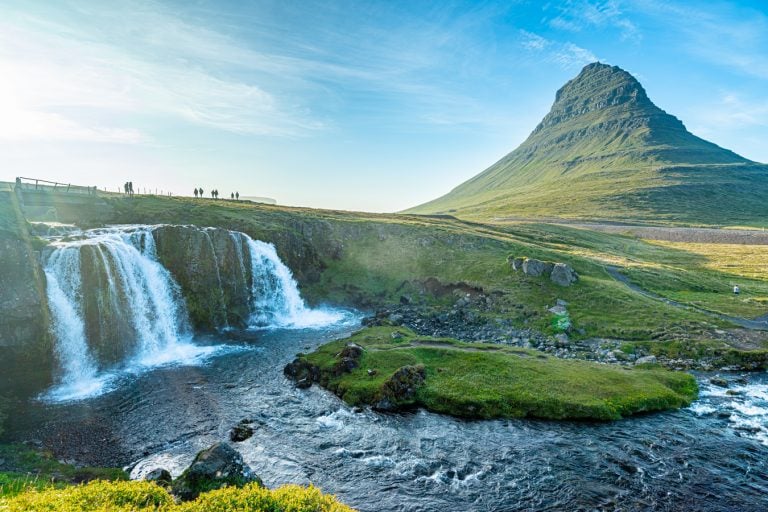
Planning a Trip to Iceland for the First Time (Your Easy 10-Step Checklist!)
Glacier hikes, puffin sightings, thundering waterfalls, and geothermal wonders: there is so much to be excited about when planning a trip to Iceland!
A trip to the Land of Fire and Ice is truly a vacation like no other, and we were smitten with it from the moment the plane touched down and we got to admire the lupines growing along the runway (seriously).
Iceland is an incredibly unique destination and offers a magnificent array of once-in-a-lifetime travel experiences, all in a (fairly) compact location.
However, to best take advantage of all that beauty within a limited time frame, you’ll need to do quite a bit of planning before you take off on your first trip to Iceland.
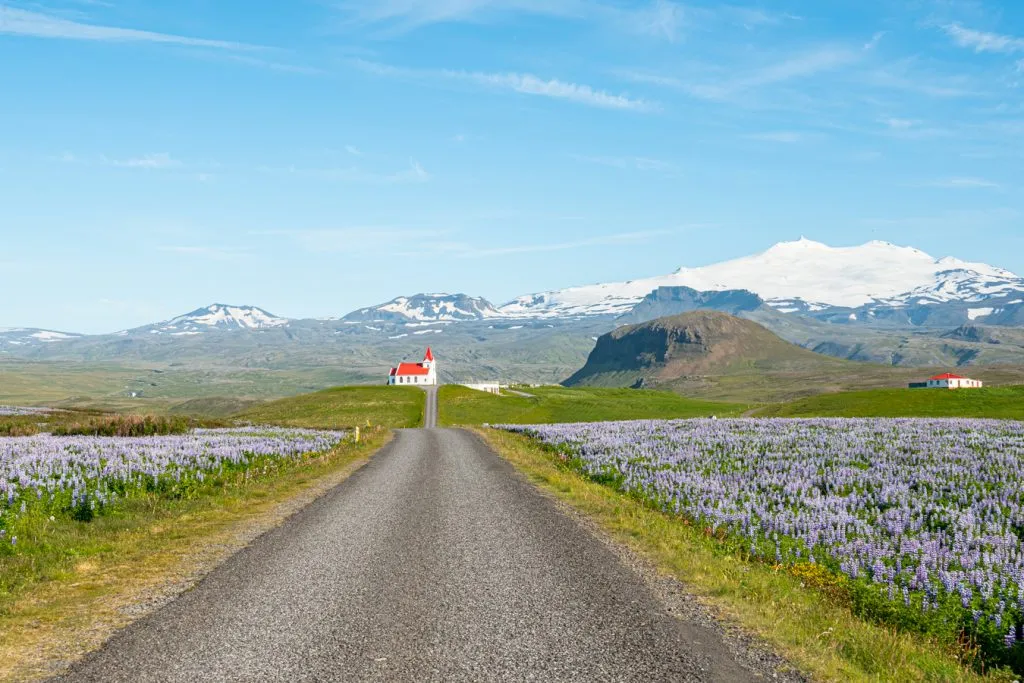
Some links in this post may be affiliate links. If you make a purchase through one of these links, we may earn a small commission at no extra cost to you. Please see our disclosure policy for more detail.
While you could certainly arrive with little advance planning and see some incredible sights, experiencing the best things to do in Iceland isn’t as easy as hitting the open road with no (literal or figurative) plan.
The country’s extreme popularity coupled with rural attractions and weather unlike what most people experience in their day-to-day lives means that you’ll have a much better time if you carefully plan your trip to Iceland!
Follow this step-by-step Iceland travel checklist, and you’re bound to have an unforgettable adventure when visiting Iceland for the first time.
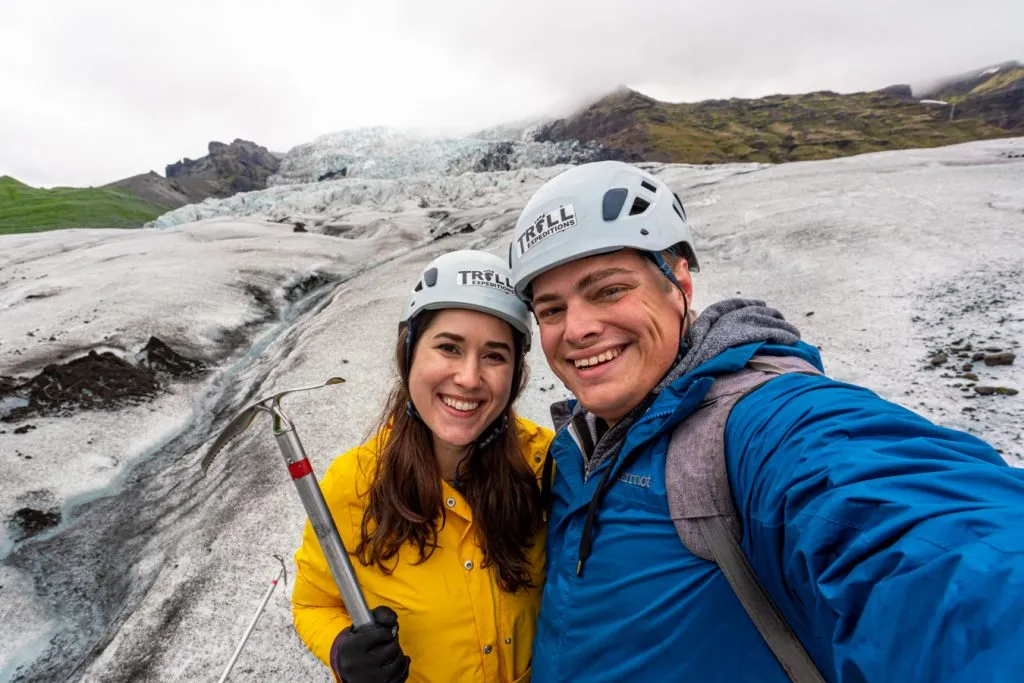
Step 1: Check visa and entrance requirements.
Toto, it is definitely not 2019 anymore: while checking visa and entrance requirements has always been important before visiting a foreign country, it’s safe to say that we’ll all be paying a bit more attention to it in years to come than we did pre-2020!
As of late 2023, there are no travel restrictions to visit Iceland–but just in case, this official website provides up-to-date requirements for entering Iceland, including any testing requirements.
Icelandair also has a detailed page on entry requirements.
Don’t forget to check any requirements that your home country has for returning, too!
In addition to these more topical necessities, don’t forget the usual needs, like having more than 6 months of validity left on your passport.
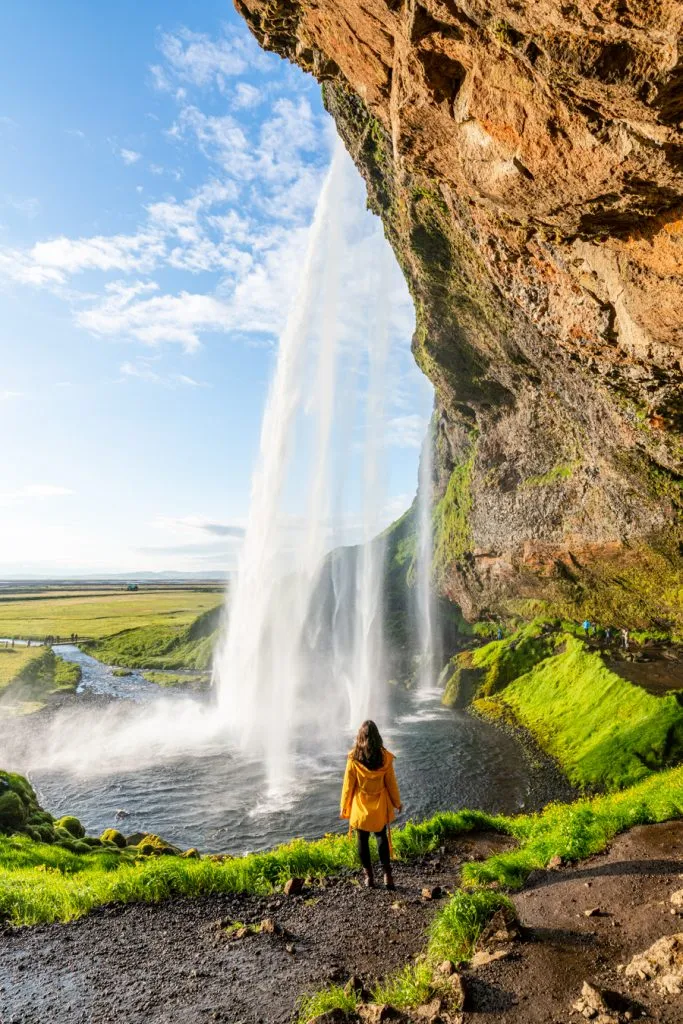

Step 2: Book your flights (the biggest step when planning a trip to Iceland!).
Without a doubt, booking flights is one of the most exciting parts of planning a trip to Iceland (or anywhere else)!
Once you book flights, your trip is official and you can start building the details of your adventures in Iceland around the states of your flights.
If your dates are somewhat flexible, we suggest checking prices a few days before and a few days after your intended arrival and departure dates when shopping for flights to Iceland.
You never know what deals you may happen to come across!
As the vast majority of all international flights in Iceland go through Keflavik International Airport in Reykjavik (KEF), shopping for flights to Iceland is a fairly straightforward process.
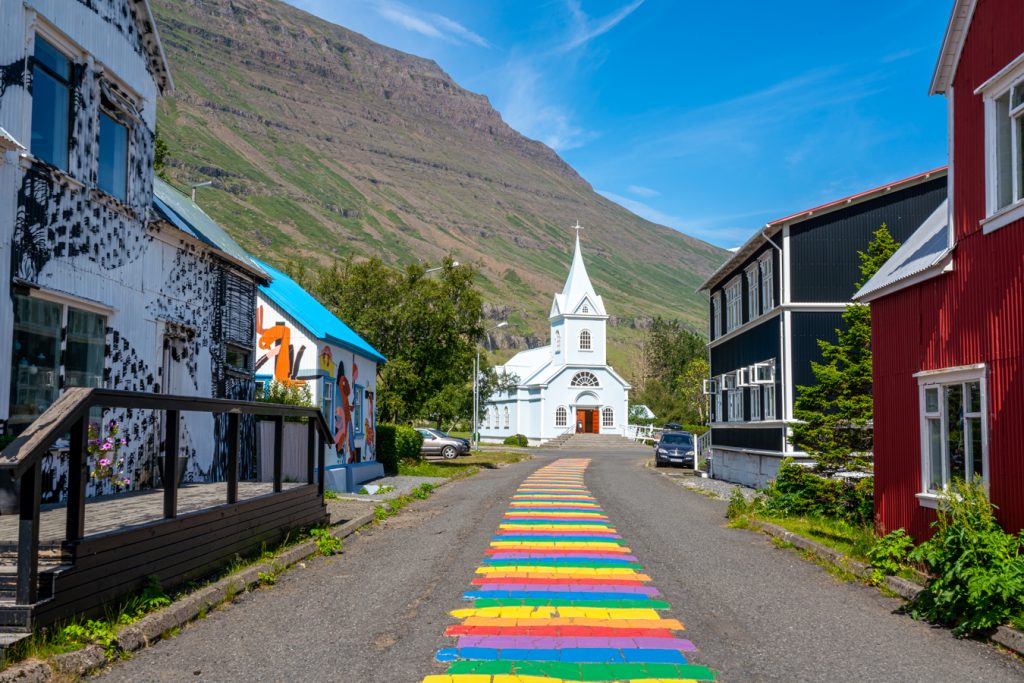
Step 3: Reserve your rental car (and read the fine print).
While some travelers to Iceland may choose to base themselves in Reykjavik and only take organized tours outside the city, for most visitors, visiting Iceland means that it is time for a road trip!
Whether you want to drive Iceland’s legendary Ring Road (it’s incredible), explore the popular South Coast in-depth (also incredible), or get off the beaten path in places like the remote Westfjords (again, incredible), renting a car will deeply enhance your trip to Iceland.
Given Iceland’s extreme seasonality, rental cars can be a bit of a hot commodity in the summer, so book as far in advance as you can!
We use and recommend Discover Cars to find out which company has the most competitive prices and best rental contracts.
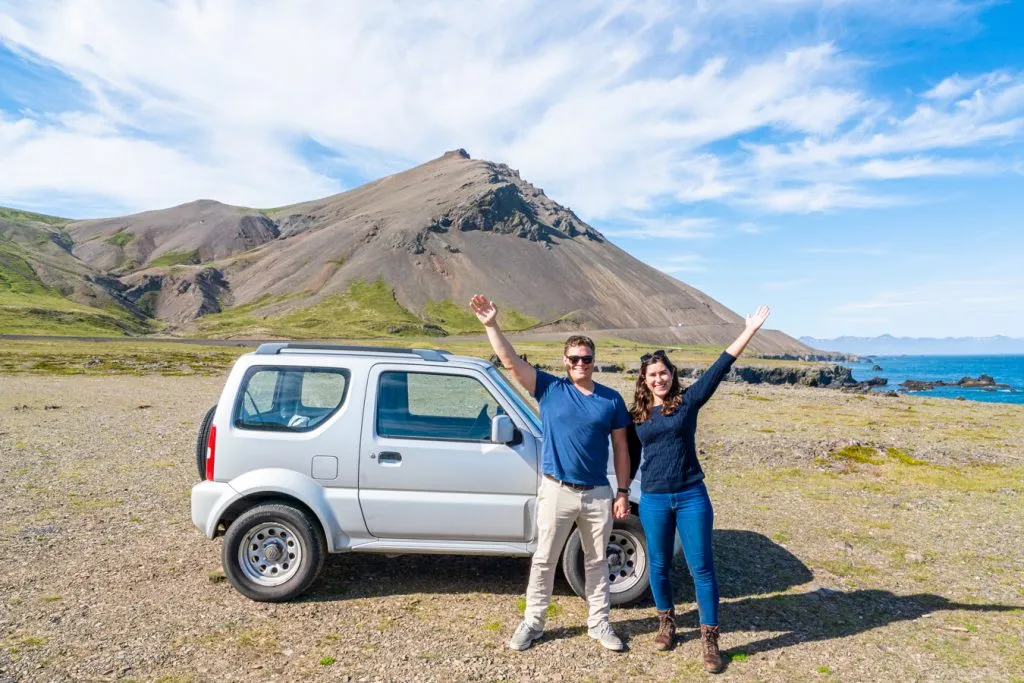
On our recent Iceland road trip, the best choice ended up being Global Rent a Car, and we had a great experience with them.
Wondering if you need to rent a vehicle with 4-wheel drive?
For a traditional Ring Road itinerary , a standard 2-wheel drive vehicle is just fine–but to drive on Iceland’s unpaved “F” roads, 4-wheel drive is required!
We made use of our 4-wheel drive option several times on our road trip, but I wouldn’t consider not having one a dealbreaker unless you have your heart set on driving yourself into the Highlands or to a particular offbeat spot.
We would’ve had a great trip to Iceland with or without F-road access!
Shop rental cars for your trip to Iceland today!
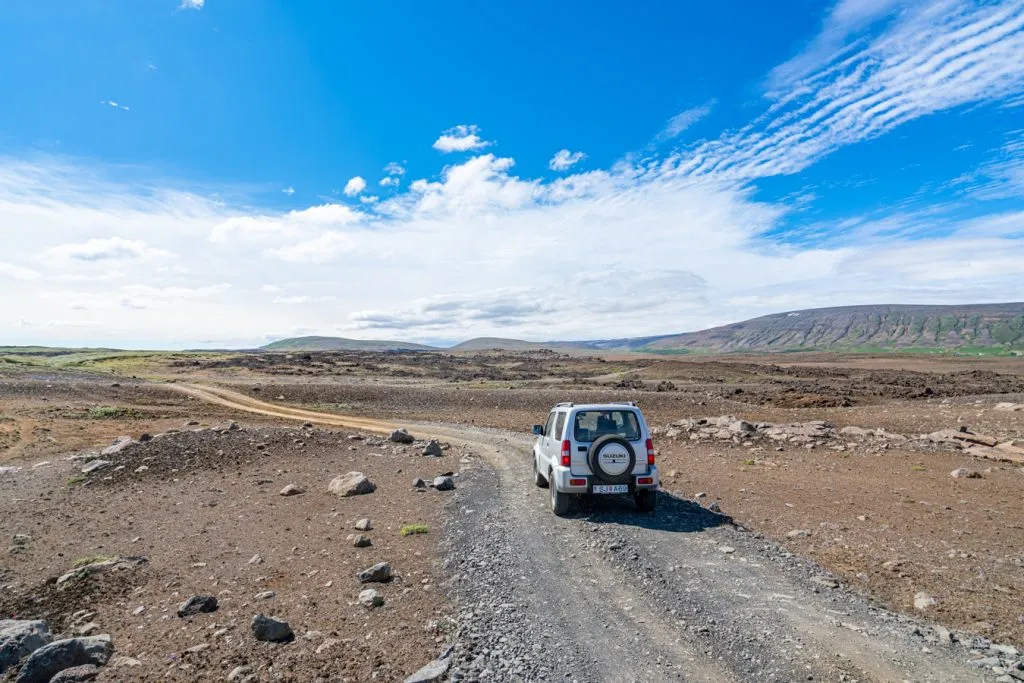
Step 4: Plan your Iceland itinerary.
With a seemingly limitless number of beautiful places to explore, there are as many possible Iceland itineraries as there are visitors!
A few tried-and-true options, though, include these amazing routes.
Iceland Ring Road Trip
The most classic Iceland itinerary, a Ring Road trip is perfect for visitors who have 10+ days in Iceland and want to see it all.
This is what we did, and honestly, we plan to go back and do it again one day–maybe more than once.
From the iconic attractions of South Iceland to the lesser-visited corners of the Eastern Fjords and North Iceland , the Ring Road makes for an incredible Iceland vacation.
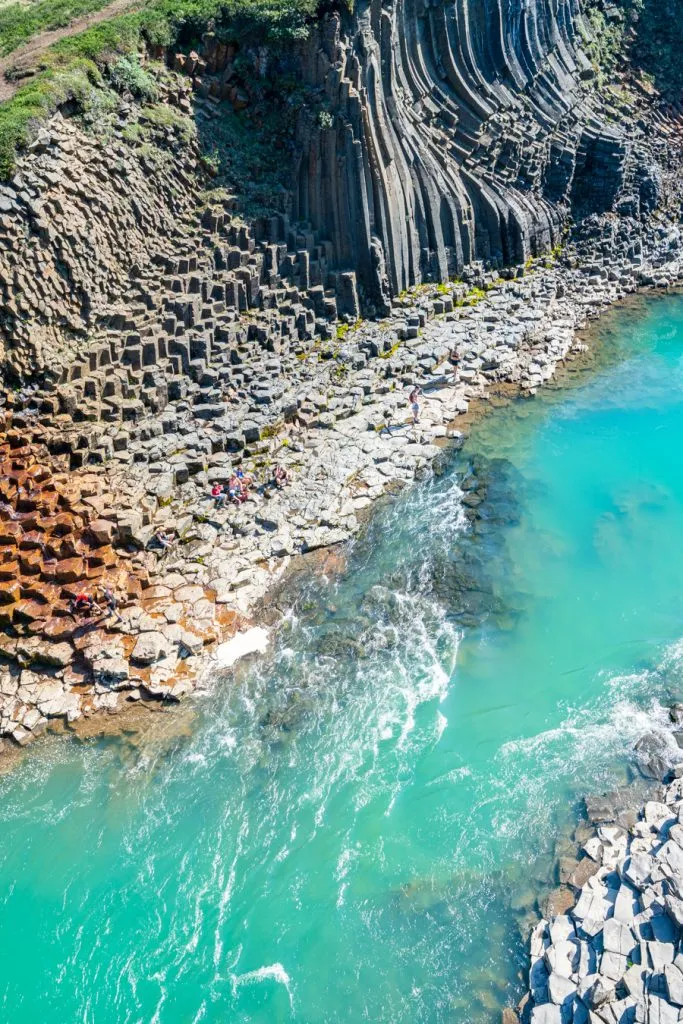
Iceland South Coast Road Trip
Have a week or less in Iceland and want to take an epic road trip?
Try the popular South Coast!
This is where you’ll find many of Iceland’s most famous attractions, such as Jökulsárlón Glacier Lagoon, Vatnajökull National Park, and the iconic Skógafoss–just to name a few!
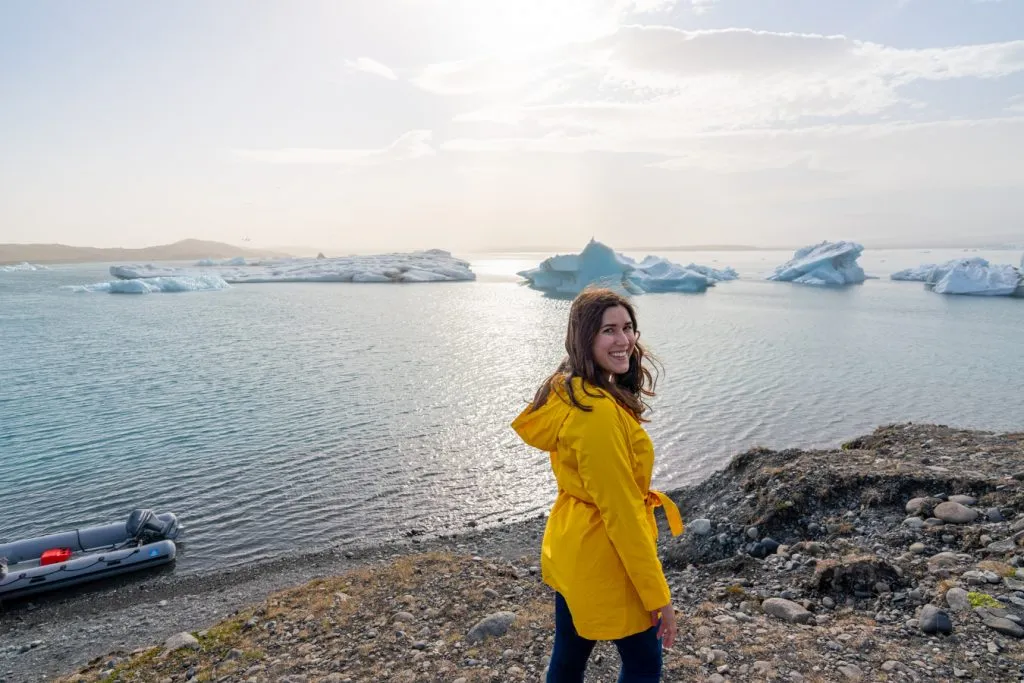
Reykjavik-Based Trip
Only have a few days in Iceland?
Don’t worry!
By basing yourself in Reykjavik and taking well-planned day trips, you can enjoy some of the most iconic sights in Iceland (like the Blue Lagoon and Golden Circle ) very quickly.
While we’d always recommend a longer trip to Iceland if possible, for the right traveler, even a 3-4 day Iceland vacation is well worth the effort it takes to get there.
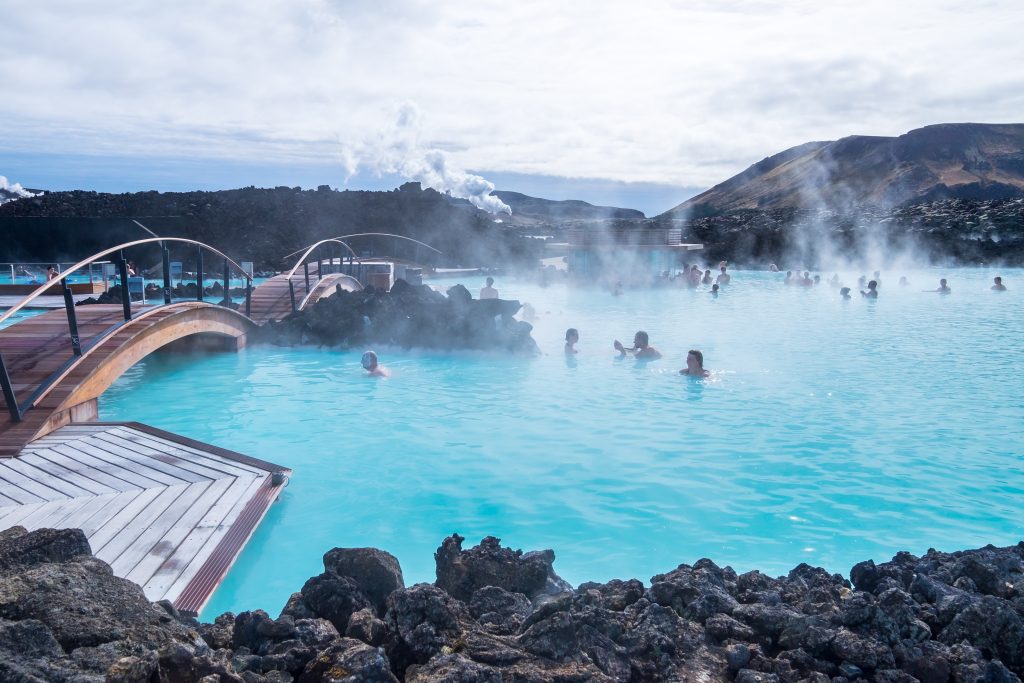
Step 5: Finalize your Iceland travel budget.
There’s simply no getting around this one: taking a trip to Iceland is expensive!
To save money when traveling to Iceland on a budget, you can make some concessions like shopping in grocery stores for food (and eating lots of gas station hot dogs–a must-have Iceland experience on any budget), staying in basic lodging, and prioritizing only the experiences that are important to you.
But… even with all that, the price tag is still high.
Before booking your lodging and attractions (more on that in a few paragraphs), be sure to run the numbers and see exactly what you have to spend.
Better to make informed decisions along the way than have a nasty surprise bill at the end of your Iceland vacation!
This guide to budgeting for a trip explains how we budget for our travels in a step-by-step way and can help you create an Iceland budget that works for you.
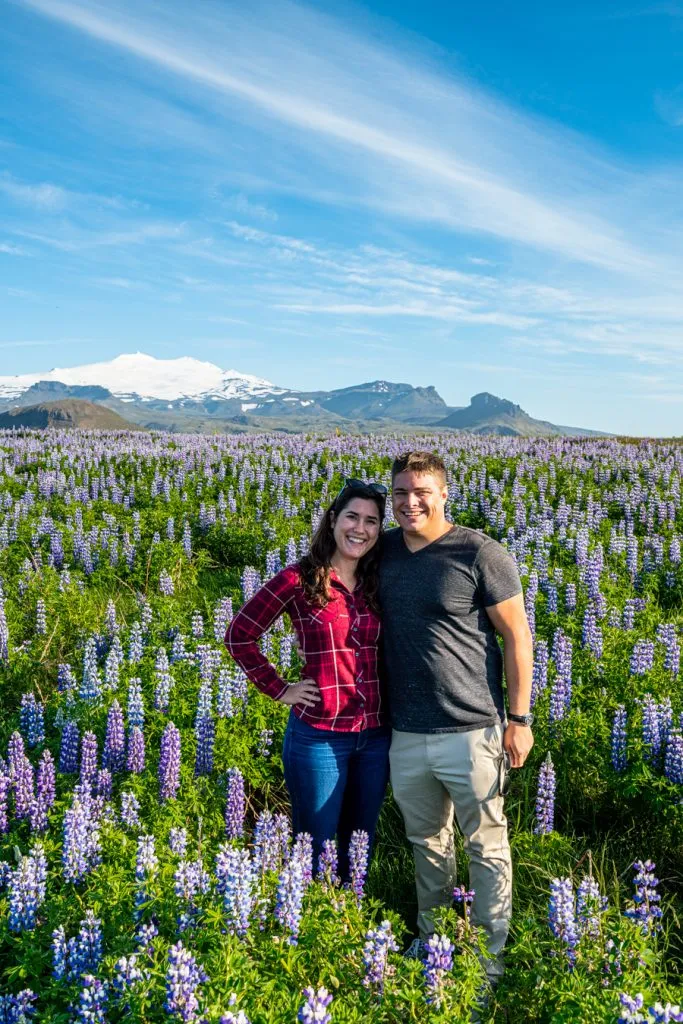
Step 6: Decide where to stay and make reservations.
If you’re taking an Iceland road trip, especially during the summer, booking your hotels and/or vacation rentals as far in advance as possible is essential.
Most of Iceland’s most popular attractions are found in rural areas, and there are often only a few hotels or guesthouses nearby.
In order to complete your road trip efficiently–for example, driving the Ring Road–you’ll want to have your lodging chosen and booked before starting your trip.
We use Booking.com to find and book lodging in Iceland!
A few hotels that stood out on our recent Iceland road trip are Hotel Vík í Mýrdal (fantastic central location in Vik), Hótel Laxá near Mytvan (rural but convenient), and Fosshotel Nupar (perfectly located for glacier hiking in Vatnajökull National Park and visiting the glacier lagoons).
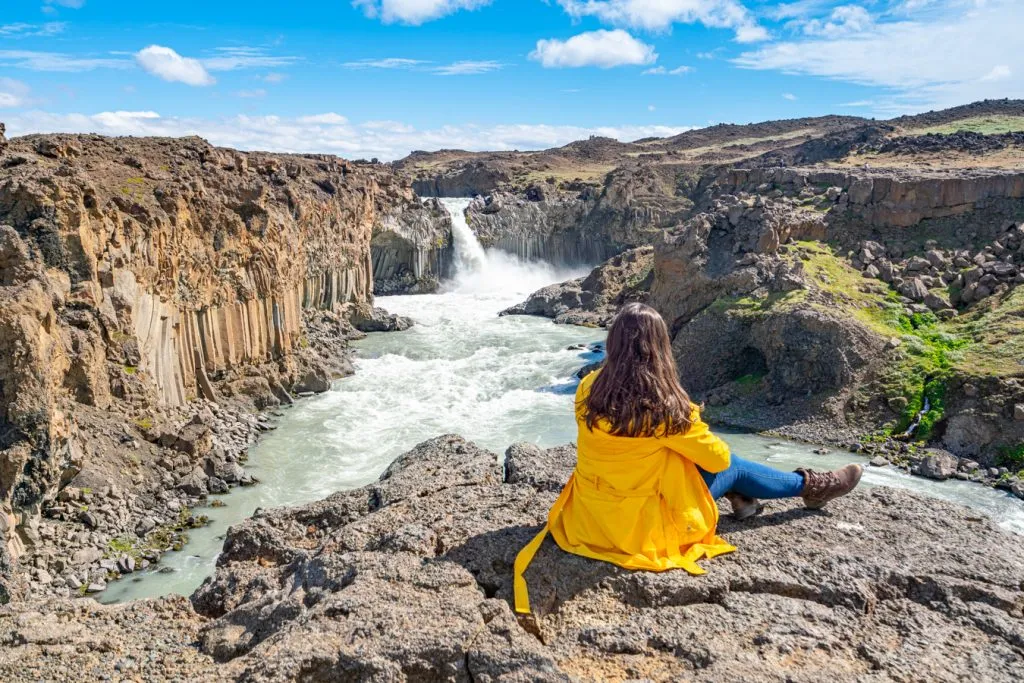
Step 7: Book bucket list tours and activities in advance.
Glacier hikes, snorkeling between tectonic plates , soaking in the famous Blue Lagoon, riding Icelandic horses: many of the absolute best things to do in Iceland require booking a tour or ticket!
And, like rental cars and hotels, tours and activities have a tendency to sell out in the summer.
If there are any bucket-list Iceland experiences you want to make sure you don’t miss, be sure to book them when planning your Iceland trip!
Here are a few popular options that are great to book in advance:
Silfra Snorkeling Tour — Want to snorkel between Europe and North America?
Iceland is the only place you can, and we will never forget this incredibly unique experience !
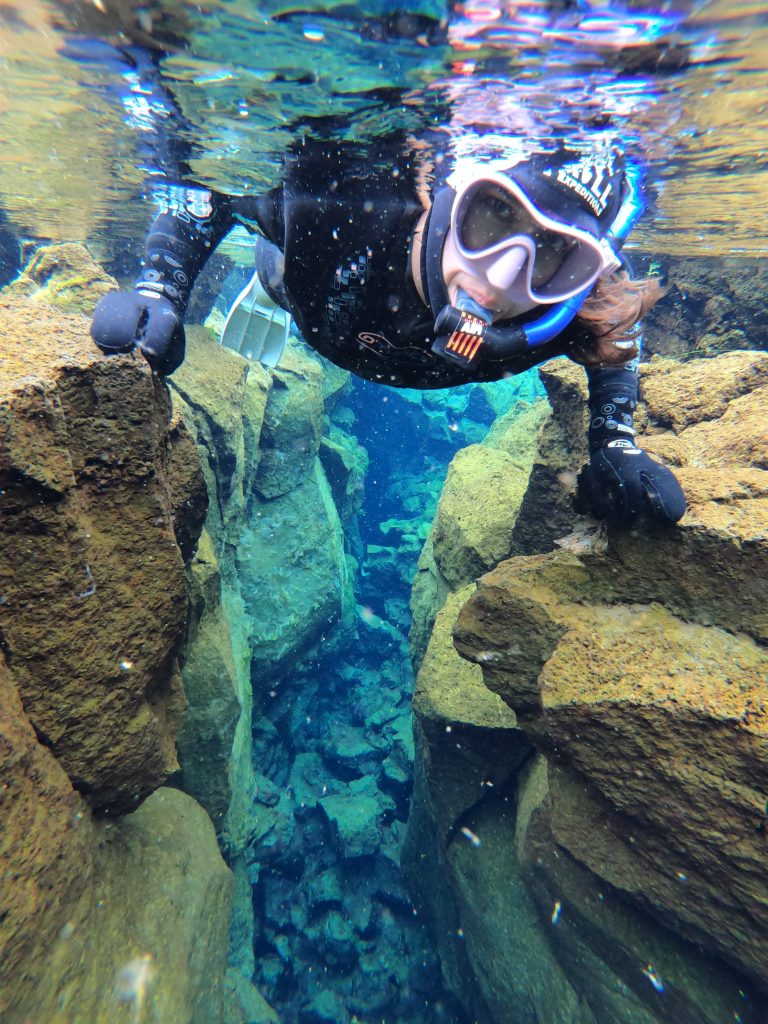
Glacier Hiking in Skafatell National Park — Hiking on a glacier is one of the most incredible experiences in Iceland, and we loved this tour .
Blue Lagoon — The Blue Lagoon is one of the most famous places in Iceland, and you can’t simply show up for the day–especially during the summer.
South Iceland Day Trip — Basing yourself in Reykjavik and don’t want to drive during your first time in Iceland?
This popular day trip will show you Iceland’s most famous waterfalls and beyond.
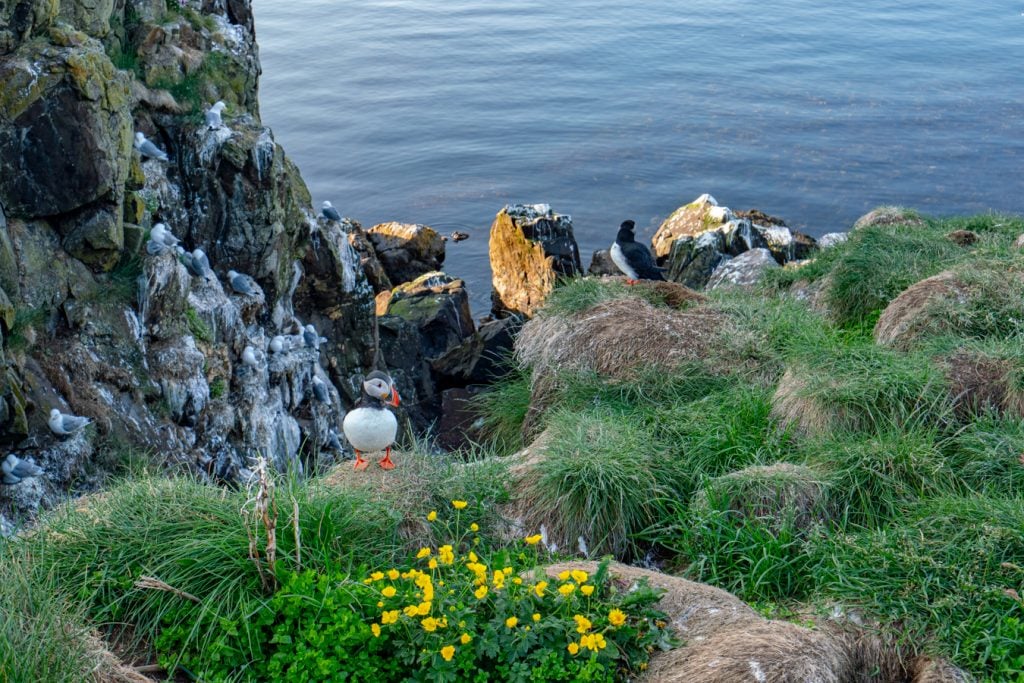
Step 8: Make a packing list (and shop).
More than most destinations, packing for Iceland requires some advance planning!
The country’s extreme climate paired with the fact that most people who plan a trip to Iceland are planning to do things they’ve never done before–like a hike on a glacier , perhaps–means that you’ll likely want to purchase some gear before taking off!
While you can certainly find most of what you would need in cities like Reykjavik and Akureyri, most of the best places to visit in Iceland are quite rural, with few stores around.
And, Iceland is not exactly a budget-friendly place to shop!
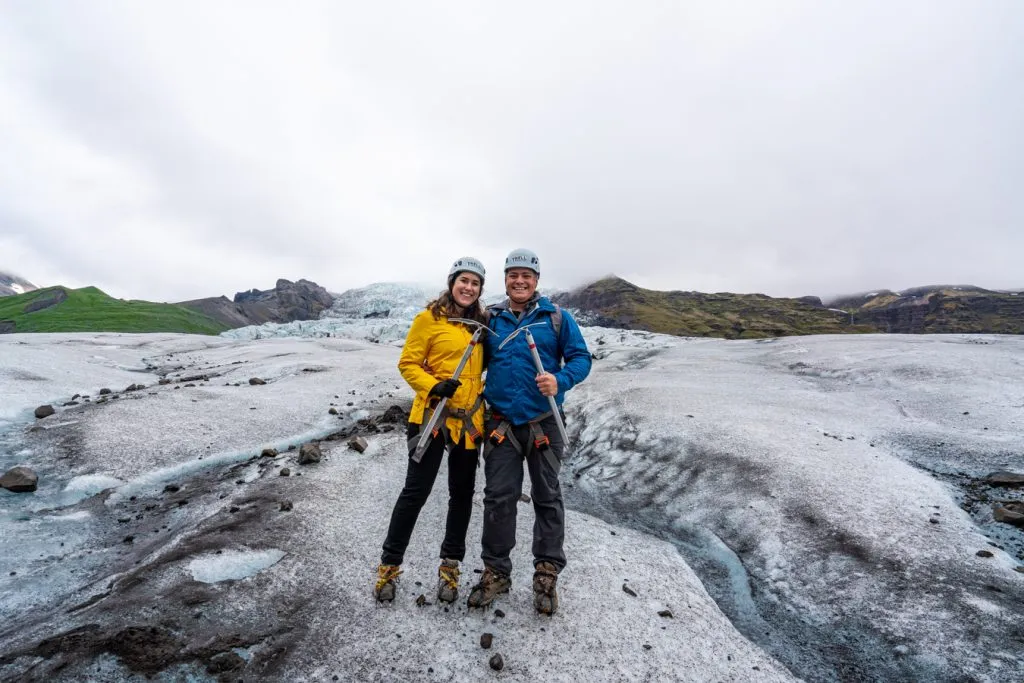
A detailed breakdown of what to pack for Iceland requires a whole other blog post (and packing for Iceland in winter is even more intense), but here are a few things we recommend bringing:
Travel Adaptors for Iceland — If you’re coming from outside of Europe, you’ll definitely need adaptors for your electronics!
Waterproof Jacket — Mine is no longer available but is similar to this popular jacket , and Jeremy loved this one in Iceland.
Sleep Mask — Midnight sun during the summer in Iceland is no joke, and a sleep mask is a must!
I don’t typically like to wear sleep masks, but I was so glad to have one during our summer trip to Iceland.
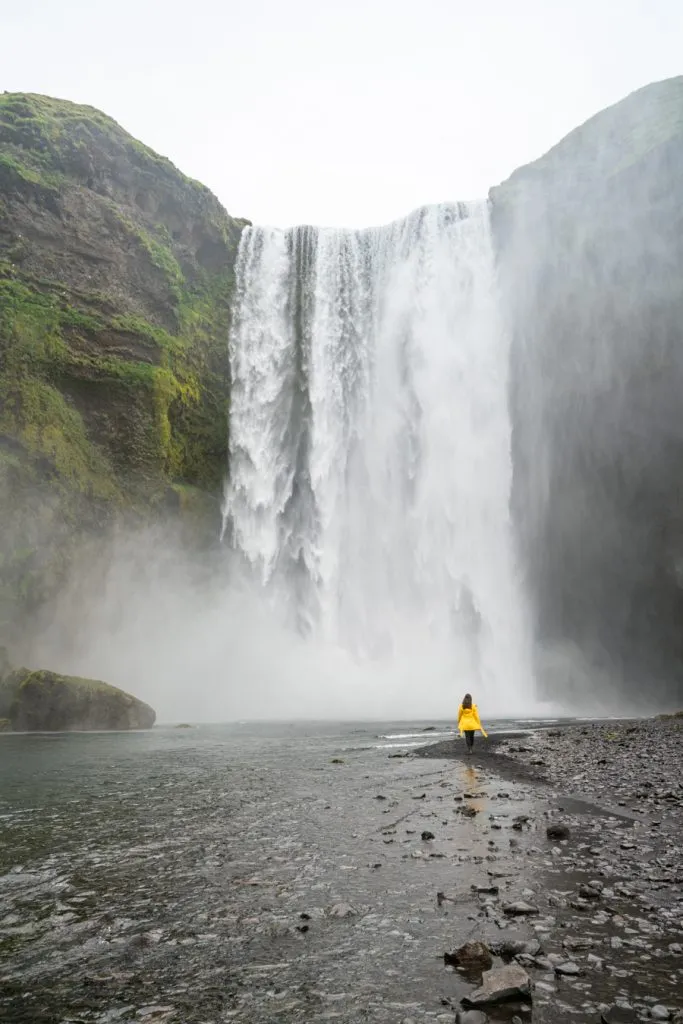
Lonely Planet Iceland — We don’t use travel guides in every destination, but in rural, widespread, land-of-confusing-spellings Iceland, we loved having one!
Waterproof Pants — Perfect for hiking on glaciers with! I use these ; Jeremy uses these .
Waterproof Boots — There’s nothing like having warm and dry feet! I adore these boots and have been wearing them for years.
Reusable Water Bottle — Avoid plastic waste, cut your expenses, and enjoy even more of Iceland’s fantastic tap water. Win/win/win.
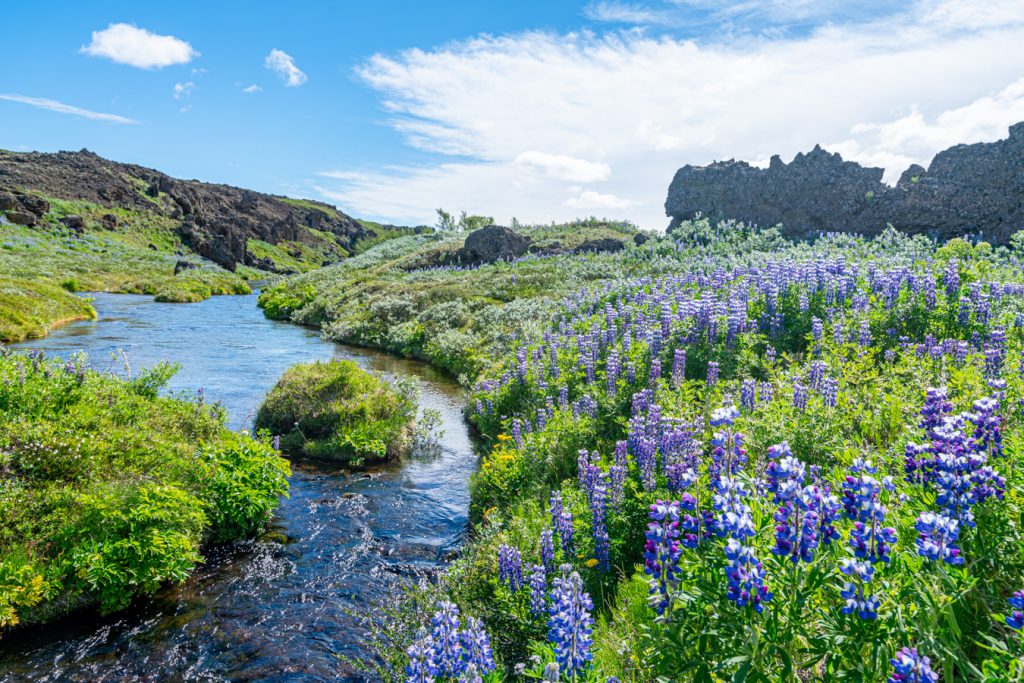
Step 9: Purchase travel insurance for your trip to Iceland.
Don’t forget to buy travel insurance when planning a trip to Iceland!
While Iceland is an incredibly safe country to travel in, traveling in general opens you up to vulnerabilities you simply don’t have at home.
If you lose your luggage, have a fender bender in your rental car, get pickpocketed, or–heaven forbid–get injured, you’ll be glad you have the insurance.
Given how inexpensive travel insurance is when purchased in advance (especially as compared to the cost of flying to and then renting a car in Iceland), we consider it well worth the investment.
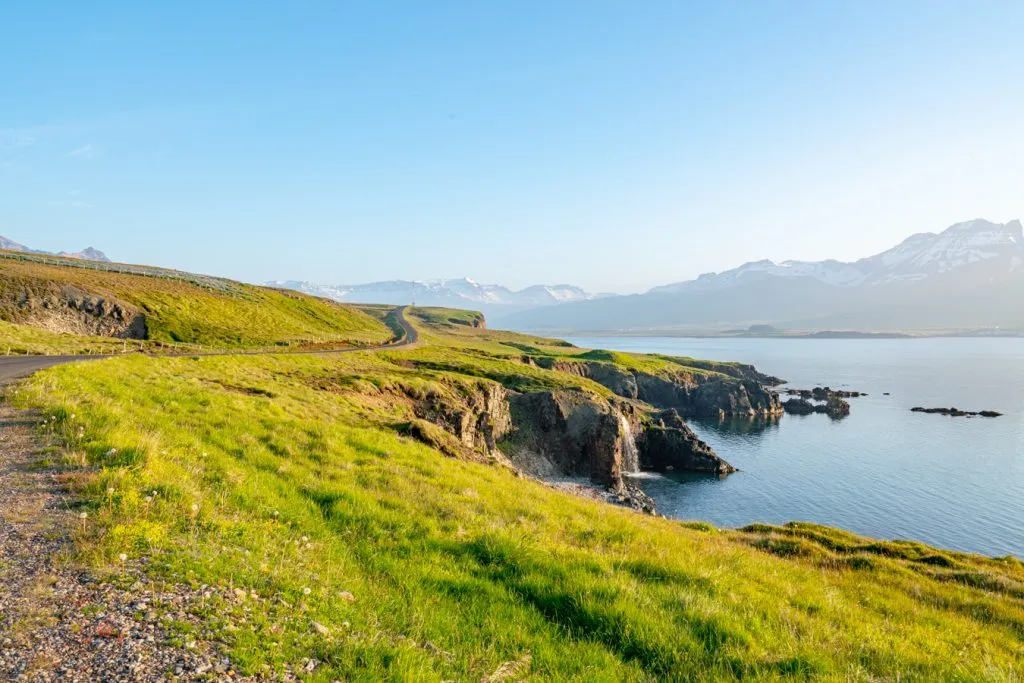
However, that being said, travel insurance companies have been about as prone to changing requirements over the last couple of years as borders have been.
Safety Wing is generally considered a reliable option, but be sure to double and triple-check coverages for any travel insurance policy these days, especially if you’re looking for protection from COVID-19-related issues.
Check travel insurance prices and coverage for your Iceland vacation now!
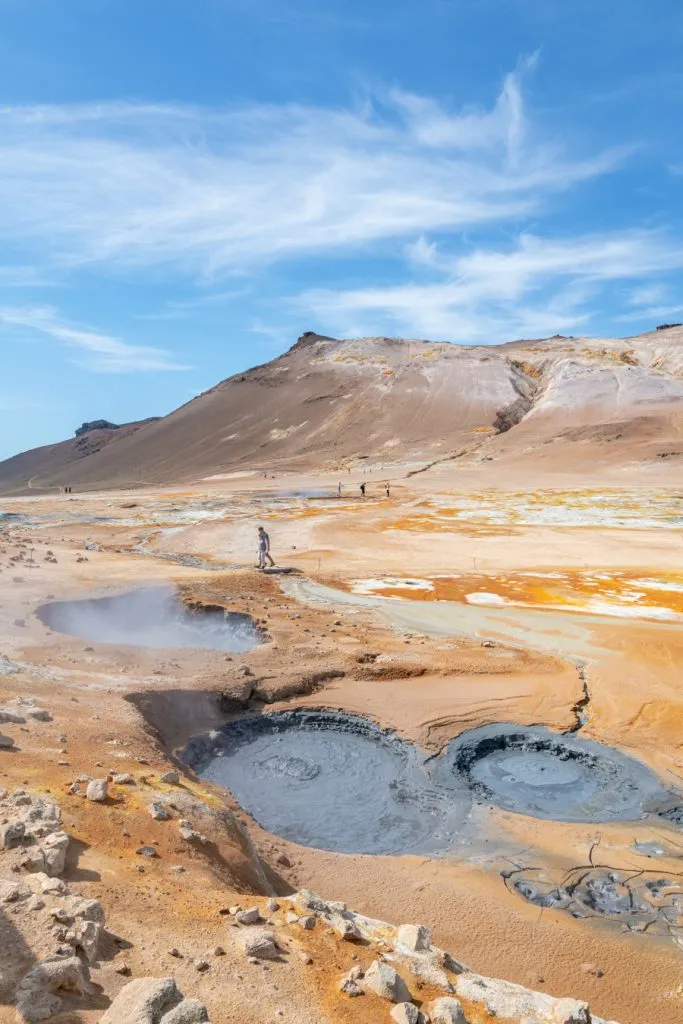
Step 10: Make an arrival plan for your trip to Iceland.
Once you finally finish planning your trip to Iceland and board your plane bound for the Land of Fire and Ice, you’ll still have one final logistical hurdle to overcome before kicking off your adventures: getting from the airport to wherever you’re going next.
For many travelers, that will mean walking or hopping the shuttle over to whatever rental car office they’re using (that’s what we’ve done).
However, if you’re not renting a car on the day you arrive in Iceland, you’ll likely still need to get from the airport to the center of town, which is about a 45-minute drive (there isn’t a train).
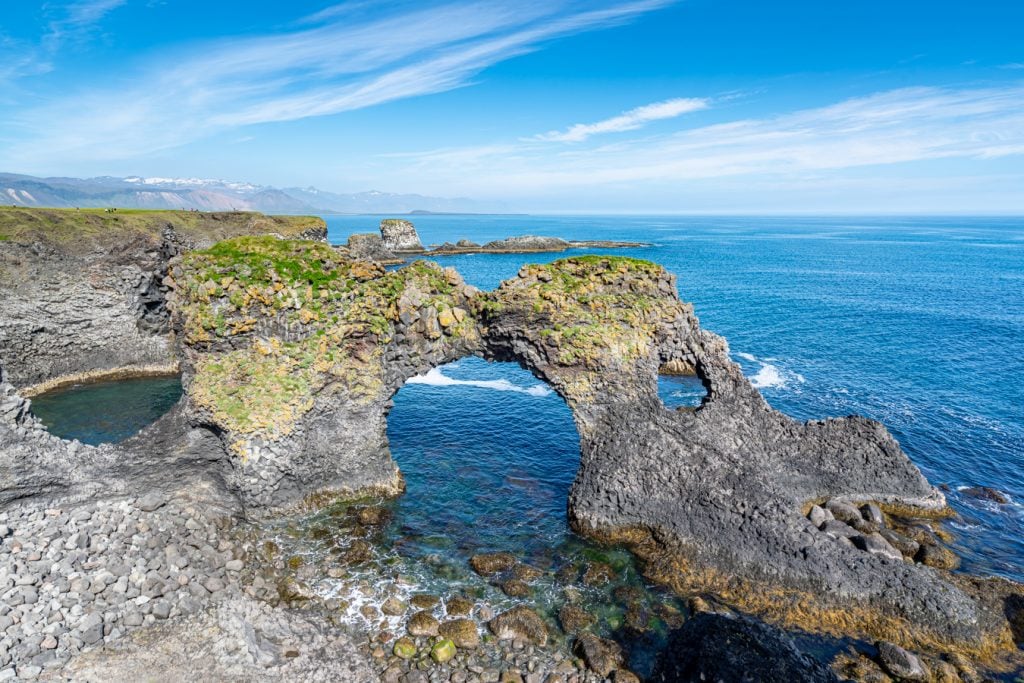
Bus transfers like this are the most popular and economical option to get from KEF to central Reykjavik for those who aren’t driving.
If you’re looking to splurge as you put your Iceland travel plan into action, though, private transfers like this are also available and will get you to your hotel faster.
Both options have their pros and cons, but the time to decide isn’t when you’re jetlagged, exhausted, and desperate to be done traveling.
A little advance planning can go a long way, and ensure you step off the plane confident that you’ve planned the perfect first Iceland trip!
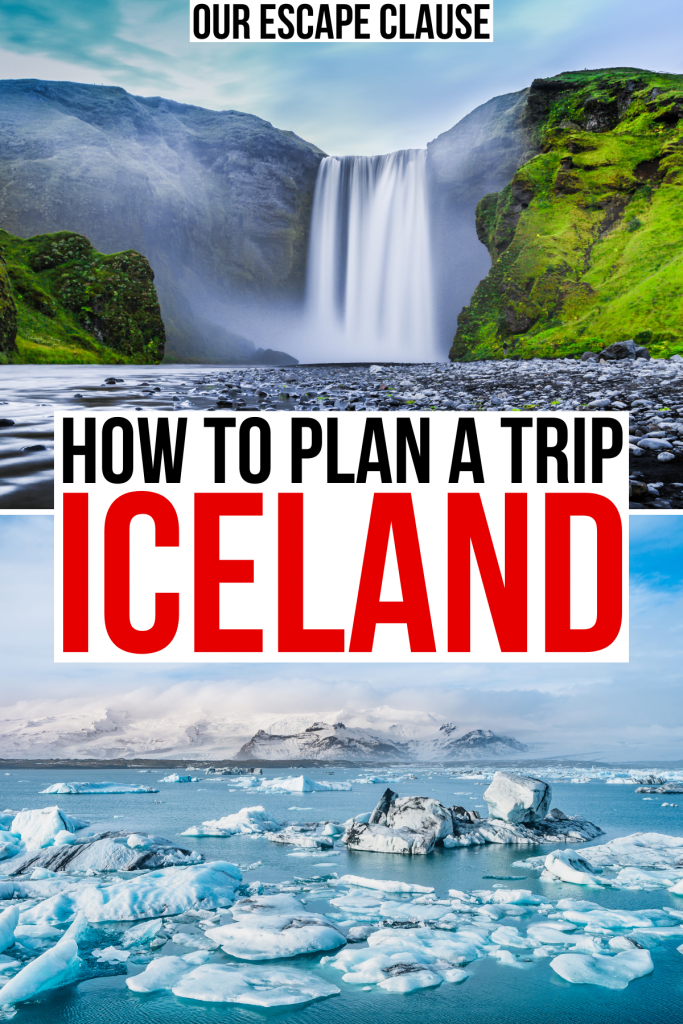
About Kate Storm

In May 2016, I left my suburban life in the USA and became a full-time traveler. Since then, I have visited 50+ countries on 5 continents and lived in Portugal, developing a special love of traveling in Europe (especially Italy) along the way. Today, along with my husband Jeremy and dog Ranger, I’m working toward my eventual goal of splitting my life between Europe and the USA.
2 thoughts on “Planning a Trip to Iceland for the First Time (Your Easy 10-Step Checklist!)”
Thank you for your Iceland guides! The info is incredibly helpful as we opted for a DIY trip instead of booking a pre-planned tour. We are heading out in Oct. Since we are native Minnesotans :-), we should be able to handle the weather (fingers crossed). Thanks again! I look forward to checking your guides to other destinations.
That’s wonderful to hear, thank you, Elaine!
I suspect you guys will definitely be just fine with the weather. 😉
Have a fantastic trip!
Leave a Comment Cancel reply
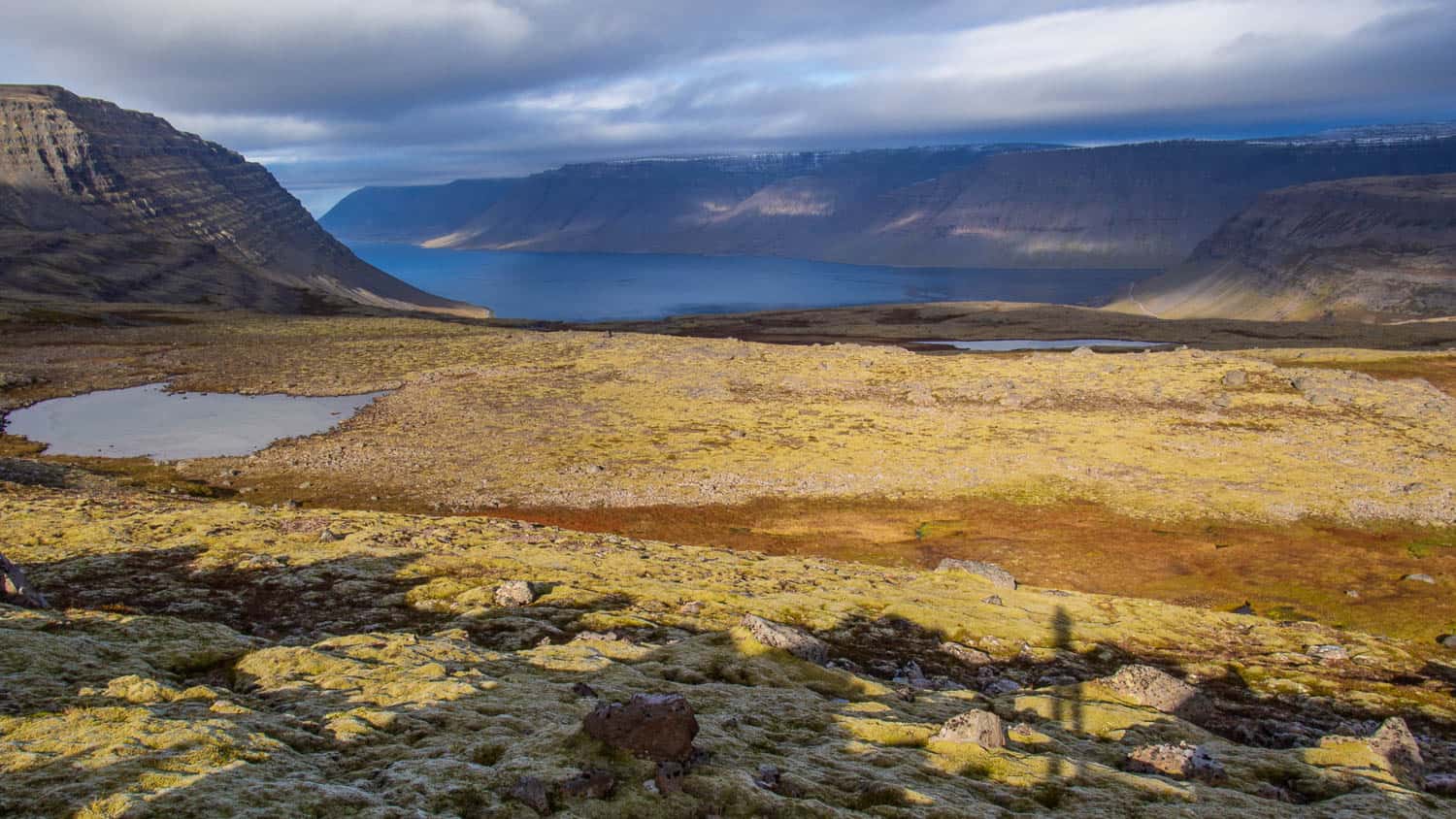
Planning a Trip to Iceland: DOs and DON’Ts (2024)
This page contains affiliate links. Please read our disclosure for more info.
Planning a trip to Iceland is more complicated than to many countries. With its stunning volcanoes, lava fields, fjords, beaches, and waterfalls, it’s no wonder that visitor numbers to Iceland have surged in recent years.
But many tourists underestimate how dangerous this wild and remote island can be.
Some take unnecessary risks and end up needing to be rescued, which is putting strain on Iceland’s volunteer rescue service. Visitors have even been injured or killed after accidents on glaciers, beaches, and cliffs.
This can be avoided, though, and there’s no reason you can’t have a wonderful, incident-free trip by following these Iceland travel tips.
I also include advice for making the most of your vacation in this beautiful country, quirky facts that make Iceland such a unique place to travel, and the latest travel restrictions.
Video: Planning an Iceland Vacation
When is the best time to visit iceland, how long should you spend in iceland, what’s the best way to travel in iceland, before you arrive in iceland, planning a trip to iceland: dos and don’ts, more iceland reading.
Back to Contents
I would happily visit Iceland at any time of year as each season offers a different experience.
Many people consider the summer months of June to August the best time to visit Iceland.
This is when the weather is warmest, although that doesn’t mean it’s hot. In Reykjavik average temperatures in July range from 9 – 14ºC (48 – 57ºF) and it can be colder in the north.
Summer is the time of the midnight sun with daylight hours ranging from 21 hours in late June to 18 hours in early August.
This is the best time of year for hiking, driving the Ring Road (as roads are clear), and seeing whales and puffins. Most attractions and cafes are open.
The downsides of visiting Iceland in the summer are that it’s much busier and more expensive.
Spring and Autumn
To avoid the crowds and high prices, it’s worth considering visiting in the shoulder season months of April/May (spring) and September/October (autumn).
The weather is cold at this time of year but not as extreme as the winter and there’s a good amount of daylight for exploring.
It’s also possible to see the northern lights in these months, although you’ll have more of a chance in April and October.
The downside is that some attractions and cafes are closed.
We loved visiting Iceland in late September when it wasn’t very busy.
We had around 12 hours of daylight and temperatures of –2ºC (28ºF) to 5ºC (40ºF). We enjoyed autumn colours in some locations, the first snowfall on the mountains, and even the northern lights.
See my guide to visiting Iceland in September for more on what to expect.
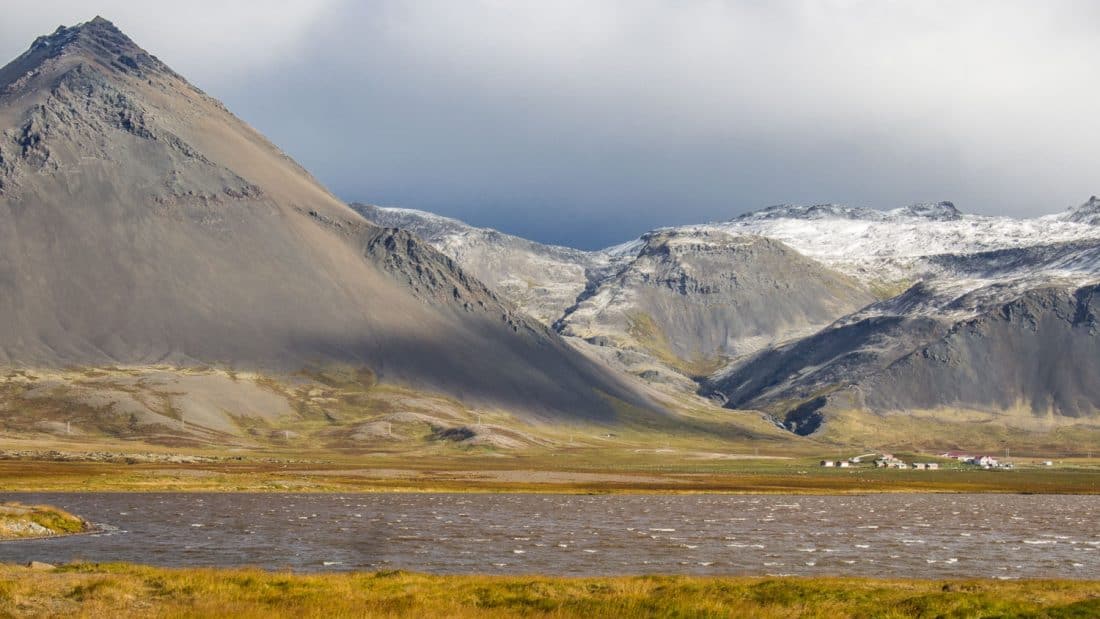
Iceland’s winter from November to March is the quietest and cheapest time of year to visit.
This is the best time of year to visit Iceland for the northern lights, beautiful snowy landscapes, and winter activities like ice caves and dog sledding.
The weather is cold but not as cold as you’d expect (around 0ºC/ 32ºF) and daylight is limited for exploring (only four hours in late December/early January).
The roads are often covered in snow and not all parts of the island are accessible at this time of year—it’s best to stay south. If you aren’t a confident driver, stay in Reykjavik and take tours.
The average length of stay in Iceland is around seven nights.
I recommend visiting for at least five nights—this is enough time to see some of the highlights within a few hours of Reykjavik such as the Golden Circle and Snaefellsnes Peninsula .
If you want to drive the entire 1332km (828 miles) Ring Road, which circumnavigates the island, the minimum time needed is one week. 10-14 days would be much better, though.
We visited Iceland for 12 nights and liked not being too rushed. We were able to have a couple of rest days when the weather was bad. See our western Iceland itinerary for details of where we went.
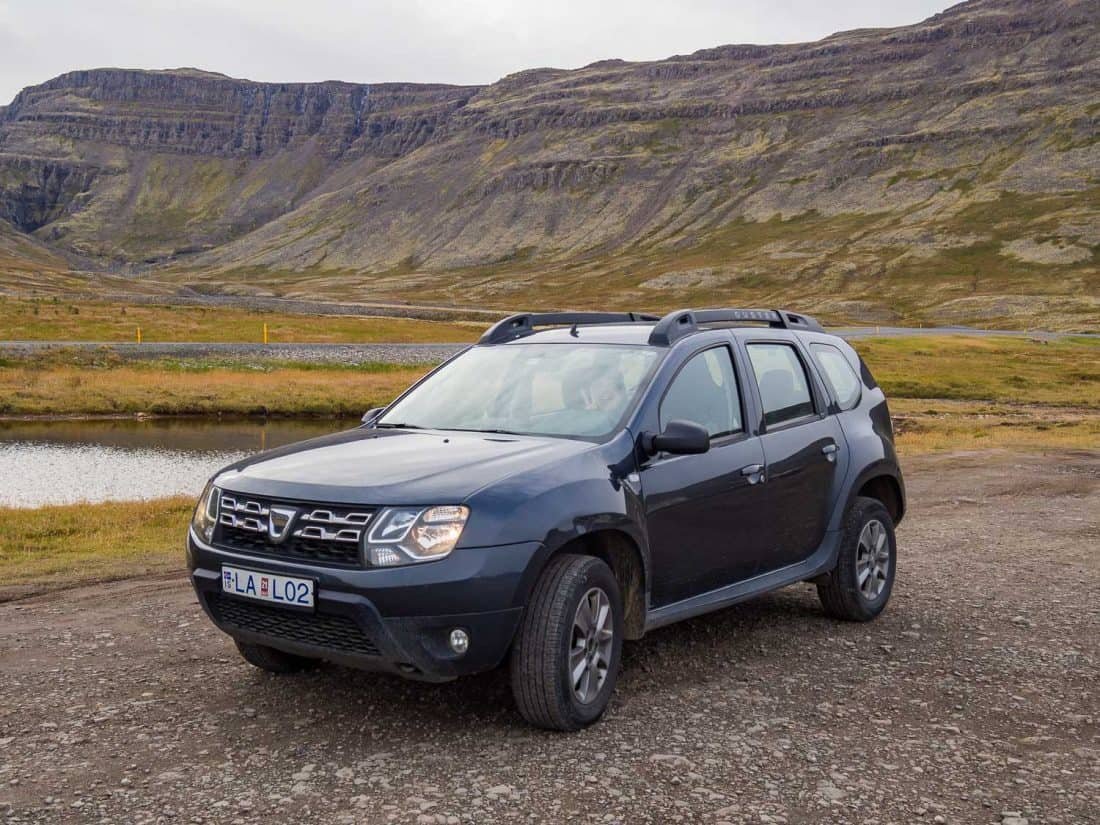
Public transport is very limited so the best way to tour Iceland is with your own vehicle.
If you can drive, the best way to see Iceland is to hire a car and do a self-drive trip around the island.
We use Booking.com Car Rentals to find the best deal. We rented a 4WD car, which we appreciated on bumpy gravel roads in the Westfjords, but it isn’t strictly necessary for most Iceland trips.
We found driving around Iceland easy—there aren’t many roads so it’s difficult to get lost and there’s good cell phone signal for using Google Maps.
Renting a campervan is also a popular way to tour Iceland in the summer. You must park in designated camping zones, though.
Take Tours from Reykjavik
Another way to explore Iceland is to base yourself in Reykjavik and take day tours. You can get a shuttle bus from the airport into the city (which is very walkable).
See Get Your Guide for a wide variety of trips such as the popular Golden Circle tour , whale watching on a luxury yacht , Jökulsárlón Glacier Lagoon , Sky Lagoon geothermal pool , and many more.
This is the best option if you can’t or don’t want to drive or are visiting in winter and aren’t confident driving on snowy roads. It’s also a good way to travel if you are visiting Iceland on your own.
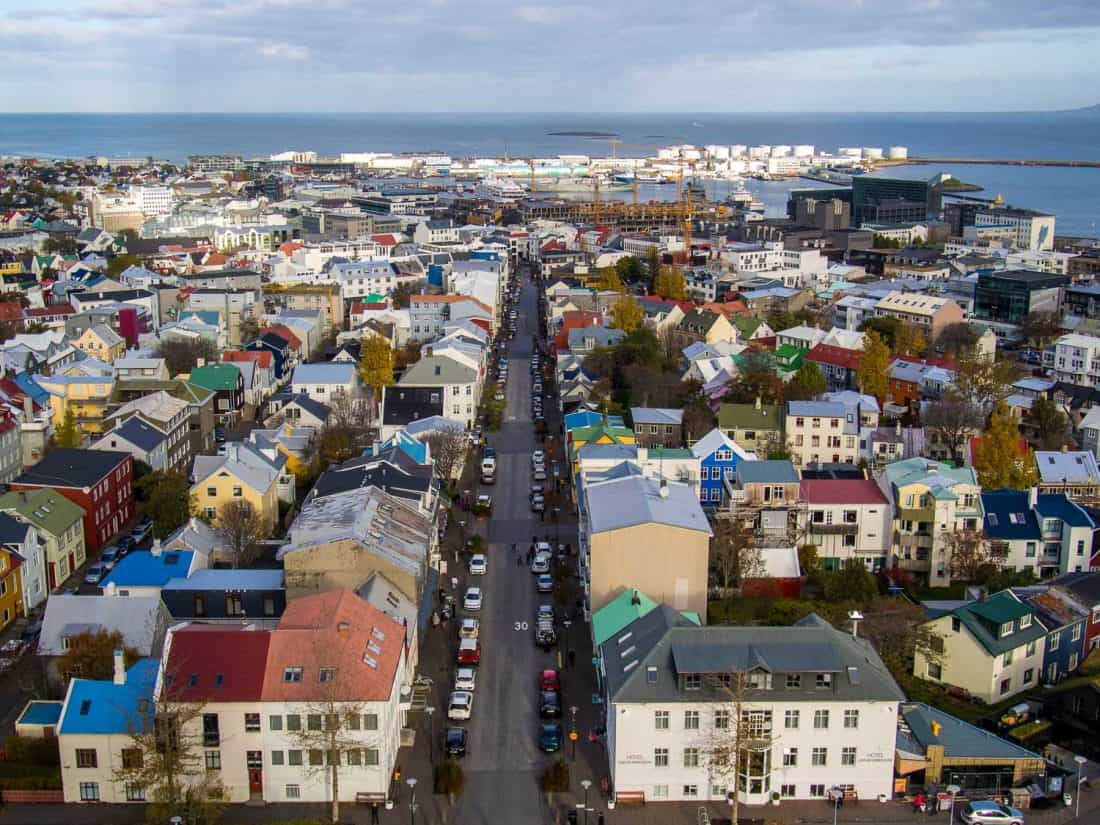
- Save up – Iceland is expensive and you’ll enjoy your vacation more if you aren’t worrying about every penny (on chilly days we really appreciated those hot chocolate and cake breaks). Find out how much our Iceland trip cost .
- Consider visiting in the off-season – Iceland gets very busy in the June to August summer months, so avoid the crowds by visiting at a different time of year.
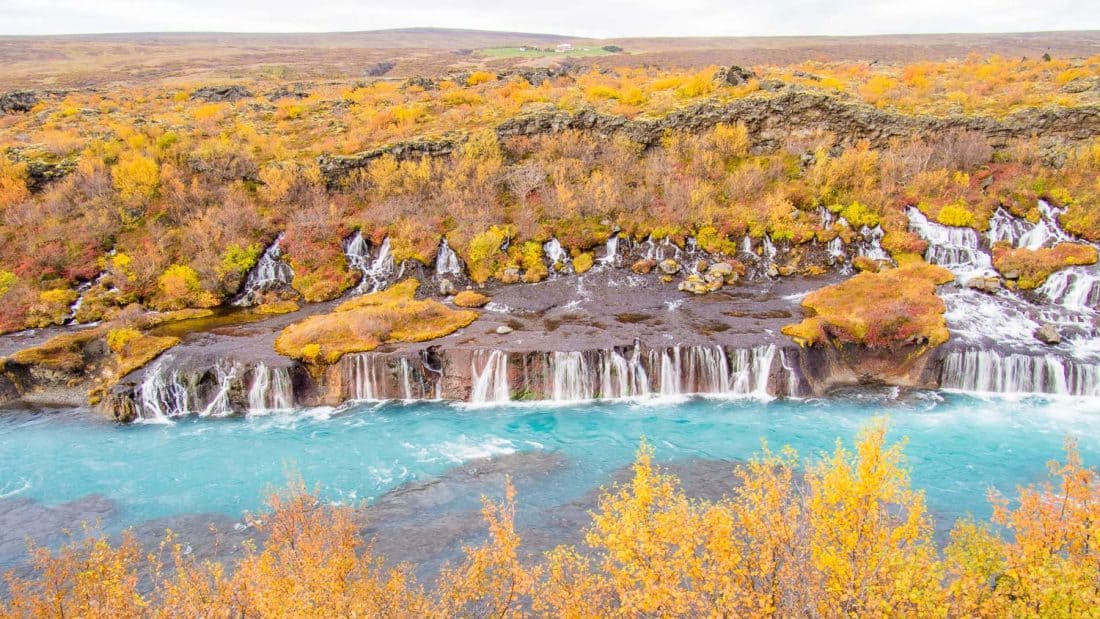
- Plan your itinerary – See our off the beaten track Iceland itinerary for trips of 7 to 12 days or follow the classic ring road around the country (at least 10 days is recommended). Roads in the north are often impassable in winter so stick to the south—here’s a 5 day Iceland winter itinerary .
- Book your accommodation – Especially if you are travelling in the summer high season, you need to book far in advance. You can use sites like Vrbo to find self-catering cabins and save on high restaurant costs. Search on Booking for hotels, guesthouses, and cottages.
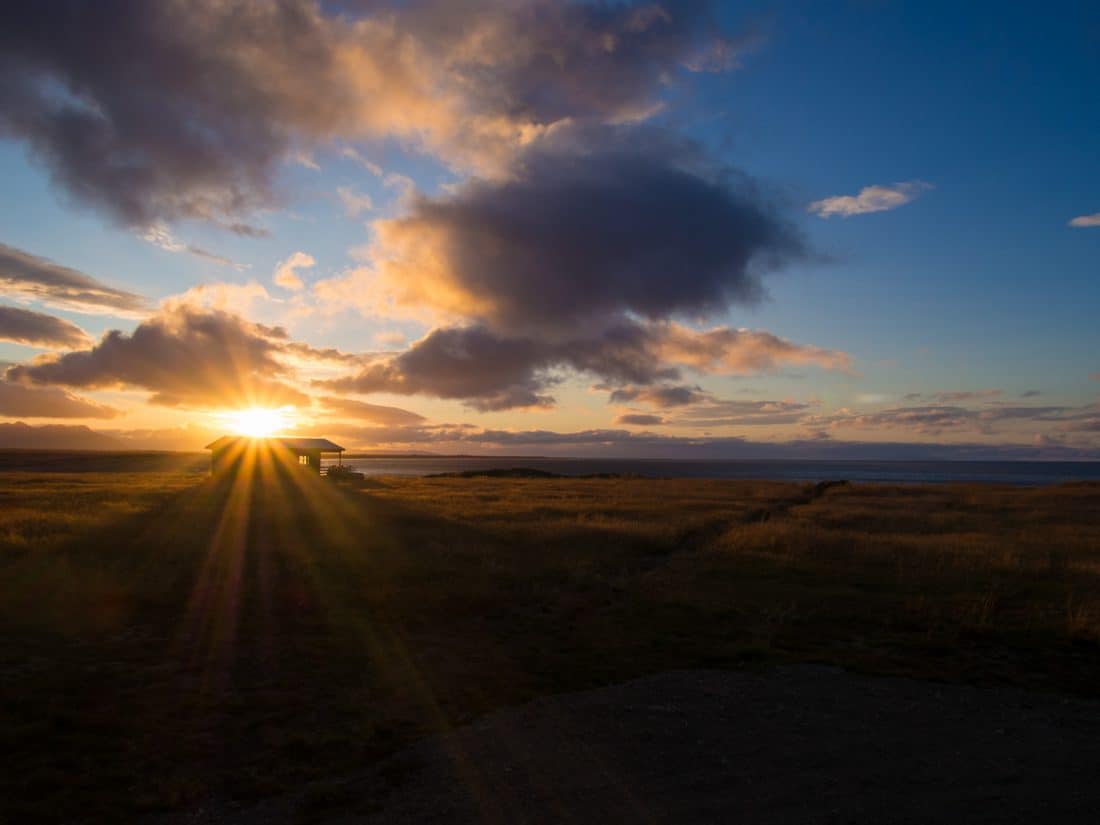
- Buy travel insurance – It’s essential in case anything goes wrong. We recommend SafetyWing (a budget option available worldwide), True Traveller (for UK and EU residents), and Heymondo (available worldwide).
- Book the Blue Lagoon – Iceland’s most popular attraction can book up weeks in advance. It’s near the airport so most people visit after their flight arrives or before they depart. Book the Blue Lagoon with transfers here . We skipped it because it’s expensive, crowded, and we found some gorgeous, isolated hot springs in the Westfjords instead. Next time, I want to visit the new Sky Lagoon in Reykjavik, which should also be booked well in advance.
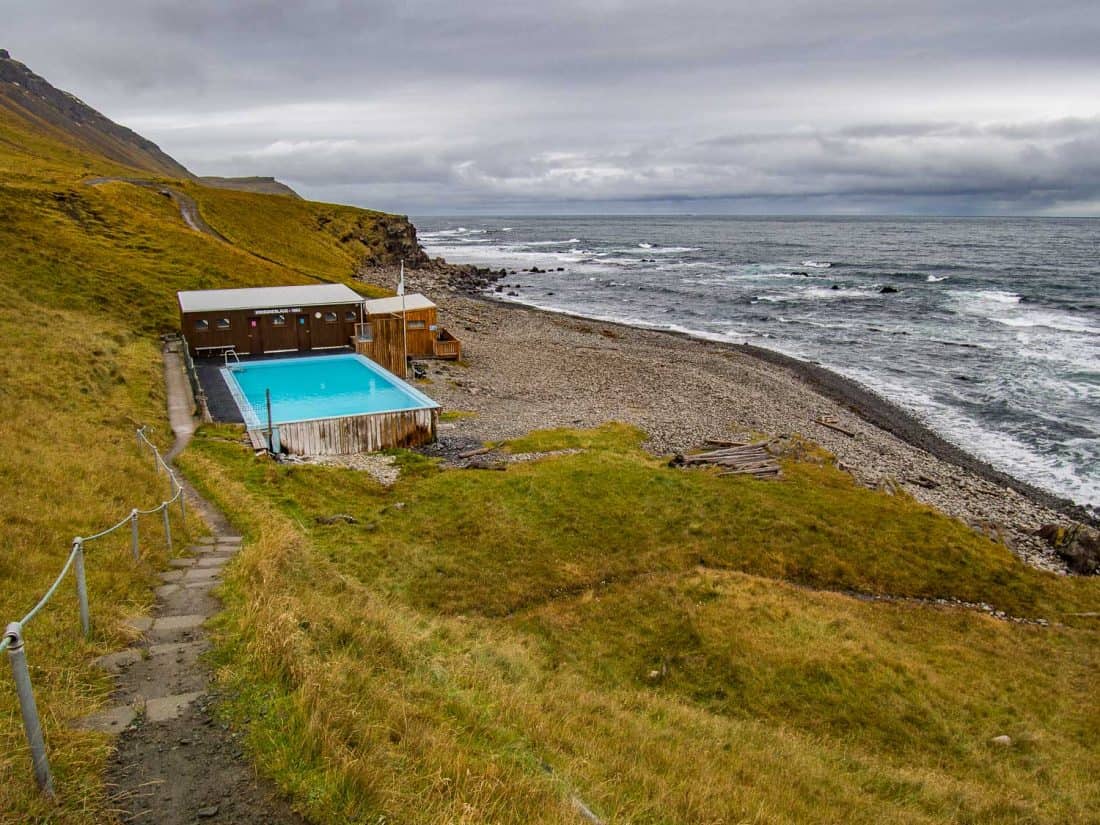
- Read The Little Book of Tourists in Iceland by Alda Sigmundsdottir – For tips by a local on travelling safely and responsibly and to understand the impact the tourism boom has had on the country. If you have time for more than one book, see my picks of the 10 best Iceland books to read before you visit including non-fiction and fiction.
- Pack the essentials – In every season you’ll need warm layers (merino wool is great), waterproofs, waterproof hiking shoes or boots, swimsuit and travel towel (for hot springs), tripod (for northern lights photography), and sunglasses (the sun is often low). See our Iceland packing list for what we took.
- Bring a chip and pin debit or credit card – You’ll need it for self-service petrol pumps.
- Don’t worry about cash – Cards are accepted everywhere. We only needed a small amount of cash on our Iceland trip (about 3000 Icelandic krona worth $21) for unattended hot springs and toilets.
- Read safetravel.is – For tips on staying safe on your Iceland vacation. You can also give them your travel itinerary so they’ll be able to respond if you don’t reach your planned destination.
- Check if an EITAS is required – From 2025, the EU will be introducing an online travel authorisation system for travellers from countries that are currently visa-free (including US, UK, and Canada). You’ll need to apply before your trip and pay a small fee, but full details haven’t been announced yet (and it keeps getting postponed).
- Take the Icelandic pledge
- Be flexible – The volatile weather can mean tours are cancelled or hikes or drives would be too dangerous.
- Check road.is before setting out each day – For details of road conditions and closures.
- Take a walk through a lava field – They are incredible! Our favourites were on the Snaefellness Peninsula .
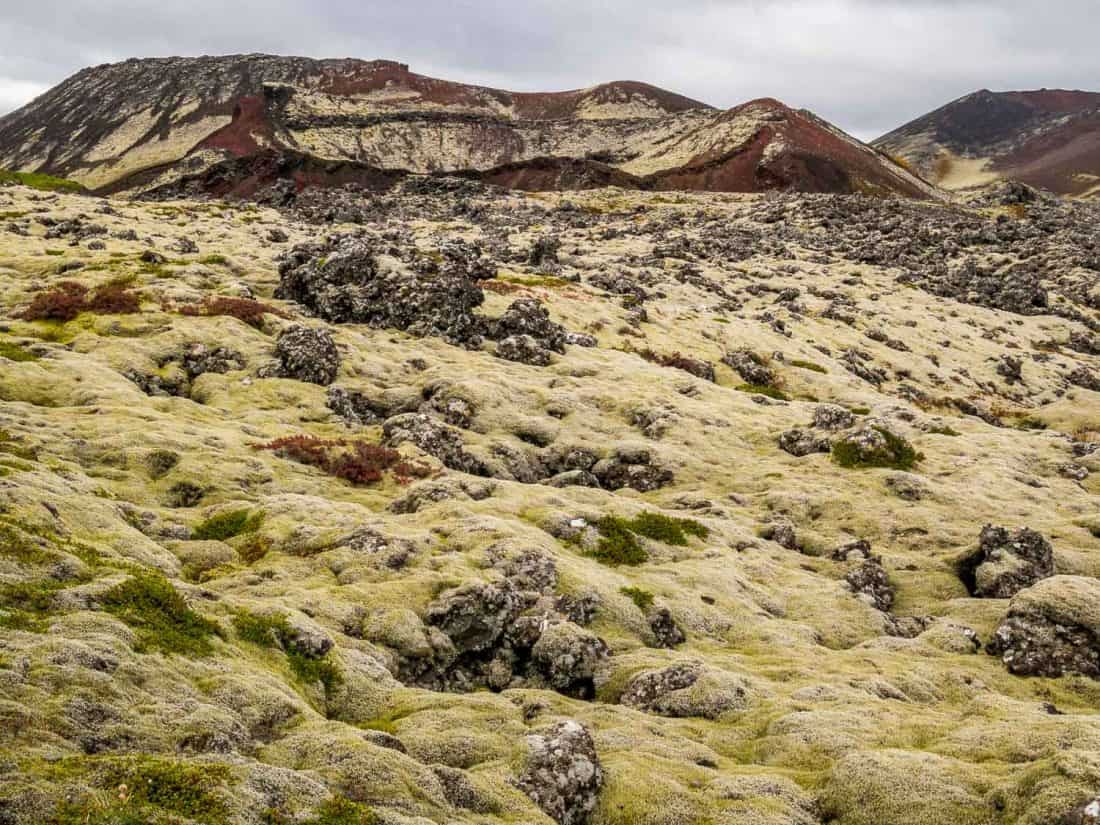
- Expect to see many waterfalls – They are everywhere! My favourite was Dynjandi in the Westfjords.
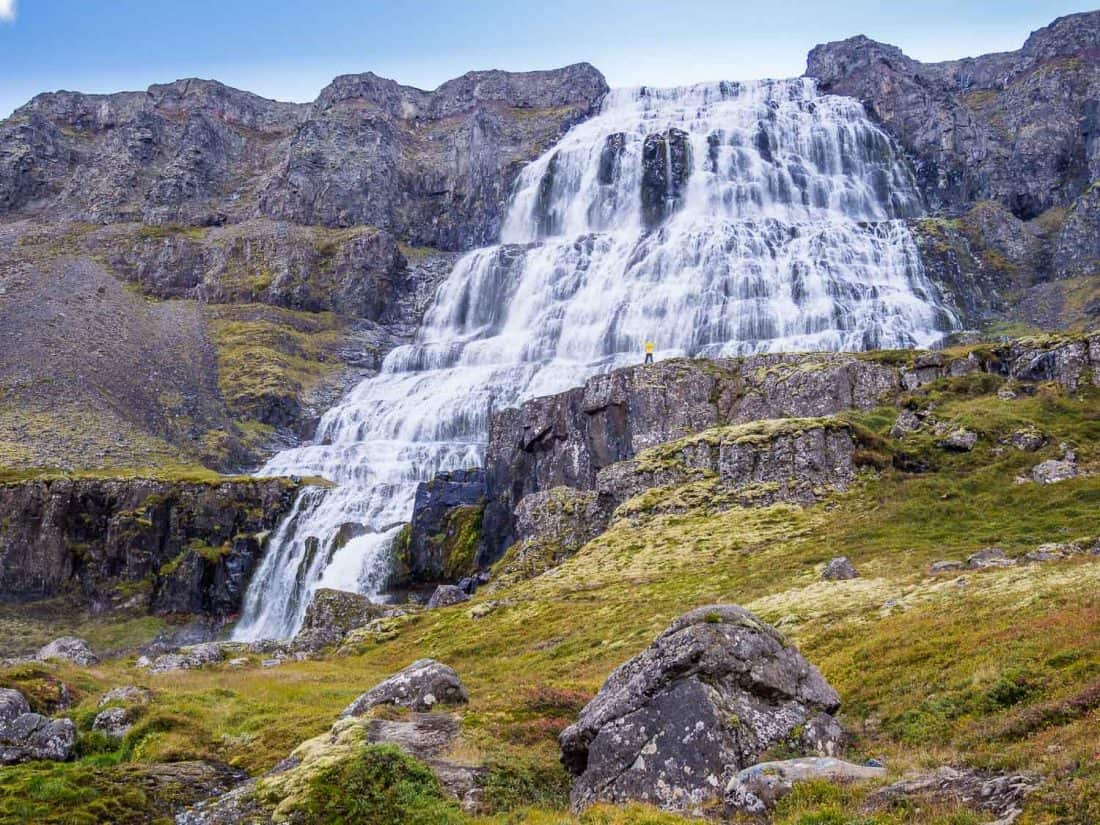
- Drink the tap water – It’s pure and delicious. Bring a lightweight, foldable water bottle like the Vapur with you.
- Look out for the northern lights from September to mid-April – We used the Aurora app and Vedur website to see our chances. We got lucky on a 30% chance day and saw them outside our Bjarkarholt cabin in the Westfjords. It’s best to stay in the countryside where there’s no light pollution. If you don’t have a car, you can take a northern lights tour from Reykjavik .
- Use a tripod and long exposure – To take photos of the northern lights. Most of mine were taken in manual mode at f2.8 with a 10 second shutter speed.
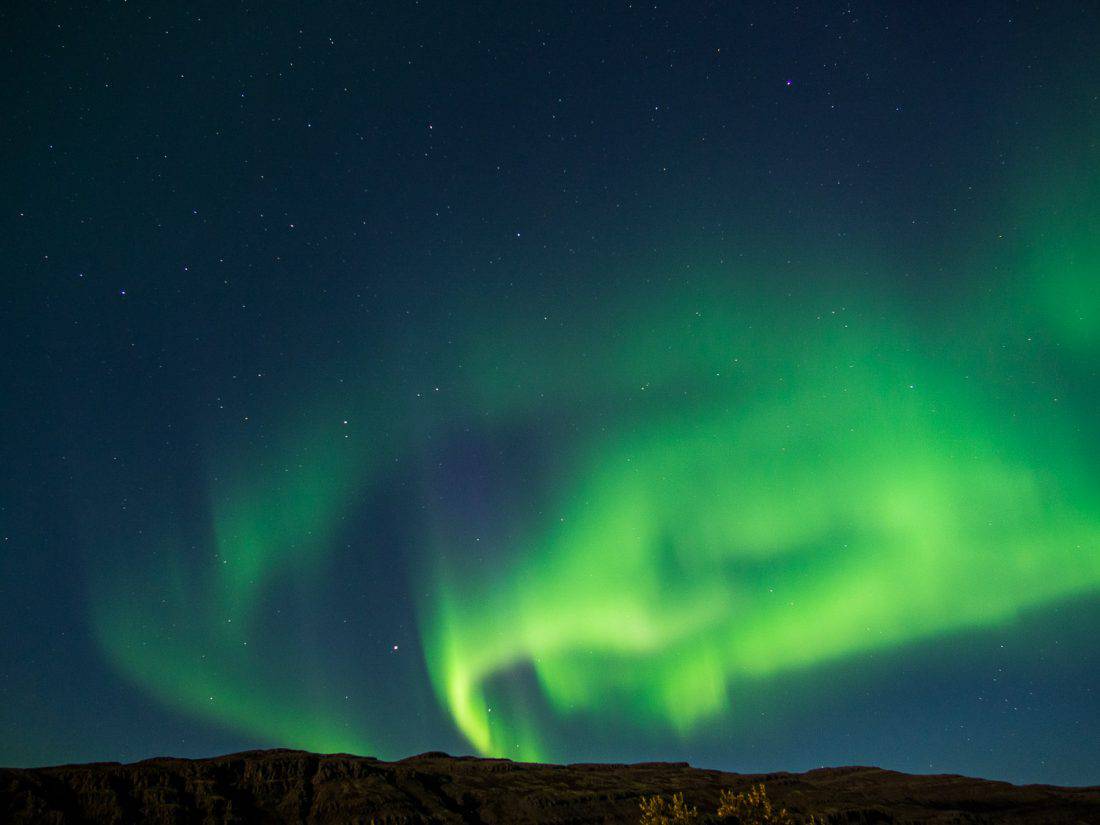
- Enjoy the midnight sun – If you visit Iceland in the summer when it’s light almost 24/7.
- Drive with your headlights on at all times .
- Be careful of sheep on the road – And always report it if you run one over (you won’t be fined).
- Fill up with petrol when you can – You might not come across a petrol pump for a while.
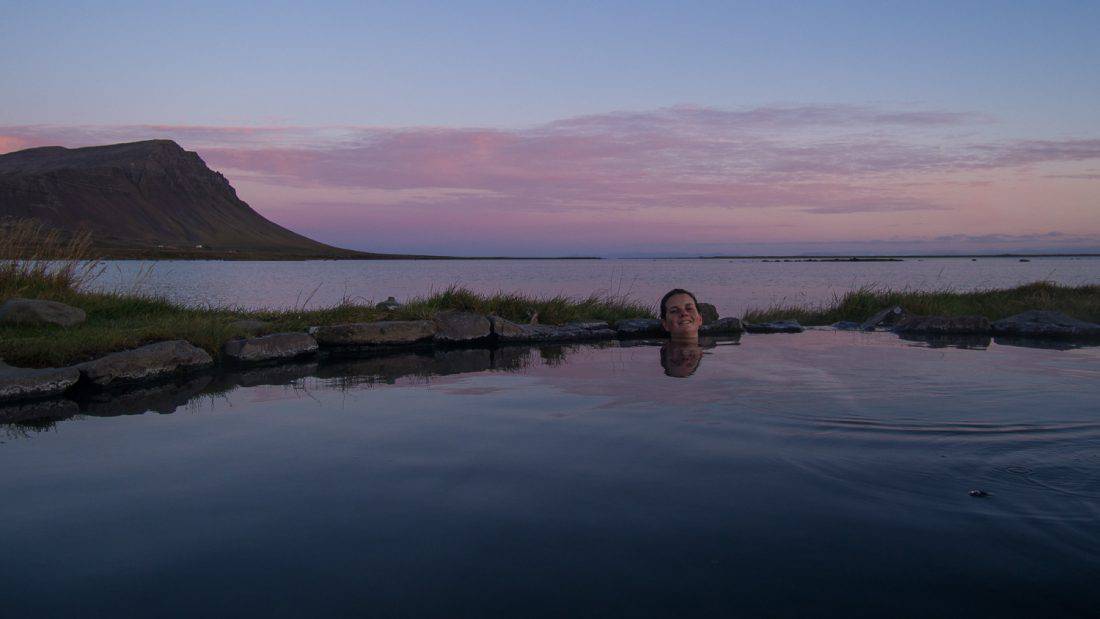
- Relax at geothermally heated swimming pools and hot pots – You’ll find them in even the smallest towns and it’s so lovely to swim in warm water when it’s cold outside.
- Shower naked thoroughly (without your swimsuit!) before entering a hot spring or pool – Public nudity isn’t a big deal in Iceland and you’ll draw far more attention to yourself if you don’t. They are very strict about this! There are separate male and female showers. You wear your swimsuit in the pool.
- Use the toilet whenever you find one (they are in short supply) – Be prepared to pay, usually around 200 ISK ($1.40). It’s worth keeping a small amount of cash for this.
- Admire the cute wooden churches everywhere .
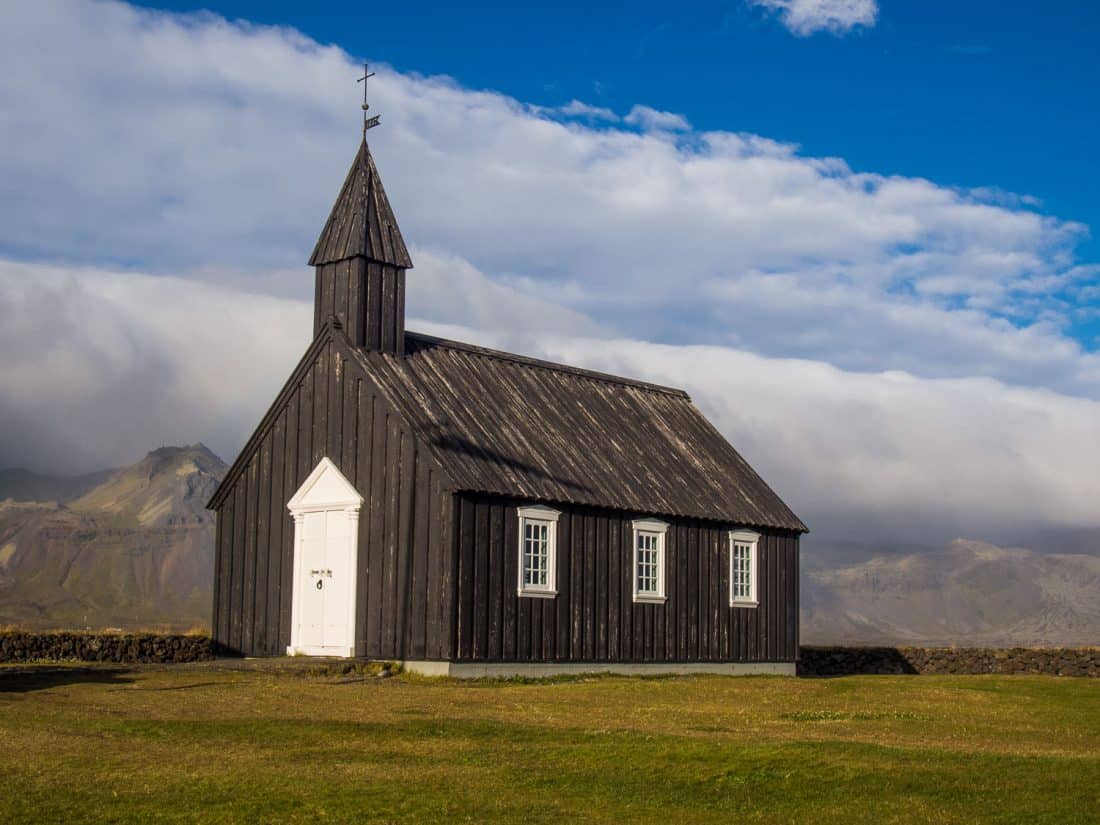
- Look out for seals – We saw them three times lazing on rocks by the sea.
- Ride an Icelandic horse and try its unique, smooth pace, the tölt.
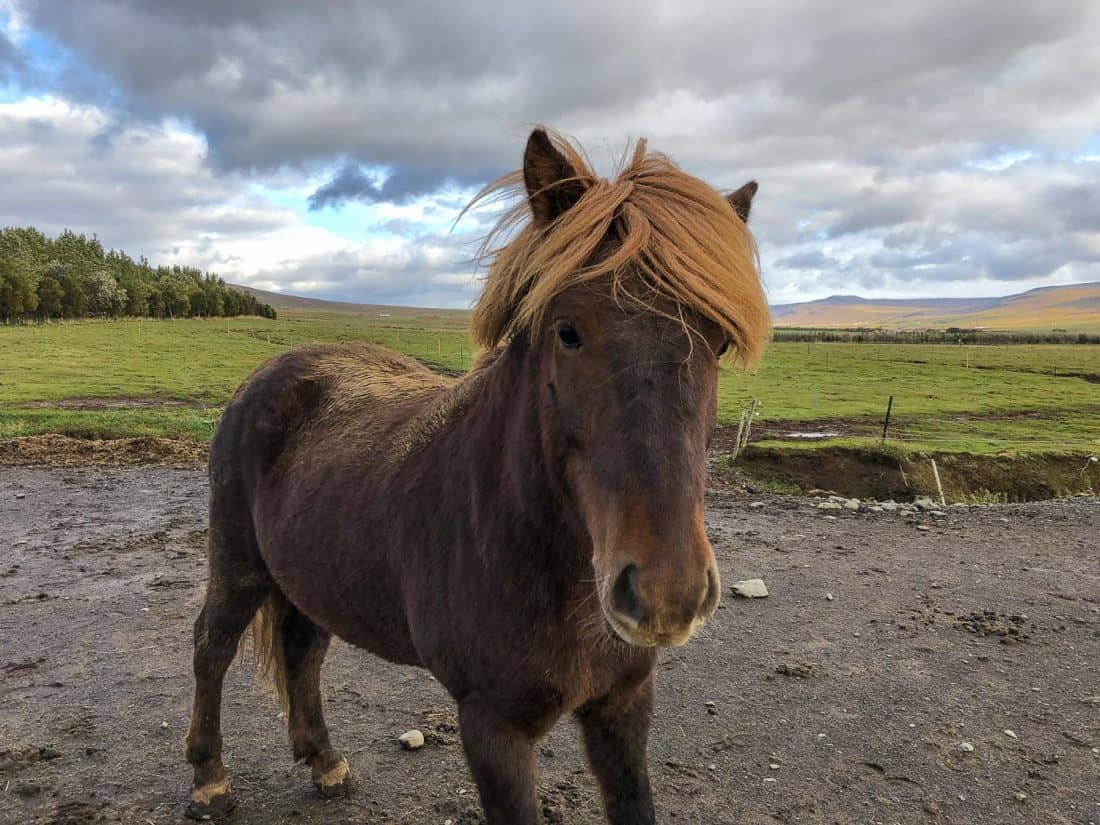
- Create a playlist of Icelandic music – I will forever associate Of Monsters and Men with epic drives through the mountains. Iceland has a huge number of talented bands—check out Björk, Sigur Rós, Solstafir, Ásgeir, Múm and many more.
- Read books by Icelandic authors – It’s a very literary country. Nobel Prize-winning Halldór Laxness is the most famous author, and reading the classic Icelandic Sagas from the 13th and 14th centuries will give you a greater understanding of the country as famous sites from the stories are everywhere. See my 10 favourite books about Iceland including fun, quirky, and mysterious novels.
- Take a walk on a beach – It’s unlikely to be sunbathing weather, but Iceland’s dramatic black, golden, and red beaches are perfect for wild walks.
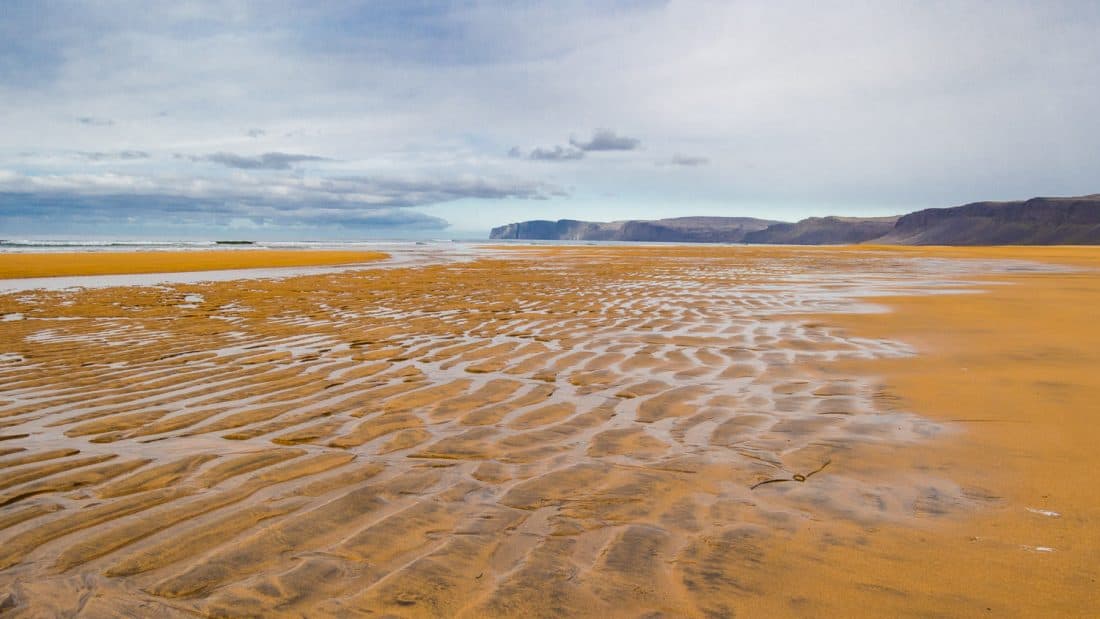
- Shop at Bonus supermarket – It’s the cheapest place to self-cater.
- Pack a picnic if you are road tripping – There often isn’t anywhere to stop for lunch, especially outside the summer when remote cafes close.
- Stock up on alcohol at Duty-Free on arrival at the airport if you want to drink – It’s much cheaper than in the state-run liquor stores (the only place you can buy booze).
- Enjoy delicious hot chocolate and cake (or a cinnamon bun) at one of Iceland’s excellent cosy cafes.
- Check Grapevine , a free English language newspaper – For what’s on in Reykjavik and enjoy its legendary nightlife and music scene on weekends.
- Call everyone by their first name – Titles aren’t used in Iceland. Instead of surnames, Icelanders use patronymics (or less commonly matronymics) made up of their father’s (or mother’s) name plus “son” (son) or “dóttir” (daughter). E.g. Björk Guðmundsdóttir is Gudmund’s daughter.
- Underestimate the weather – Icelandic weather changes fast and can be dangerous. Check the Vedur website or download their app for weather forecasts. Always be prepared with extra layers and waterproofs.
- Drive in a storm – Strong winds can blow cars off the road or volcanic rocks into your windscreen in scary sandstorms.
- Stop on the road – I understand, you will feel the urge to take a photo every few minutes, but always pull over into a parking area, even if the road seems empty.

- Speed – Stick to the speed limit of 50 km/h in urban areas, 80 km/h on rural gravel roads, and 90 km/h on rural asphalt roads.
- Feel the need to tip – It’s not rude to do so, but it’s not expected or customary.
- Wild camp – This is now banned and you must park your campervan or put up your tent in a designated campsite.
- Risk your life for a photo – Respect any barriers that have been put up.
- Get too close to cliff edges or the surf – Tourists have fallen off cliffs and been killed by rogue waves (especially at Reynisfjara beach).
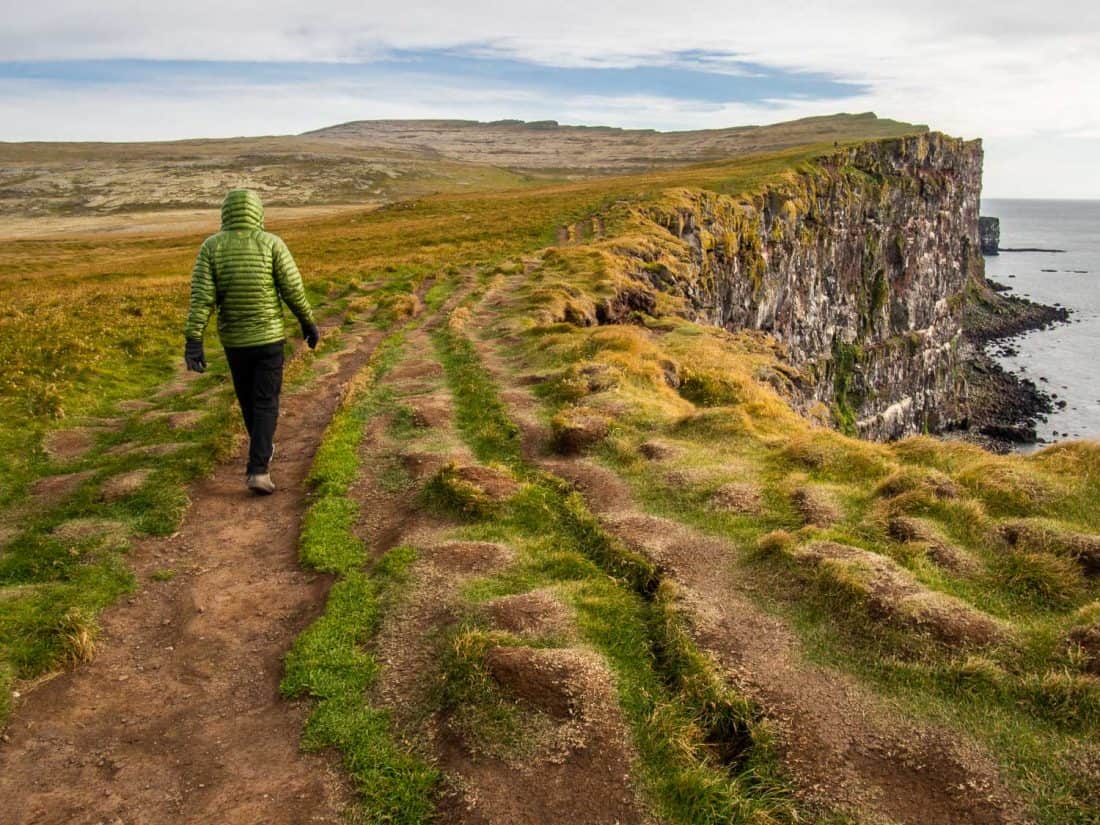
- Walk on the ice at Jökulsárlón glacier lagoon – The ice is not stable and the water is dangerously cold.
- Go onto a glacier without an accredited guide – There are hidden crevasses that you could fall into.
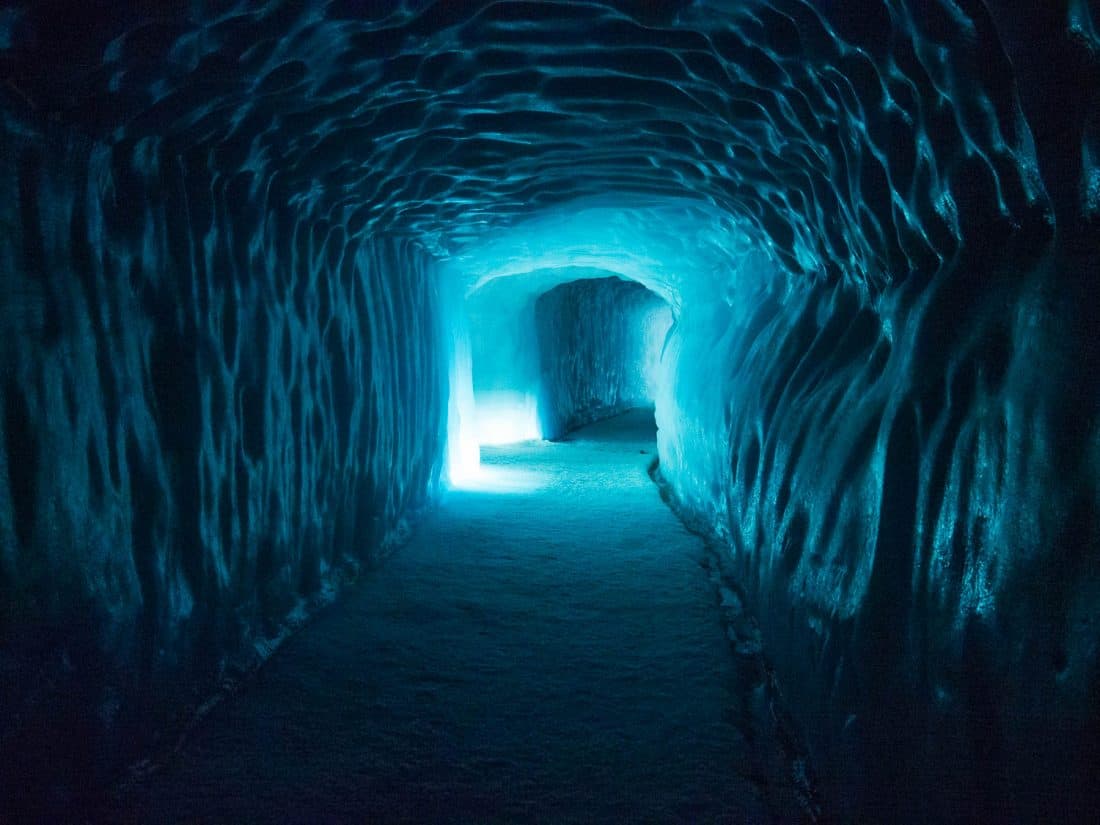
- Drive on F roads without a 4WD vehicle
- Drive off-road in any vehicle – It damages the landscape and you’ll receive a high fine.
- Worry about staying connected – Even the remote cabins we stayed in had good WiFi and we had 3G or 4G signal almost everywhere. If you don’t have an affordable data plan for Iceland, buy an Airalo e-SIM and get online as soon as you arrive.
- Feed horses – Yes, they are cute, but it is bad for their health. It’s best to visit a horse farm like Sturlureykir , where can pay a small fee to interact with them (or go on a ride).
- Take rocks or pebbles as souvenirs
- Litter – Have some respect for this beautiful place.
- Ask Icelanders if they believe in elves (aka hidden people) – The majority do not, although they understand that many of their ancestors did and they are part of their heritage.
- Rush – Iceland’s a stunning country, take your time and enjoy it.
I hope this post has answered any concerns about how to plan a trip to Iceland. Let me know if you have any questions in the comments below or share your own Iceland travel tips.
- Iceland Itinerary: Off The Beaten Path on a Snæfellsnes and Westfjords Road Trip
- 14 Places Not to Miss on the Snaefellsnes Peninsula
- How Much Does an Iceland Trip Cost? Our Road Trip Budget
- 10 Best Books About Iceland to Read Before You Visit
- The Ultimate Iceland Packing List for Men and Women
- Visiting Iceland in September: What to Expect and Things to Do
If you enjoyed this post, pin it!
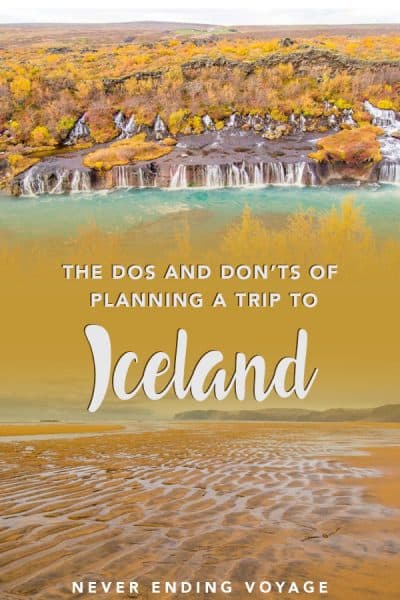
35 Comments
Hi, great blog. I’m thinking of taking my 3 teenagers to Iceland. I don’t want to be stuck in the hustle of a “tour group” experience. Is it possible to do it on my own with just day trips? How is late June? Will we be able to see glaciers and ice caves or are those only in the winter? Thanks!
Reply ↓
Yes, you could do it on your own with day trips if you hire a car and don’t mind a fair amount of driving.
In this case, you might also want to consider a night or two outside Reykjavik though–the Snafellsness peninsula is only a few hours away and is worth the extra time.
Late June is busy and expensive (book asap), but the weather is at its best (but still be prepared for cold) and you’ll have up to 21 hours of daylight.
Langjokull Ice Cave is on a glacier and can be visited year round as it’s man made. You have to visit on a tour from Husafell or Reykjavik.
Enjoy Iceland!
I loved your article. I would like to ask: is it possible to visit Iceland on day tours from Reykjavik? Or is it better to take a 6 days tour of the country? Is it possible to rent a bus from Reykjavik for a group of people?
You wouldn’t be able to see the whole island, but I wouldn’t recommend trying to do that in 6 days anyway. You can certainly see a lot by taking day tours from Reykjavik. Many people who don’t want to drive do this.
I’m not sure about renting a bus. But if you have a really big group maybe contact an Iceland tour company for advice. Organising a private tour might make more sense than joining a group tour.
Credit card use is very pervasive.
However at campsites where laundry and showers are coin-operated, how does one get the coins needed?
We haven’t stayed at campsites so I’m not sure, but we withdrew a small amount of cash from an ATM at the airport on arrival.
Very good article, we just returned from our two weeks in Iceland. and the only thing I would add it’s the wind, not the temperature that is hard to handle. Plus all the Icelandic people we delta with all spoke perfect English, a couple of times I had to ask them where they were from, only to be shocked that they were from Iceland. Enjoy your trip, we did, oh and make sure you get full car insurance!
It’s really helpful for my Christmas Iceland Trip! I hope I can experience a lot as you said!
Thank you very much, Erin, for this super informative blog. I’m planning to visit Iceland sometime in Feb/Mar 2023. Will visit the places of interests you shared. We come from Singapore – hot climate. Might be a struggle to keep ourselves warm in Iceland. :-(
Great information, You answered all my questions
Planning a trip to Iceland now and this has been a super helpful place to start! Thanks so much for a really awesome guide. Reading your 5-day Winter itinerary next as we’re going February 2022 so that could be perfect for us!
Thank you. Very informative, organized, and superb photography.
Thanks, Jay!
After spending 18 months sequestered and being fully vaccinated, I did an 8-day tour of Iceland and although it was challenging getting there from Western Canada, once I got there I loved it! I can verify all the recommended do’s & don’ts are true and worth your while following. The landscape is like no other in the world and it took my breath away despite not having the best weather. The people very friendly & welcoming, the food amazingly delicious, hotels & accommodations modern, simple & comfortable. Our tour and our guide was amazingly knowledgeable & experieced who kept us entertained with great facts, history, geology, birding knowledge & some tall tales. Loved it and would visit again!
Thanks for the trip report, Aida! It sounds like an amazing trip! You’re making me really want to go back.
Are the travel restrictions for Vaccinated people lifted for Iceland? FYI: I’m an american
Yes, you can travel to Iceland now.
I can’t wait to move to Iceland
Hi, I’m an American, do you think the travel restrictions will be lifted by the summer?
Thank you, Jessica
No one really knows but it will depend if the US can get the virus under control by then. It looks like from 1 May, Iceland hopes to open up a little more but that will be based on each country’s situation. Edit: All restrictions have been lifted: https://www.government.is/government/covid-19/covid-19-news/2022/02/23/COVID-19-Lifting-of-all-domestic-restrictions-and-restrictions-at-the-border/
Personally I wouldn’t book anything unless you have free cancellation.
Hi Erin. Thanks for this guide. My wife and I are planning a trip there in September or October. We are US Citizens, so we hope it can happen. We have travel certificates which expire at the end of the year, so we are sort of up against a wall. We have to check to see what the cancellation policy is. Fingers crossed that it can happen.
Good luck with it! It’s so hard to say what will happen with travel this year.
Thank you very much for this guide! I’ve been looking at pre-paid packages and trying to decide whether to do one of those or create my own. Do you have any advice for a solo female traveler? It’s my first solo trip and I am excited but nervous.
I don’t have any experience of solo travel in Iceland but it’s a very safe country and we know plenty of women who loved it. Probably the easiest way would be to stay in Reykjavik and take day tours. If you are a confident drive you could also rent a car and head off by yourself. It’s pretty easy to arrange your own trip. Enjoy!
we are planning a trip this summer. thanks for all the information!
Enjoy, Elana!
The pics are literally breathtaking. Can’t wait to see it all with my own eyes next summer. Thank you for the tips, really valuable for me planning my first encounter with this beauty.
It is one of the most stunning places we’ve ever visited. Have an amazing trip!
This is a great resource! Thanks so much for taking the time to put it together. I particularly appreciate the tips regarding the need for a credit/debit card with a chip and pin for buying gas/petrol, the custom for gratuities, the Icelandic music playlist (perfect for the road trip!) and reading suggestions, and where to buy alcohol and groceries. And my favorite tip is to enjoy the hot chocolate and cake…don’t need to tell me twice!
I’m so glad you found it useful Heather!
Good list! I have two comments:
– Love the thing about tipping! During my trip, I actually asked one waitress what would be an appropriate tip and she said: “We have normal wages here, we don’t need tips”. ??
– I tried to read Independent People by Laxness while in Iceland but I had to give up. There’s only so much interest I can muster about the sheep… ?
Ha! I haven’t read Independent People yet as I heard The Fish Can Sing is a more accessible, lighthearted introduction to Laxness and I did enjoy it.
Erin what a rocking list. All noted. Iceland reminds me somewhat of New Zealand. Insane beauty, kinda expensive and yep, gotta have you head on a swivel sometimes. Especially driving.
Leave a Reply Cancel reply
Required fields are marked *. Your email address will not be published. By clicking the Submit button, you give consent for us to store your information for the purposes of displaying your comment and you accept the terms of our Privacy Policy .
This site uses Akismet to reduce spam. Learn how your comment data is processed .
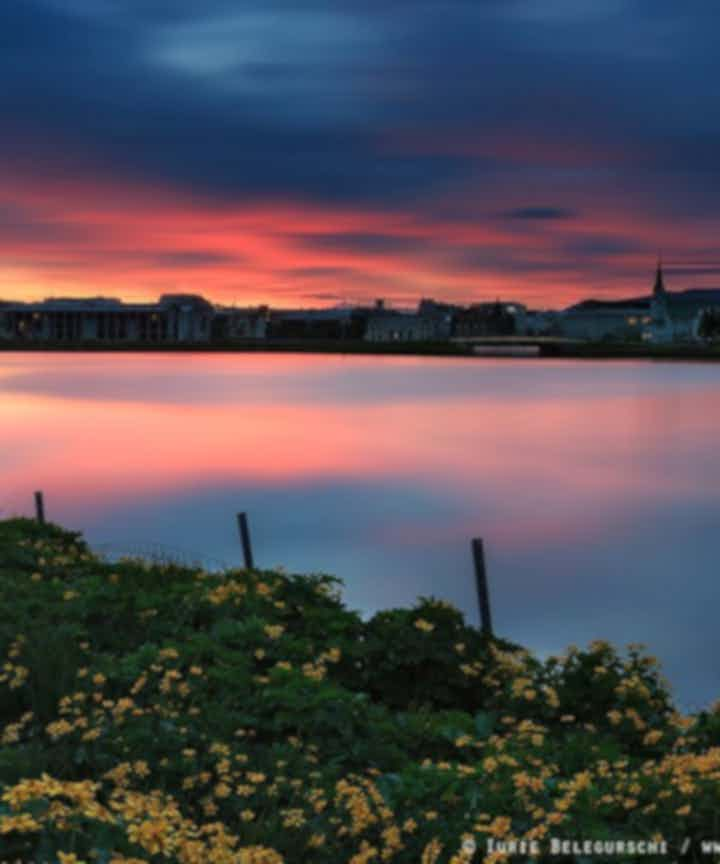
Travel Information
Top articles.
Explore the wealth of Iceland's travel opportunities
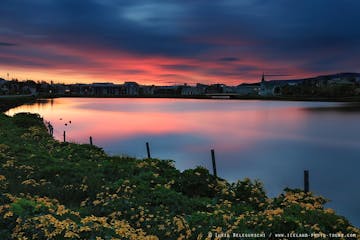
Guide to Iceland | The Story of the Leading Travel Agency of Iceland
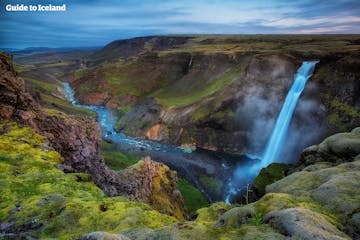
Iceland's Weather, Climate, and Temperature Year-Round
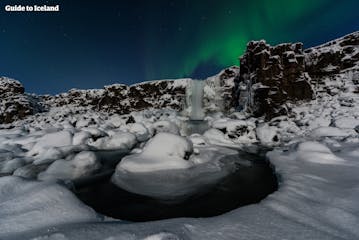
Hiking in Iceland: A Complete Guide to the Best Hikes and Trails

Driving in Iceland: The Ultimate Guide to Road Trips

Things That Can Kill You in Iceland (Plus Sand Snakes)

Maps of Iceland

What To Pack for Iceland for All Seasons

9 Worst Tourist Traps in Iceland
Drive iceland for the best holiday, how expensive is iceland when to visit & how to save money, travel etiquette in iceland, top 9 things to do during bad weather in iceland, where to stay in iceland, how to travel in iceland | the top 5 do's and don'ts, camping in iceland | all you need to know, 18 tips on how to save money in iceland, how to drive safely in iceland, what do you recommend in iceland, iceland with kids | a family guide to iceland , shopping for groceries in iceland, where to see puffins in iceland, the right clothes and gear for tours in iceland, tips for backpacking in iceland, shopping in iceland, top attractions.
See all the places that you can visit in Iceland with us
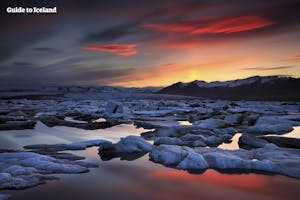
Jökulsárlón Glacier Lagoon

Seljalandsfoss
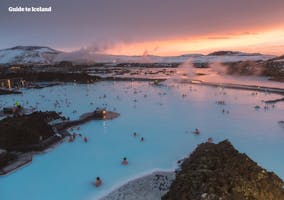
Blue Lagoon

Snæfellsnes

Best Itineraries & Complete Vacations
Book an optimized itinerary for a perfect vacation in Iceland
10-Day Self-Drive Tour of the Complete Ring Road of Iceland with Top Attractions & Snaefellsnes
Extreme 3 day motorcycle adventure tour in the icelandic highlands with langjokull & fjallabak, best 1-week summer self-drive tour of the ring road of iceland & golden circle, best 7-day northern lights self drive tour through south iceland to jokulsarlon ice cave.

Download Iceland’s biggest travel marketplace to your phone to manage your entire trip in one place
Scan this QR code with your phone camera and press the link that appears to add Iceland’s biggest travel marketplace into your pocket. Enter your phone number or email address to receive an SMS or email with the download link.
Top things to do in Iceland
Book your complete trip with the best companies only

Explore an Ice Cave

Visit a Live Volcano

Find the Northern Lights

Visit the Blue Lagoon

Go on a Road Trip

Do the Golden Circle

See the Glacier Lagoon

South Coast Tours

10 Ways To Make Your Iceland Road Trip Budget-Friendly
- Key takeaways:
- Travel with a group to split costs of transportation, gas, and accommodation.
- Shop for groceries at Bónus to save money on meals and avoid eating at expensive restaurants.
- Take advantage of Icelandair's free stopover program to see Iceland without additional flight costs.
Taking a road trip to Iceland is one of the best ways to see the country in its entirety. While travelers can stay in the heart of Reykjavík and book day trips to top attractions like the Golden Circle and or the Blue Lagoon, they won’t get a chance to see what’s in the far north and eastern coasts of the island.
But in addition to a trip around the Ring Road being the best way to see the country, it’s also the best way to visit Iceland on a budget. Find out how to cut costs on a trip to Iceland (which has a reputation for being expensive) with these hacks and tips.
Travel With A Group
Planning a trip to Iceland as a solo traveler is a great idea in terms of safety, but it also means shouldering a lot of expenses alone.
To make Iceland a budget-friendly adventure, it’s a good idea to travel with a group of friends or family members with whom travelers can split costs of collective expenses like transportation.
- How It Cuts Costs: More people to split the price of gas, vehicle rental, and accommodation.
Shop For Groceries At Bónus
Bónus is known for being Iceland’s affordable grocery store . It’s a no-frills shopping experience that results in lower prices for items than some other shops in the country.
Stocking up at Bónus in Reykjavík before departing for a drive around the ring road (and topping up in Akureyri) allows travelers to plan their meals based on their strict budget.
- How It Cuts Costs: Affordable prices for groceries and eliminates the need to eat at restaurants.
Use Icelandair’s Free Stopover Program
A budget-friendly way to see Iceland is to take advantage of Icelandair’s free stopover program . The program has been in operation for years now, but many people still don’t realize they can use it to see Iceland as a free stop on their way to mainland Europe from North America.
The program enables passengers to book a stopover of up to seven days for free when they book a flight from North America to Europe (or vice versa).
- How It Cuts Costs: No cost to fly to Iceland, it’s just a layover en route to the final destination.
Don’t Spend Too Much Time In Reykjavík
While Reykjavík is a charming city and is the world’s northernmost capital, staying there too long is difficult on a tight budget. Accommodation is expensive and dining out at restaurants begins to add up quickly.
For travelers who want to keep costs down, spend minimal time in Reykjavík and focus on Iceland’s outdoor beauty for most of the trip.
- How It Cuts Costs: Avoids spending a lot on downtown accommodation, entertainment, drinks, and restaurants.
Related: See The 10 Most Beautiful Iceland Waterfalls And Immerse Yourself In Nature's Cascading Splendor
Camp Where Possible
Camping is obviously much cheaper than booking hotel rooms each night. Fortunately, Iceland is the perfect place to camp, particularly during the summer months. It’s a very safe country without large natural predators, so travelers don’t have to worry about attracting bears or other predators to their campsites.
Pitching a tent each night also means waking up to some of the world’s best views.
- How It Cuts Costs: Cheaper than staying at a hotel or Airbnb.
While free camping is possible in some parts of Iceland, there are many restrictions in place to protect the environment and campers. To ensure travelers respect the law and nature, it’s a good idea to simply book a spot at a designated campsite.
Opt For The Free Hot Springs
If travelers are serious about saving money on a trip to Iceland, some of the most popular things to do should be cut from the itinerary in favor of free alternatives.
For example, instead of splurging on facial mud and drinks as part of the cost of going to the Blue Lagoon, travelers can enjoy free hot springs like the Grotta lighthouse footbath.
- How It Cuts Costs: Eliminates activity costs like expensive entry fees for the Sky Lagoon or Blue Lagoon .
Related: 10 Best Places To Visit In Iceland That Unveil Captivating Landscapes In A Nordic Paradise
Visit During The Off Season
It’s well known that visiting a destination in the off-season is one of the best ways to save money. Peak season means paying top dollar for accommodation and tours. During the off-season, hotels are more desperate to fill their rooms, and tour operators may have deals to attract customers.
Iceland’s off-season is from January to May when days are cold and dark. However, this is the perfect time to see the Northern Lights .
- How It Cuts Costs: Prices are more competitive to attract tourists.
Stay In Hostels
Cozy hostels can be found all throughout Iceland, from downtown Reykjavík to charming coastal villages. Staying in a hostel is a more affordable option than booking a hotel room. Look for hostels with additional amenities to save further money elsewhere. For example, toiletries or meals can be included.
- How It Cuts Costs: Lower nightly fee, especially in dorm-style rooms. Breakfast is often included.
Related: 10 Most Beautiful Ice Caves In Iceland That Transport You Into A World Of Frozen Wonder
Skip The Souvenirs
Souvenirs are becoming less important to travelers these days, especially millennials who value experiences more than physical items.
It’s also a great way to save money and stay on budget; skipping souvenirs in Iceland is especially important because Icelandic prices reflect the high shipping costs to get goods out to this remote European island.
- How It Cuts Costs: Allows travelers to reallocate the budget to other aspects of the trip.
Spend Time Outside
The true key to doing an Icelandic road trip on a budget is simply making the most of the great outdoors. The Land of Fire and Ice has breathtaking landscapes to admire, unique trails to hike, waterfalls to ogle, and free hot springs to relax in at the end of the day.
- How It Cuts Costs: Spend money on the necessities (accommodation, transportation, and food) and only participate in outdoor activities that are free.
It's entirely possible to plan an Iceland road trip on a budget, making the trip of a lifetime affordable for all.
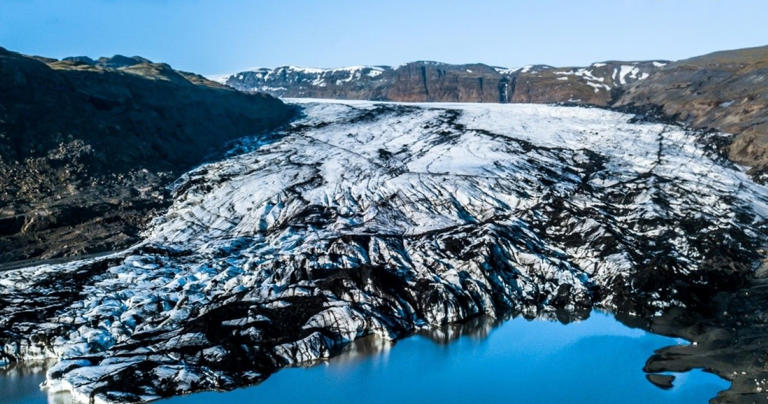
Protect Your Trip »
The 18 best places to see the northern lights.
Check the aurora borealis off your bucket list.
The Best Places for the Northern Lights

Getty Images
The northern lights, known as the aurora borealis, are a spectacular natural light show visible at certain times of the year in the Northern Hemisphere. They occur when electrically charged particles from the sun collide with gases in the Earth's atmosphere, creating vibrant streaks of blue, green, pink and violet dancing across the night sky. 2024 and 2025 are an excellent time to catch the northern lights: Solar activity will be at a peak, making for a more impressive experience, if you're in the right place.
The best places to see the aurora borealis have little light pollution, clear skies and no precipitation. The lights are only visible at northern latitudes when it's dark outside, so the months from September to April are best for seeing the aurora. There's also a Southern Hemisphere counterpart, the aurora australis; there are fewer easy spots from which to view this phenomenon, but if you're lucky, it can be equally brilliant.
For more information on the northern lights, scroll down to the FAQ section at the bottom of this page. Read on to discover the top destinations where you can see the kaleidoscopic northern and southern lights.
Fairbanks, Alaska

Fairbanks is by far one of the best places in the world to view the northern lights, as it's located directly under the auroral oval. This ring-shaped zone sits around the Earth's geomagnetic North Pole and is generally associated with the most vibrant aurora sightings. Visitors can expect to see the lights on an average of four out of five clear nights during aurora season, which lasts from late August to late April.
You can book a northern lights tour to see the aurora from the springs and tubs at Chena Hot Springs Resort. This excursion includes round-trip transportation to the resort from town, a soak in the hot springs, a visit to the Fairbanks Aurora Ice Museum and an aurora viewing tour; dinner and drinks centered around Alaska produce are an option extra with hot drinks supplied.
There's more to Fairbanks than just the northern lights: If you visit in late summer, consider family-friendly activities like a ride on the Riverboat Discovery or gold panning. For a festive holiday experience in the winter, head around 15 miles out of Fairbanks to visit the Santa Claus House in the city of North Pole. Travelers can also see ice sculptures in February and March at the impressive World Ice Art Championships or take a dog-sledding or snowmobiling tour .
Where to stay: For excellent chances of aurora viewing, book a private igloo at Borealis Basecamp, a top glamping resort located on 100 remote acres of boreal forest about 25 miles from Fairbanks. With activities like dog-sledding on top of aurora viewing, past visitors regularly describe it as a once-in-a-lifetime experience.
Tromsø, Norway

Located about 220 miles above the Arctic Circle, Tromsø is one of several top spots to view the northern lights in Norway. At the darkest point of the aurora season – which runs from September to early April – the sun doesn't rise in this northern part of the country, although there is twilight during the day. With this level of darkness, there are more opportunities to see the aurora.
Tromsø itself is a small but lively city, so there's plenty to see and do when you're not looking up at the sky, including a visit to the beautiful Arctic Cathedral. In late January to early February, the city hosts the Northern Lights Festival, a 10-day music and performing arts event featuring a variety of musical genres.
Aurora chasers can view the lights on their own while in town, but to get a better view, it's recommended to head away from the city lights. Arctic Circle Tours is one company offering guided trips, with small groups for a more personal vibe. Alternatively, adventure-seekers can embark on an exhilarating husky trekking expedition in the Arctic wilderness.
Where to stay: For accommodations with harbor views, look no further than the Scandic Ishavshotel – guests love it for its convenient central location in the city, as well as its plus-sized breakfast buffet with plenty of choices.
Luosto and Rovaniemi (Lapland), Finland

Lapland is located within the Arctic Circle in the northernmost part of Finland. The northern lights are most visible here between the end of August and April – and approximately 200 times a year – so there are many opportunities for aurora spotting. Finnish Lapland is also known as home to the Sámi people (the only recognized Indigenous group in the European Union region), some 200,000 reindeer and Santa Claus – who can be visited in the town of Rovaniemi, the region's largest city and a great base for your aurora expedition.
Consider venturing roughly 70 miles north of Rovaniemi to the resort town of Luosto, set among the picturesque and hilly landscape of Pyhä-Luosto National Park. Here, you can also spend a magical evening outdoors under star-filled skies during a reindeer-drawn sleigh ride through the snow-covered forests. Jaakkola Reindeer Farm offers a reindeer sleigh tour to spot the aurora once weekly; it includes a stop to warm up at a bonfire camp with snacks, hot beverages and local fireside stories.
Where to stay: For a bucket list experience, watch the impressive light show from a glass igloo at Santa's Hotel Aurora & Igloos in Luosto. Past visitors love the cozy atmosphere here, boosted by amenities like saunas and log fireplaces. If you're sticking to Rovaniemi, the Arctic TreeHouse Hotel is a stunning choice, with designer cabins perched among the snow-covered taiga forest.
Orkney, Scotland

This group of captivating (and mostly uninhabited) islands, located about 10 miles off Scotland's remote northern coast, is one of the best places to see the northern nights in the U.K. Fall and winter are the best seasons to witness the aurora, also known in local Shetland dialect as the "Mirrie Dancers," with fall bringing the highest proportion of clear nights. A few places to see the spectacular light show include along the coast at Birsay or the Broch of Gurness, an archaeological ruin on a sweeping and dramatic coastline.
In addition to the aurora, Orkney is home to breathtaking coastal landscapes and more sheep than you can count (try some local lamb, if you can). Travelers can also visit the Heart of Neolithic Orkney, a UNESCO World Heritage Site with several monuments dating back 5,000 years.
Where to stay: During your visit, plan to stay in the historic town of Kirkwall, the capital of the Orkney Islands: The no-fuss Ayre Hotel offers harbor views, and past visitors compliment the hearty meals in the hotel restaurant. Spot the aurora close to town at Inganess Bay and Wideford Hill.
Yellowknife, Canada

Yellowknife, the capital of Canada 's Northwest Territories, dubs itself the "Aurora Capital of the World." Thanks to its position in the middle of the auroral oval, the city puts on one of the world's most awe-inspiring light shows. The period from mid-November to the beginning of April is the recommended time to spot the aurora, but it's also possible to see the aurora during more hospitable weather from late summer to early fall as the lights are visible up to 240 days a year.
Located on the northern shore of Great Slave Lake, Yellowknife boasts winter sports such as ice fishing and cross-country skiing. If you visit in March, plan to attend the monthlong Snowkings' Winter Festival, which features events and activities like a snow-carving competition, a snow castle, live music and more.
For a unique experience, book a tour through Aurora Village to view the lights. The property will pick you up from your hotel and take you to its site, where you can stay warm in a tent while sipping hot beverages. The Aboriginal-owned Aurora Village also offers activities such as dog-sledding or snowshoeing excursions.
Where to stay: Warm up in the fireside lounge at The Explorer Hotel in Yellowknife. Previous visitors note the warm and helpful staff as a strength here.
Jukkasjärvi, Sweden

The optimal time for seeing the illuminated skies in the northern part of Sweden, known as Swedish Lapland, is between early September and late March. The small Swedish village of Jukkasjärvi sits around 125 miles above the Arctic Circle on the Torne River and is an ideal locale for aurora viewing. You'll fly to the nearby Kiruna Airport to get here. With the village's origins dating back to the 17th century, you can still find some of the original homesteads, including an old timber cottage. Today the village boasts 800 residents – and more than 1,000 dogs.
Where to stay: If you're up for a chilly overnight adventure, reserve accommodations at the world's first permanent ice hotel, the aptly named Icehotel 365. Each of its artist-designed suites is sculpted from ice with a unique theme and maintains temperatures around minus 5 degrees Celsius (about 23 degrees Fahrenheit). The rooms also feature beds with reindeer hides and thermal sleeping bags so you can bundle up during the night. While you're at the property, take advantage of the guided "Northern Lights Safari on Snowmobile" or embark on the "Moose Safari on Horseback" atop an Icelandic horse.
Reykjavik, Iceland

October through March is the best time to chase the aurora borealis in Iceland . There are numerous natural parks and attractions throughout the country where you can view the show during the long and dark winter, but the capital city of Reykjavik also offers many options for accommodations, restaurants, tours and other activities for your visit. For optimum aurora viewing in the city away from the light pollution, head to Öskjuhlið. This wooded and hilly area in Reykjavik sits at 200 feet above sea level and has walkways and paths where you can see the nighttime show.
Atop this hill sits Perlan, which houses the only planetarium in the country and a museum featuring exhibits about Iceland. Perlan is also home to the world's first indoor ice cave and glacier exploratorium. During your visit, don't miss the panoramic views of the city from the building's fourth-floor observation deck. From this vantage point, you'll be able to see the Snæfellsjökull glacier; Keilir, a volcanic mountain; and Esja, the mountain of Reykjavik.
Where to stay: While in Reykjavik, splurge on an overnight tour with Buubble Tours. This experience includes breathtaking sightseeing spots and a night spent under the magical northern skies in a transparent bubble at the 5 Million Star Hotel. For longer stays, consider the eco-friendly Eyja Guldsmeden Hotel, with sweeping views of the city – guests love it for its cozy yet chic Scandinavian design.
Southern Iceland

While Reykjavik is a great aurora-viewing spot if you like having amenities close by, consider getting out into Iceland's stunning, otherworldly countryside for a unique backdrop for the northern lights. One unique place to see them is the black sand beach at Reynisfjara (but watch out for the dangerous waves here). Alternatively, head to Jökulsárlón, a glacial lagoon and seal habitat, where the aurora's reflections in the icy water are truly beautiful.
There's no shortage of tours that will stop by these locations and more for possible aurora sightings. Consider a 10- or 13-day tour around the country with Fun Travel, or a four-day option from Arctic Adventures. If you want to do things at your own place, it's also possible to self-drive – just know that road conditions can be icy, particularly in the depths of winter (although Icelandic roads are generally well-maintained).
Where to stay: Hotel Rangá is a formidable option for aurora-spotting. It offers a variety of special amenities, such as aurora wake-up calls, a lookout deck and snowsuits to keep you warm if you're outside viewing the lights. Past visitors praise Rangá for being a comfortable yet luxurious place to relax, be it in the outdoor hot tubs or the cozy and sociable bar.
Kangerlussuaq, Greenland

Greenland may not be the most accessible place to travel for viewing the northern lights, with limited flight options (mostly via Iceland), but those who make it here will be thrilled they did. The tundra of Kalaallit Nunaat – the Greenlandic name for the country – is one of the best places on the globe to see the aurora from September to early April.
For the more adventurous aurora seekers, head to the top of the Greenland Ice Cap for spectacular views of the lights. This impressive glacier covers 80% of the country and is accessible via the tiny town of Kangerlussuaq. Located on a fjord right along the Arctic Circle, the town, often described as a gateway to Greenland, was a former U.S. Air Force base and is now home to Greenland's main airport. The town is known for having clear skies on some 300 nights per year, so chances of a sighting are particularly good here.
Tour company Guide to Greenland offers various tours, from two-hour aurora-viewing trips to a tough but rewarding multi-night dog-sledding expedition across the ice. For a less strenuous experience, companies like Nordic Saga Tours offer cruises through the Arctic landscapes around Kangerlussuaq.
Viking cruise along Norway's coast

Courtesy of Viking
Embrace the winter and set sail for the Arctic Circle to experience the aurora in northern Norway. The 13-day "In Search of the Northern Lights" cruise itinerary with Viking departs from London for the North Sea with stops in ports of call that are top aurora-viewing locales, including Tromsø, Alta and Narvik, plus a stop in Amsterdam en route. The cruise ends in Bergen, Norway.
While on land, take in the natural beauty of the snow-blanketed landscapes and book bucket list excursions like a night spent in an igloo or a reindeer sledding adventure. You can also chase the lights into the wilderness by snowmobile, take a dog sled ride under the stars or view them from a Sámi tent atop the mountain Pæska in Alta. This Viking Ocean Cruises itinerary is offered with departure dates from mid-January to mid-March.
Headlands International Dark Sky Park, Michigan

Regarded as one of the top spots in the U.S. to see the aurora outside Alaska, Headlands International Dark Sky Park sits at the top of Michigan 's lower peninsula, less than 5 miles from Mackinaw City. While the northern lights are less common here due to the relatively southern location, the best time to catch a glimpse of this phenomenon is typically during the spring and fall – and appearances can usually be predicted a couple of days in advance. The park even maintains an online Clear Sky Chart so you can check the weather forecast before you go.
There are also other stargazing opportunities throughout the year at Headlands. During the summer months the Milky Way is visible across the sky, and late summer evenings entertain visitors with meteor showers.
Where to stay: If you're visiting between late April and the end of October, splurge on a stay at Mission Point Resort on Mackinac Island, where the aurora should also be visible. Guests describe this iconic property situated along the shoreline of Lake Huron as positively charming, thanks to its historic nature and manicured grounds. The resort also offers a host of outdoor activities from bike rentals to swimming.
Tips on Trips and Expert Picks Newsletter
Travel tips, vacation ideas and more to make your next vacation stellar.
Sign up to receive the latest updates from U.S News & World Report and our trusted partners and sponsors. By clicking submit, you are agreeing to our Terms and Conditions & Privacy Policy .
Voyageurs National Park, Minnesota

Martha Shuff | Courtesy of Voyageurs National Park
Located on the international border between Minnesota and Ontario, Voyageurs National Park is an approximately 218,000-acre labyrinth of boreal forests, lakes and streams. Voyageurs is Minnesota's only national park; it's also unique in that the park's interior is accessible only by boat, unless you visit by snowmobile in winter. As a certified International Dark Sky Park , Voyageurs provides opportunities to view the Milky Way on clear evenings, especially in the summer. Year-round aurora viewing is also possible on evenings with clear dark skies, but chances are better during the winter, when it's dark for longer.
For a guided stargazing tour – including the Milky Way, the constellations and (if you're lucky) the northern lights – book with Voyageurs Outfitters. If you're on your own, park officials note that almost any campsite is a good spot for northern lights viewing and stargazing. You can also check out the boat launch areas around Ash River, Kabetogama Lake and the Rainy Lake Visitor Center for top-notch views.
Where to stay: Those who prefer to sleep in a warm, cozy bed instead of camping under the stars can make reservations at the Cantilever Distillery + Hotel, a boutique Trademark Collection by Wyndham property in the nearby town of Ranier, Minnesota. Visitors report that there's a lot to like here, from the industrial-chic rooms to friendly staff to top-notch cocktails in the active distillery on the premises.
Abisko National Park, Sweden

Given its Arctic location, Sweden is one of the prime spots for aurora viewing in the Northern Hemisphere, with Swedish Lapland at the top of the list. The fall and winter months (from September to March) offer the best opportunities to witness the spectacle, as there is more darkness than light during the days.
If you're up for the Arctic adventure, December is an ideal month to visit Abisko National Park, which some regard as one of the best places on Earth to see the lights dance across the sky. The park's mountainous terrain and clear dark skies offer dramatic front-row seats for viewing the northern lights. The Aurora Sky Station is one of the best vantage points to see the aurora in the park. Join one of the expert presentations to learn about the science behind this fascinating phenomenon.
If you'd prefer to chase the lights with a curated tour, professional photographers and aurora-chasing guides at Visit Abisko lead three- to four-hour tours throughout the fall and winter. If you can, try to join the tours in fall, as this time of year offers a unique opportunity to view the lights both in the sky and reflected in the lakes and rivers, which you won't see in the winter months.
Where to stay: For cozy Nordic vibes, stay at Abisko Mountain Lodge, which also offers activities like ice climbing and snowmobile tours in winter. Guests love the excellent restaurant here, which offers Swedish specialties ranging from salmon to moose.
Nellim, Finland

Courtesy of Wilderness Hotels
Located a stone's throw from the Russian border in Finnish Lapland, this remote Arctic destination is a top-rated locale to view the northern lights due to the lack of light pollution. You'll be seriously out of the way of any built-up areas, as there's not even a paved road into Nellim. The best time to visit is between December and early April. This village is a great place to hunker down in a lodge and relax while enjoying a slice of life in the Finnish wilderness.
Where to stay: The Nellim Wilderness Hotel offers a perfect base with year-round activities, including aurora-chasing tours by car, snowmobile or on snowshoes. You can even take a sleigh ride through the snow to a campsite on Lake Inari to spot the aurora in pristine nature.
Beyond standard rooms, the Wilderness Hotel also offers glass-roofed cabins, as well as classic log cabins and bubble-shaped accommodations for two where guests can watch the dancing lights through the glass roof above your warm, cozy bed. When you're not chasing the lights, enjoy other Arctic activities like a husky safari, ice fishing, snowmobiling or a day in the snow meeting the local reindeer.
Saariselkä and Kakslauttanen, Finland

These two towns are around 150 miles above the Arctic Circle, with a prime location under the auroral oval, allowing as many as 200 opportunities per year to see the northern lights (weather permitting, of course). This area in Finnish Lapland is known for its stunning scenery, Sámi culture, cross-country and downhill skiing, and Urho Kekkonen National Park – one of Finland's largest.
Ski enthusiasts can roll two trips into one by hitting the slopes by day in Saariselkä and aurora spotting by night at Finland's northernmost ski resort. March into early April is the best time to view the aurora, as the Finnish Meteorological Institute notes that the weather is usually clearer at this time of year. But it's possible to see the northern lights at any time during the season from late August to early or mid-April.
Where to stay: Seven miles south of Saariselkä sits the village of Kakslauttanen, where you can book two- or four-person Glass Igloos at the Kakslauttanen Arctic Resort. The new Kelo-Glass Igloos, which sleep up to six, mix the comforts of a log chalet with the visibility of the glass roof; enjoy a private sauna, a fireplace and more. There's also an impressive selection of year-round tours and activities at this resort, including northern lights excursions on snowmobiles or by horse-drawn carriage.
Stewart Island, New Zealand

Courtesy of RealNZ
Although they may be isolated, some far-south destinations offer the chance to see the aurora australis – or southern lights. While you might be able to see them year-round in some locations (just as with the northern lights), certain months are better for aurora viewing in the Southern Hemisphere. Stewart Island is regarded as one of the top spots to see the brilliant display in New Zealand , with 85% of the island encompassed by Rakiura National Park, so there are few people and virtually no light pollution. You can reach Stewart Island by flying in from Invercargill or taking a ferry from Bluff.
New Zealand's winter months – June to August – are the best time to see the southern lights; spring and fall are also not bad times to spot them. The brighter summer months, between December and February, make it more difficult to spot the aurora, but there's still a chance you'll catch a glimpse between midnight and 4 a.m.
Where to stay: Consider reserving a room with at Stewart Island Lodge, an intimate bed-and-breakfast. This beautiful property is just minutes by foot from the village of Oban, and the property will pick you up at the ferry terminal for your stay. Past visitors rave about the spectacular views of Halfmoon Bay and the Foveaux Strait from both the rooms and lodge terrace.

Tasmania sits approximately 150 miles south of mainland Australia. This mountainous island is one of relatively few places on the planet where it's theoretically possible to see the aurora 365 days a year due to its latitude, which allows for full darkness even on summer nights. The capital city of Hobart is the easiest point of entry: It's home to Tasmania's largest airport and serves as a convenient base. The city's burgeoning food and cultural scenes will also give you plenty to see and do.
From here you'll be able to reach several great viewing locations with unobstructed and open views of the sea along the southern and southeast coastlines, like Goat Bluff and Tinderbox Bay. When you're not staring at the night sky, splurge on a once-in-a-lifetime helicopter flight with Tasmanian Air Tours. Depending on your whims, your private pilot can whisk you away to soar over the sea cliffs; stop at a local winery to sample local vintages; or head south to the UNESCO World Heritage Site of Port Arthur , Tasmania 's historic and most notorious prison.
Where to stay: Reserve accommodations at The Tasman, a Luxury Collection Hotel, Hobart. The historic luxury property is situated along the lively waterfront area with harbor views. Past guests admired the historic building housing the hotel and loved the heritage rooms featuring gas fireplaces for those cold Tasmanian nights.
Expedition cruise to Antarctica

If you're one of the lucky few people on the planet to travel to the southernmost continent on Earth, it may be pricey, but you'll have an adventure of a lifetime in Antarctica, especially if the aurora illuminates the sky. The southern lights are most visible in the winter months (between March and October), but due to weather conditions, only researchers brave the Antarctic winter – and they mostly stay indoors.
However, all hope is not lost if you seek to view the aurora australis in Antarctica. Late-season expedition cruises to this continent offered in March also bring the opportunity to view the southern lights and enjoy the end of Antarctica's fleeting summer. As the days shorten in length, you may encounter light snow across the extreme landscape and ice starting to form on the water's surface.
When it comes to wildlife viewing, humpback whale sightings are abundant, and you'll still see penguin colonies – including king and gentoo penguins. You can also keep your eyes peeled for elephant seals, leopard seals, wandering albatross and other species of birds. When night falls on clear evenings, look for the light show in the southern sky. Companies that offer March voyages include Swoop Antarctica, Atlas Ocean Voyages, Silversea Cruises , Aurora Expeditions and Hurtigruten Expeditions.
Frequently Asked Questions
There's no one location that's widely accepted as the best place to see the northern lights. However, the strongest light displays are within what's called the "auroral oval": a rough circle around the Earth's magnetic northern pole that tends to occur around 60 to 70 degrees of latitude. The oval's exact size expands and contracts (some more southerly destinations can fall under it when the aurora is particularly strong), but there are certain locations that generally fall within the oval most of the time.
These places include:
- Central and northern Alaska
- Large areas of Yukon, the Northwest Territories and northern Quebec in Canada
- Southern Greenland
- Far northern Norway, Sweden and Finland
Within these areas, it could be argued that Iceland is the best place to see the aurora as it experiences much milder temperatures than some other areas within the oval. But this is subjective, and some travelers may prefer a location like Yellowknife in Canada for a full-on, very cold Arctic experience.
The northern lights are only visible when it's dark out. Since many of the best places to see them are so far north that they experience near-constant daylight in the summer, you'll generally want to schedule a trip between late August and early April. However, within this time period, there's some debate about the best time to catch the lights. For example, the aurora tends to be more active around the September and March equinoxes due to stronger solar winds – but on the other hand, your chances of seeing them may be higher in the depths of winter, since there's longer nights and therefore a longer window in which they might appear.
In more southern locations like Minnesota, it may be possible to see the light show in the summer months, but it's still advisable to go at a time when the nights are longer. It can also be worth trying to schedule your northern lights trip when there's a new moon: While the aurora can shine through moonlight, it may be harder to see if there's a full moon.
Of course, cloudy weather can block the aurora even if you go at the right time of year. So, it may be wise to research the local weather patterns at your chosen destination to find out if there's a month where you can expect clearer skies. In many cases, though, there's a little luck involved.
These two countries can offer excellent views of the northern lights, since both are directly under the typical auroral oval. Yet there are some differences to be aware of.
In Norway, you'll need to head to the north of the country to catch the aurora: While they have been sighted in Oslo , the capital and largest city, it's too far south to be a reliable vantage point. Cities like Tromsø are popular spots, but direct flights there are only possible from some European cities, so North Americans will have to take connecting flights. On the other hand, Iceland is generally easier to reach, with direct flights to its capital, Reykjavik, from a large number of U.S. destinations (particularly from the East Coast) with no further connection required.
Since clear skies are key for seeing the northern lights, weather is another factor to consider. In November, December and March, Reykjavik has statistically slightly more frequent clear skies, while in January and February, Tromsø is a little better, but the difference isn't big: Both places have clear skies only around 25 to 30% of the time in these months. Reykjavik has slightly warmer weather, though, so between that and the ease of access, it has a slight edge over Norway for seeing the northern lights.
Alaska and Iceland are known for stellar aurora light shows, so deciding between them may depend on which destination you find more convenient and more to your tastes. In Alaska , the city of Fairbanks is considered a great spot to catch the northern lights. (They can still be seen elsewhere in the state – for example, in Anchorage, although they're not so common in more southern locations like Juneau). The advantage of Fairbanks is that you won't need a passport , yet there aren't many direct flights from the lower 48 states. Despite being an international destination, Iceland may be more accessible (particularly from the eastern U.S.), thanks to fairly regular flights to Reykjavik from numerous American cities.
Fairbanks does offer statistically better weather for aurora viewing: It has clear skies more often than Reykjavik, particularly in March when the Alaska city experiences them around 45% of the time (compared to about 25% for Reykjavik). But you'll have to be able to tolerate the cold. While temperatures in Reykjavik hover around freezing in midwinter, Fairbanks is a veritable deep freeze, with average highs around 5 degrees Fahrenheit down to lows colder than minus 5 in December.
Why Trust U.S. News Travel
Timothy Forster , as a Canadian who has traveled from coast to coast in that sprawling country, knows all about travel in the cold northern reaches of the world. Forster used his extensive traveling background along with research expertise to curate this article.
You might also be interested in:
- The Top Waterfalls in Iceland
- The World's Top Treehouse Hotels
- The Most Beautiful Beaches in the World
- The Best Travel Insurance Companies
Most Beautiful Landscapes in the World

Tags: Travel , Vacation Ideas
World's Best Places To Visit
- # 1 South Island, New Zealand
- # 4 Bora Bora
If you make a purchase from our site, we may earn a commission. This does not affect the quality or independence of our editorial content.
You May Also Like
The best florence tours.
John Rodwan April 25, 2024

How Much Does a Cruise Cost?
Gwen Pratesi April 24, 2024

The Best Whale Watching in Cape Cod
Lyn Mettler April 24, 2024

Best Whale Watching Tours in Maine
Marisa Méndez April 23, 2024

The Best Wineries in Napa Valley
April 23, 2024

The Best East Coast Beaches
April 19, 2024

The Best Carry-on Luggage
Erin Evans , Rachael Hood , Catriona Kendall , Amanda Norcross and Leilani Osmundson April 17, 2024

The Best Luggage Brands
Rachael Hood April 17, 2024

The Best Hard-sided Luggage Picks

The Best Yellowstone National Park Tours
John Rodwan April 17, 2024

County Road 26 to open Monday for local, critical trips
Limited travel for commuters using the lake city cutoff opens after state and county collaboration as bridge closure continues.
Montrose and Gunnison Counties — This weekend, CDOT and Gunnison County are working together to accelerate improvements to County Road 26 (Lake City Cutoff) so it can open Monday for local commuter travel between Montrose and Gunnison. At the same time, engineers continue to conduct safety inspections of the US Highway 50 bridge crossing the Blue Mesa Reservoir at Dillon Pinnacles. This bridge, located west of Gunnison at Mile Point 136.3, closed Thursday in the interest of public safety after an inspection revealed a crack in one of the girders. The technical structure name for the bridge is K-07-B.
Recognizing the US 50 closure creates a significant detour for commuters traveling between Montrose and Gunnison, CDOT and Gunnison County officials this weekend prioritized getting a shorter access route in place for local travel between the two communities. That collaboration will continue as officials work to further fortify the road with gravel and manage traffic to a level that the road can safely carry.
“We are starting slow in order to increase the chances we can go faster later. The impact on western Colorado cannot be understated and we are exhausting all opportunities and partnerships to mitigate the impacts of the bridge closure,” said Martin Schmidt, Assistant Gunnison County Manager for Public Works.
On Monday, April 22, pilot cars will lead passenger vehicles through the access route two times a day in each direction. Because CR 26 is a high-mountain, unpaved road that is not intended to accommodate the traffic volumes of US 50, travel times will be limited and commercial vehicles exceeding a 16,001 gross vehicle weight rating are prohibited. The schedule for piloted travel is:
- 6 to 6:30 a.m. and 6 to 6:30 p.m. for westbound travel
- 7 to 7:30 a.m. and 7 to 7:30 p.m. for eastbound travel
The queue for westbound pilot car operations will start near the intersection of CO 149 and CR 26 and the queue for eastbound travel will start near the intersection of US 50 and CR 26. The travel time on the access route is expected to be 30 minutes or more.
County Road 26 will only be open for local, essential travel during these timeframes. The road will remain closed at all other times for the ongoing restoration work needed to ensure the road remains safe for travel.
A hotline and email continue to be in place to assist customers with questions about the closure. Anyone with questions can reach out via 970-648-4423 or [email protected] . Calls will be closely monitored and will receive a prompt reply. Information is also available on the project website at bit.ly/us50bridge . Travelers should refer to COtrip.org or the smartphone COtrip Planner app to plan an alternate route.
“CDOT appreciates Gunnison county’s dedication and hard work as we cooperate to offer more options to help the western slope manage this safety closure. CDOT will continue to support the county as we focus on the opening of County Road 26 to serve the critical needs of residents,” said CDOT Executive Director Shoshana Lew. “County Road 26 is an important local route that is up to five hours more efficient than detouring via state highways. However, this road currently has a natural roadbed and can only accommodate limited traffic - so it is important that we help Gunnison County focus this capacity on the needs of local communities most impacted by the closure.”
There are two recommended detours for through travel via Interstate 70 to the north or US 160 to the south and these detours add six to eight hours of travel time. CDOT is coordinating with emergency service providers to ensure emergency response is unaffected.
Travel Impacts
- US 50 is closed between Montrose and Gunnison
- Recommended alternate routes are I-70 to the north or US 160 to the south
- A limited, local detour is in place for travel at specific times
Project Contact Information
For additional information about this project, contact the project team.
- Webpage: bit.ly/us50bridge
- Information hotline: 970-648-4423
- Email: [email protected]
- Fact Sheet: County 26 Local Access
- Hoja informativa del proyecto: Ruta de acceso local en la County Road 26
Download the COtrip App!
The new free COtrip Planner mobile app was designed to meet the growing trend of information on mobile and tablet devices for the traveling public. The COtrip Planner app provides statewide, real-time traffic information, and works on mobile devices that operate on the iOS and Android platforms. Visit the Google Play Store (Android devices) or the Apple Store (iOS devices) to download!
Want to see the next total solar eclipse in 2026? An expert recommends booking travel now.
- 2026 will be Europe's first total solar eclipse in 27 years.
- Travelers worldwide will likely head to Spain, Iceland, and Greenland for the event.
- A hotel expert encouraged travelers to start planning and booking their trips now.

It'll be two decades before the next total solar eclipse hits the US .
Another option: hop on a plane to Europe and turn the 2026 total solar eclipse into a viewing vacation.
Eclipse cartographer Michael Zeiler at GreatAmericanEclipse.com told Space.com that up to 3.7 million people likely traveled for the solar eclipse on Monday.
HotelPlanner's chief communication officer, Philip Ballard, told Business Insider that the eclipse was a major revenue generator for many cities. For places like Austin, Texas, and Rochester, New York, it could have created $1 billion in revenue, Vox reported.
"I would say the total solar eclipse has become a global phenomenon," Ballard said.
Ballard added that the next solar eclipse , which will pass through Iceland, Greenland, and Spain on August 12, 2026, could result in similar tourism and revenue influxes.
And if travelers are considering a trip to Europe for the solar eclipse, Ballard recommends planning your trip now.
Determine your eclipse viewing destination
According to Space.com , 2026 will be Europe's first total solar eclipse in 27 years. Its path will go through Greenland, parts of western Iceland, and northern Spain.
Choosing where to watch the eclipse will be a tough and important decision for travelers.
Iceland and Greenland have some positives. These regions will experience longer totality times, so viewers can watch the eclipse longer. Plus, the sun will be higher in the sky, so finding a spot to watch the eclipse will be less challenging, Space.com reported.
The downside is that these regions are more likely to be cloudy, according to the outlet.
Related stories
While parts of Spain are likely to offer clearer skies, the eclipse's timing will be shorter and closer to the horizon, which means travelers will need to plan and track down a viewing location with unobstructed views of the western horizon, Space.com reported.
Regardless of the destination, according to the outlet, one bonus is that the strongest meteor shower in the Northern Hemisphere will happen the following night, so travelers can pack two events into one trip.
Book flights and hotels far in advance
Ballard encouraged people to book their hotels in their destination of choice as far in advance as possible.
"You should start looking now and booking hotels now because those cities in the path are already going to be at peak season," Ballard said.
Ballard said it's similar to when a Super Bowl city is determined or a Taylor Swift tour date is announced — you immediately see spikes in bookings. He predicts hotel occupancy rates will hit near-record highs, and room prices may double around the solar eclipse date.
Ballard's general rule of thumb is to book international travel at least three months in advance, but since this is such an anticipated event, booking earlier is smart. His advice is to start discussing plans with friends and family. If you decide on a destination, book a refundable room to keep your options open if plans change.
Regarding purchasing a plane ticket, a study from Expedia states that international travel's sweet spot is at least six months in advance.
According to Expedia, travelers who book six months in advance save an average of 10% more than travelers booking within two months or less.
Skip the hassle of planning altogether and book a solar eclipse tour
Another option is to let a tour operator do the work for you. A handful of tour companies have seen the increased interest in the solar eclipse and launched tours designed around the event.
These tours will have predetermined locations to view the eclipse, hotel blocks reserved, and itineraries highlighting both the region and the eclipse.
However, these can sell out quickly. For example, Space and Telescope created an 11-day tour of Spain around viewing the 2026 solar eclipse. The tour has already sold out as of Wednesday, and the waitlist is full.
Other operators, such as Wilderness Travel and Eclipse Traveler, have similar itineraries for the total eclipse in 2026.
Watch: A small Australian town was treated to a rare hybrid solar eclipse
- Main content
- Election 2024
- Entertainment
- Newsletters
- Photography
- Personal Finance
- AP Investigations
- AP Buyline Personal Finance
- AP Buyline Shopping
- Press Releases
- Israel-Hamas War
- Russia-Ukraine War
- Global elections
- Asia Pacific
- Latin America
- Middle East
- Election Results
- Delegate Tracker
- AP & Elections
- Auto Racing
- 2024 Paris Olympic Games
- Movie reviews
- Book reviews
- Personal finance
- Financial Markets
- Business Highlights
- Financial wellness
- Artificial Intelligence
- Social Media
When it comes to government planes and political trips, who pays for a president’s campaign travel?
FILE - President Joe Biden boards Air Force One, March 11, 2024, at Andrews Air Force Base, Md. The White House and the Democratic National Committee are splitting the cost of Biden’s travel while he runs for a second term. It’s part of a longstanding arrangement that prevents taxpayers from being stuck with the full bill for political trips. (AP Photo/Luis M. Alvarez, File)
FILE - President Joe Biden, center right, and first lady Jill Biden, center left, walk off Air Force One, March 29, 2024, at Andrews Air Force Base, Md. The White House and the Democratic National Committee are splitting the cost of Biden’s travel while he runs for a second term. It’s part of a longstanding arrangement that prevents taxpayers from being stuck with the full bill for political trips. (AP Photo/Alex Brandon, File)
FILE - President Joe Biden boards Air Force One at Dallas Fort Worth International Airport, March 21, 2024, in Dallas, en route to Houston. The White House and the Democratic National Committee are splitting the cost of Biden’s travel while he runs for a second term. It’s part of a longstanding arrangement that prevents taxpayers from being stuck with the full bill for political trips. (AP Photo/Jacquelyn Martin, File)
FILE - President Joe Biden boards Air Force One, March 13, 2024, at Andrews Air Force Base, Md. en route to Milwaukee. The White House and the Democratic National Committee are splitting the cost of Biden’s travel while he runs for a second term. It’s part of a longstanding arrangement that prevents taxpayers from being stuck with the full bill for political trips. (AP Photo/Jacquelyn Martin, File)
FILE - President Joe Biden boards Air Force One at Andrews Air Force Base, Md., March 11, 2024, to travel to Manchester, N.H. The White House and the Democratic National Committee are splitting the cost of Biden’s travel while he runs for a second term. It’s part of a longstanding arrangement that prevents taxpayers from being stuck with the full bill for political trips. (AP Photo/Andrew Harnik, File)
FILE - President Joe Biden boards Air Force One at Andrews Air Force Base, Md., April 12, 2024, enroute to New Castle, Del. The White House and the Democratic National Committee are splitting the cost of Biden’s travel while he runs for a second term. It’s part of a longstanding arrangement that prevents taxpayers from being stuck with the full bill for political trips. (AP Photo/Pablo Martinez Monsivais, File)
FILE - President Joe Biden, second from left, boards Air Force One, March 28, 2024, at Andrews Air Force Base, Md. Biden is headed to New York for a fundraiser. The White House and the Democratic National Committee are splitting the cost of Biden’s travel while he runs for a second term. It’s part of a longstanding arrangement that prevents taxpayers from being stuck with the full bill for political trips. (AP Photo/Alex Brandon, File)
- Copy Link copied

WASHINGTON (AP) — It’s no simple matter to move the commander in chief from point A to B, and it’s even more complicated when the president is seeking a second term.
President Joe Biden recently spent three days in Pennsylvania , a pivotal state in the 2024 campaign, and he plans to be in Virginia and Florida this coming week. The Democratic incumbent is seeking an edge over Republican Donald Trump as he ramps up his travels around the country.
Here’s a look at how much it costs and who pays the bill during the campaign season.
HOW MUCH DOES IT COST?
It’s not cheap to fly the president’s fleet.
The White House uses Sikorsky helicopters known as Marine One when the president is aboard, as well as custom Boeing 747s that are immediately recognizable as the iconic humpback Air Force One. (Sometimes the president uses a more modest modified 757 if his destination is nearby or if a runway isn’t long enough to accommodate the bigger plane.)
Marine One costs between $16,700 and almost $20,000 per hour to operate, according to Pentagon data for the 2022 budget year. Air Force One is even more expensive: roughly $200,000 per hour.
But those figures only scratch the surface of the real cost. There also are military cargo planes that travel ahead of the president to make sure his armored limousines are in place, not to mention the enormous security apparatus that follows the president everywhere.
New aircraft are in the works because the current versions are decades old. Sikorsky is producing 23 updated helicopters to serve as Marine One. Boeing is building two new Air Force One planes , and they are scheduled to be finished by 2028. According to the Pentagon, the planes will come with all enhancements, including “a mission communication system,” a “self-defense system” and even “autonomous baggage loading.”
WHO PAYS FOR THE TRAVEL?
When the president flies for political purposes, the campaign is supposed to pay the bill. But during an election year, the line between governing and campaigning can be fuzzy.
For example, Biden held an official event Wednesday in Pittsburgh, where he announced his proposal for higher tariffs on steel imported from China. The event, however, was a not-so-subtle opportunity for the president to rub shoulders with union members who are critical to his reelection, and he jabbed at Trump in his remarks. (At one point Biden joked that the former president was “busy right now,” a reference to the hush money trial that recently got underway in New York.)
It’s up to the White House counsel’s office to figure out what percentage of the president’s travels are campaign related. That determines how much the federal government should be reimbursed by the Biden campaign. Sometimes the calculations aren’t straightforward, such as when the White House adds an official event to an otherwise political trip.
Norm Eisen, a White House ethics lawyer under President Barack Obama, said both Republicans and Democrats have usually hewed closely to regulations.
“We had a set of rules on how to do the allocations,” he said. “They’re intricate, and we stuck to them.”
No matter what, taxpayers end up on the hook for most of the cost. Campaigns do not pay for all the Secret Service agents and the rest of the security apparatus. In fact, they usually only cover the cost of Air Force One passengers who are flying for explicitly political purposes — sort of like buying a ticket on a particularly exclusive private jet.
President Joe Biden, second from left, boards Air Force One, March 28, 2024, at Andrews Air Force Base, Md. (AP Photo/Alex Brandon, File)
HOW MUCH HAS BIDEN PAID?
Biden’s campaign and his joint fundraising committee have been stockpiling travel cash in an escrow account maintained by the Democratic National Committee. From January 2023 until the end of last month, they deposited nearly $6.5 million.
Some of that money goes to general campaign logistics, such as staff expenses and advance work. The account is also used to reimburse the federal government for official aircraft used to transport the president, the first lady, the vice president and the second gentleman when they travel for the reelection effort.
So far, not much money has found its way back to the U.S. Treasury. As of the latest data available, just $300,000 has been provided.
It’s safe to assume that Biden’s campaign will end up forking over much more than that once the campaign is over. Trump’s team reimbursed the federal government nearly $4.7 million for travel expenses during the 2020 race.
But Biden probably won’t have trouble covering his bills. His campaign and the DNC had more than $192 million in cash on hand at the end of March.
AP White House Correspondent Zeke Miller contributed to this report.

- Share full article
Advertisement
Supported by
Automatic Refunds and No More Hidden Fees: D.O.T. Sets New Rules for Airlines
The Transportation Department issued new requirements on refunds when flights are canceled or delayed and on revealing “junk” fees before booking. Here’s what passengers can expect.

By Christine Chung
The Transportation Department on Wednesday announced new rules taking aim at two of the most difficult and annoying issues in air travel: obtaining refunds and encountering surprise fees late in the booking process.
“Passengers deserve to know upfront what costs they are facing and should get their money back when an airline owes them — without having to ask,” said U.S. Transportation Secretary Pete Buttigieg in a statement, adding that the changes would not only save passengers “time and money,” but also prevent headaches.
The department’s new rules, Mr. Buttigieg said, will hold airlines to clear and consistent standards when they cancel, delay or substantially change flights, and require automatic refunds to be issued within weeks. They will also require them to reveal all fees before a ticket is purchased.
Airlines for America , a trade group representing the country’s largest air carriers, said in a statement that its airlines “abide by and frequently exceed” D.O.T. consumer protection regulations.
Passenger advocates welcomed the new steps.
Tomasz Pawliszyn, the chief executive of AirHelp, a Berlin-based company that assists passengers with airline claims, called it a “massive step forward and huge improvement in consumer rights and protection” that brings the United States closer to global standards in passenger rights.
Here’s what we know about the D.O.T.’s new rules, which will begin to go into effect in October.
There’s now one definition for a “significant” delay.
Until now, airlines have been allowed to set their own definition for a “significant” delay and compensation has varied by carrier . Now, according to the D.O.T., there will be one standard: when departure or arrival is delayed by three hours for domestic flights and six hours for international flights.
Passengers will get prompt refunds for cancellations or significant changes for flights and delayed bags, for any reason.
When things go wrong, getting compensation from an airline has often required establishing a cumbersome paper trail or spending untold hours on the phone. Under the new rules, refunds will be automatic, without passengers having to request them. Refunds will be made in full, excepting the value of any transportation already used. Airlines and ticket agents must provide refunds in the original form of payment, whether by cash, credit card or airline miles. Refunds are due within seven days for credit card purchases and within 20 days for other payments.
Passengers with other flight disruptions, such as being downgraded to a lower service class, are also entitled to refunds.
The list of significant changes for which passengers can get their money back also includes: departure or arrival from an airport different from the one booked; connections at different airports or flights on planes that are less accessible to a person with a disability; an increase in the number of scheduled connections. Also, passengers who pay for services like Wi-Fi or seat selection that are then unavailable will be refunded any fees.
Airlines must give travel vouchers or credits to ticketed passengers unable to fly because of government restrictions or a doctor’s orders.
The vouchers or credits will be transferable and can be used for at least five years after the date they were issued.
Fees for checked baggage and modifying a reservation must be disclosed upfront.
Airlines and ticket agents are now required to display any extra fees for things like checking bags or seat selection clearly and individually before a ticket purchase. They will also need to outline the airline’s policies on baggage, cancellations and changing flights before a customer purchases a ticket.
The rules, which apply to all flights on domestic airlines and flights to and from the United States operated by foreign airlines, have varying start dates.
For example, automatic refunds must be instituted by the airlines within six months. But carriers have a year before they’re required to issue travel vouchers and credits for passengers advised by a medical professional not to fly.
Follow New York Times Travel on Instagram and sign up for our weekly Travel Dispatch newsletter to get expert tips on traveling smarter and inspiration for your next vacation. Dreaming up a future getaway or just armchair traveling? Check out our 52 Places to Go in 2024 .
Christine Chung is a Times reporter covering airlines and consumer travel. More about Christine Chung
Open Up Your World
Considering a trip, or just some armchair traveling here are some ideas..
52 Places: Why do we travel? For food, culture, adventure, natural beauty? Our 2024 list has all those elements, and more .
Mumbai: Spend 36 hours in this fast-changing Indian city by exploring ancient caves, catching a concert in a former textile mill and feasting on mangoes.
Kyoto: The Japanese city’s dry gardens offer spots for quiet contemplation in an increasingly overtouristed destination.
Iceland: The country markets itself as a destination to see the northern lights. But they can be elusive, as one writer recently found .
Texas: Canoeing the Rio Grande near Big Bend National Park can be magical. But as the river dries, it’s getting harder to find where a boat will actually float .

IMAGES
COMMENTS
Iceland Holidays. Explore unbelievable landscapes on one of our 3 or 4-night Iceland Holidays. Truly unforgettable, the Land of Fire and Ice is home to some of the most enchanting natural wonders. Join us on a guided group holiday to make the most of your time here. Rated Excellent 4.7 out of 5.
Enroll in the Smart Traveler Enrollment Program (STEP) to receive security messages and make it easier to locate you in an emergency. Call us in Washington, D.C. at 1-888-407-4747 (toll-free in the United States and Canada) or 1-202-501-4444 (from all other countries) from 8:00 a.m. to 8:00 p.m., Eastern Standard Time, Monday through Friday ...
Visitor numbers. Iceland is a popular travel destination. Sometimes, certain places can be busier than others. Skip the hectic tourist traffic at the most popular destinations and plan your trip to make the most of your time in Iceland. Use our tourist counter to see peak visitor times and plan accordingly. Find the best time to visit!
Golden Circle and Fontana Wellness. $121. Whale Watching in Reykjavík. $117. Sky Lagoon Pure Pass. $119. Reykjavík Walking Tour. $40. Icelandair offers all inclusive vacation packages to Iceland.
Visit the CDC page for the latest Travel Health Information related to your travel. Prepare a contingency plan for emergency situations. Review the Traveler's Checklist . U.S. Embassy Reykjavik. Telephone. + (354) 595-2200. Emergency. + (354) 595-2200. Fax.
Travel Trade Media & Press Icelandic Met Office Road Conditions Icelandic Tourist Board. Follow us. Expansive Glaciers. Shimmering Northern Lights. Hot springs and geysers. Vibrant culture and Viking history. Vast volcanic landscapes and black sand beaches.
The rules of travel are fast-changing, with governments taking necessary precautions. Iceland is ready to welcome you, as and there are a few things to bear in mind for your visit. We've outlined all the current rules and requirements on our Visiting Iceland FAQ. We're ready when you're ready to escape the confines of COVID lockdown.
Download Iceland's biggest travel marketplace to your phone to manage your entire trip in one place. Your complete travel guide to Iceland. Find tips, book trips, affordable holidays or a self drive tour. Rent a car and find accommodation. Contact people, see pictures,
After two years of COVID-19-related safety measures, the Icelandic Ministry of Health removed all restrictions on February 25th, 2022. Travelers to Iceland may now cross the border through the same process in place before the pandemic. You'll no longer need to present test results or stay in quarantine after your flight.
Here's our version of a perfect weekend trip to Iceland. You land in Ke. How to Drive Iceland's Golden Circle: A Complete Guide with Maps ... Scan this QR code with your phone camera and press the link that appears to add Iceland's biggest travel marketplace into your pocket. Enter your phone number or email address to receive an SMS or email ...
Iceland has so much natural beauty to offer, and with these 25 Iceland travel tips in mind, you're in for the trip of a lifetime! 25 Important Iceland Travel Tips Don't Walk On The Moss. As mighty and majestic as much of Iceland's natural wonders are, the moss you'll see carpeting the lava fields is particularly fragile.
Welcome to Iceland. There are currently no travel restrictions due to COVID-19 in Iceland, neither domestically nor at the border. Finally the time has come that all travel restrictions have been lifted in Iceland, both domestically and at the border. Thereby all rules regarding limitations on social gatherings and school operations as well as ...
Chloe · Traveled March 2024. The spectacular landscapes and natural features of Iceland were truly magical to see and experience. Our leader, Gisli, was extremely knowledgeable and shared so much of Iceland's history, geology and mythology with us throughout the trip. The guesthouse accommodation provided immersive and authentic stays in the ...
The U.S. State Department's travel advisory for Iceland remains at the lowest level, although it has issued a volcano alert advising people to monitor the situation. The United Kingdom's ...
Don't take a taxi from the Airport to the City. Speaking of the airport, another of my top Iceland travel tips is to avoid taking a taxi from the airport to Reykjavik. If you choose to accept this taxi ride, it may be one of the most expensive in your life. A taxi from the airport to the city can cost upwards of $200!
Step 2: Book your flights (the biggest step when planning a trip to Iceland!). Without a doubt, booking flights is one of the most exciting parts of planning a trip to Iceland (or anywhere else)! Once you book flights, your trip is official and you can start building the details of your adventures in Iceland around the states of your flights.
Summer. Many people consider the summer months of June to August the best time to visit Iceland. This is when the weather is warmest, although that doesn't mean it's hot. In Reykjavik average temperatures in July range from 9 - 14ºC (48 - 57ºF) and it can be colder in the north.
Gullfoss is a waterfall in southwest Iceland, located in the gorge of the Hvtá river. It's about a 1.5-hour trip from Reykjavik and a must-see for anybody visiting Iceland. Iceland is a fantastic weekend getaway where you and a loved one can explore Iceland's fascinating geography.
Top things to do in Iceland. Book your complete trip with the best companies only. Find useful information related to your trip to Iceland with our wealth of travel articles, ranging from driving tips to what to wear, the best time to visit, and the.
Taking a road trip to Iceland is one of the best ways to see the country in its entirety. While travelers can stay in the heart of Reykjavík and book day trips to top attractions like the Golden ...
Tour company Guide to Greenland offers various tours, from two-hour aurora-viewing trips to a tough but rewarding multi-night dog-sledding expedition across the ice.
The group said the 11 largest U.S. airlines issued $43 billion in customer refunds from 2020 through 2023. The Transportation Department issued a separate rule requiring airlines and ticket agents to disclose upfront what they charge for checked and carry-on bags and canceling or changing a reservation.
Secretary of State Antony J. Blinken will travel to the People's Republic of China (PRC) April 24-26. The Secretary will meet with senior PRC officials in Shanghai and Beijing to discuss a range of bilateral, regional, and global issues, including the crisis in the Middle East, Russia's war against Ukraine, cross-Strait issues, and the South China Sea.
The queue for westbound pilot car operations will start near the intersection of CO 149 and CR 26 and the queue for eastbound travel will start near the intersection of US 50 and CR 26. The travel time on the access route is expected to be 30 minutes or more. County Road 26 will only be open for local, essential travel during these timeframes.
Many travelers will likely flock to Spain, Iceland, and Greenland for the next total solar eclipse on August 12, 2026. Menu icon A vertical stack of three evenly spaced horizontal lines.
FILE - President Joe Biden boards Air Force One at Andrews Air Force Base, Md., March 11, 2024, to travel to Manchester, N.H. The White House and the Democratic National Committee are splitting the cost of Biden's travel while he runs for a second term.
Former State Department Security and Human Rights Official Charles Blaha took part in a panel presentation on credible allegations of human rights abuses by Israeli forces this afternoon. ... We do not ask or even require American citizens to register or notify with us when they travel, when they head to any destination, so that is just not a ...
The Transportation Department on Wednesday announced new rules taking aim at two of the most difficult and annoying issues in air travel: obtaining refunds and encountering surprise fees late in ...